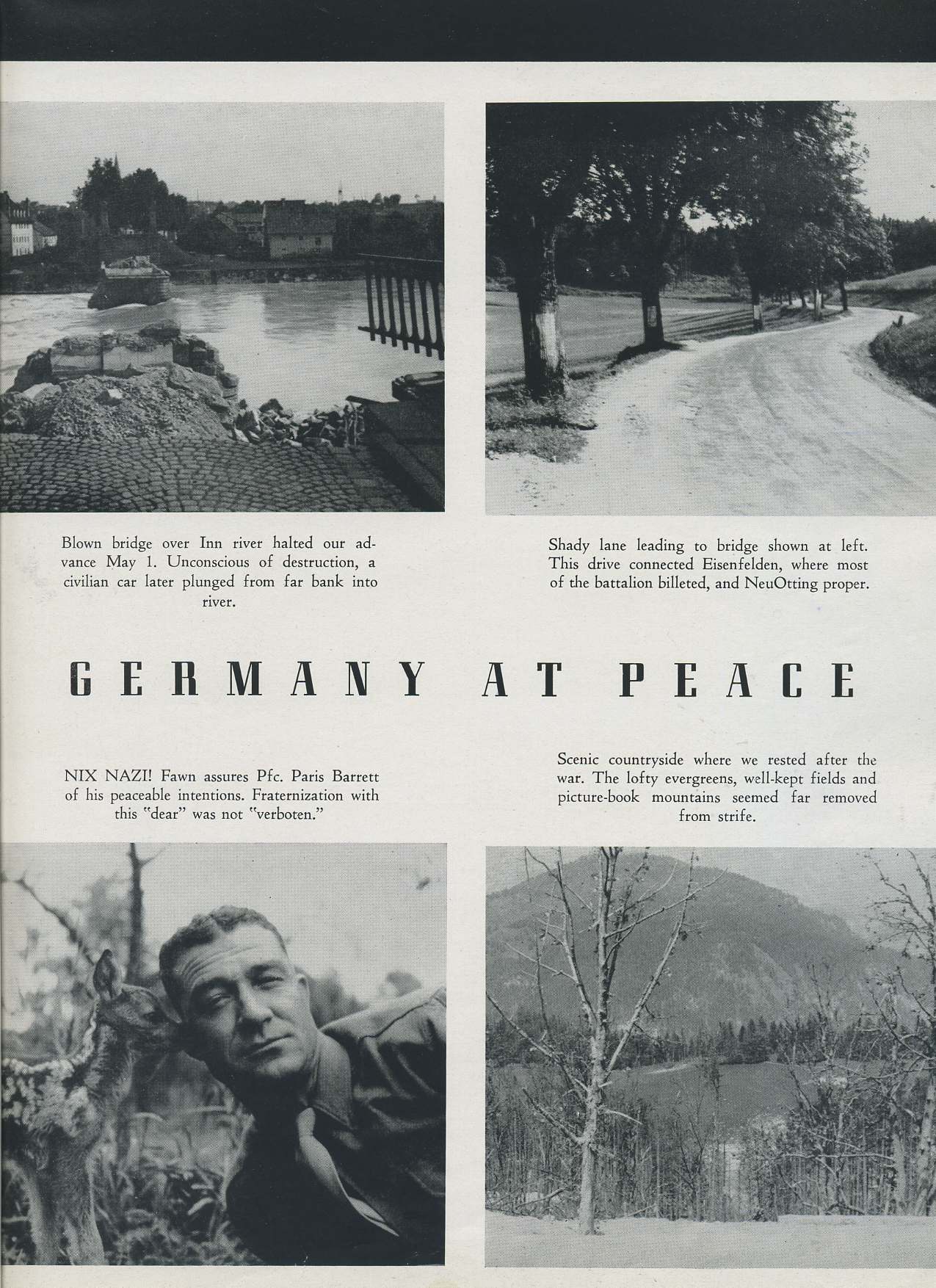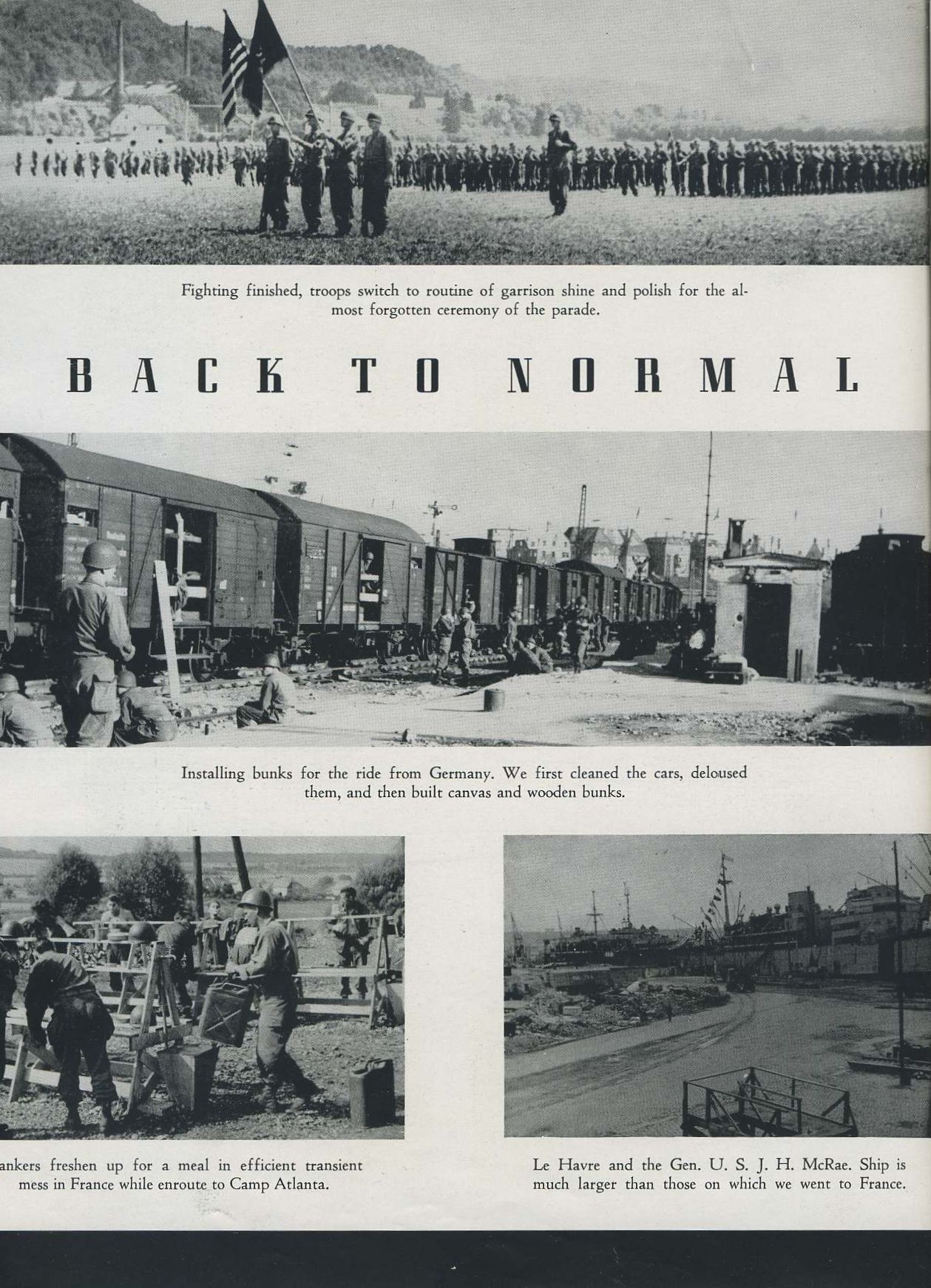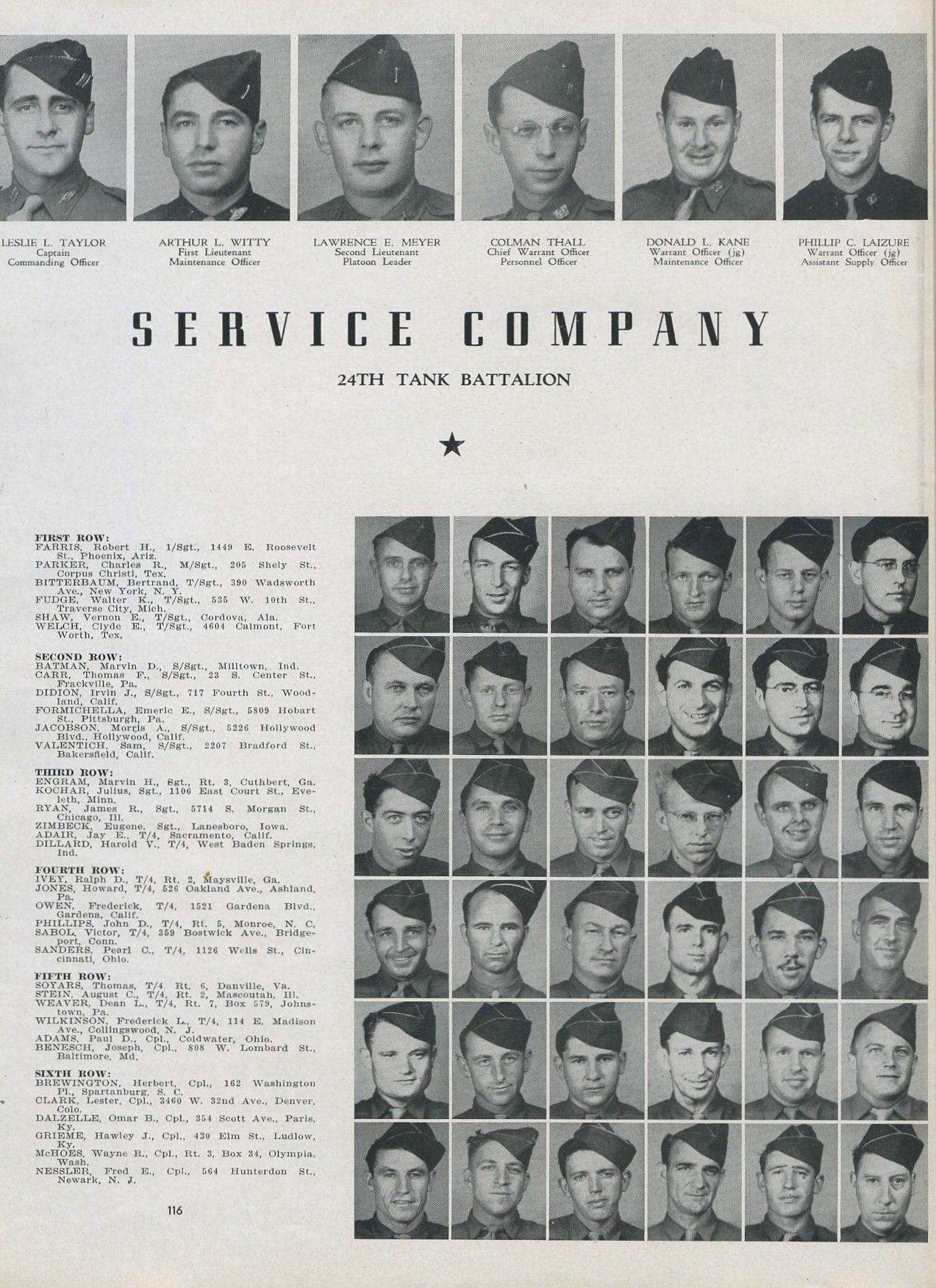
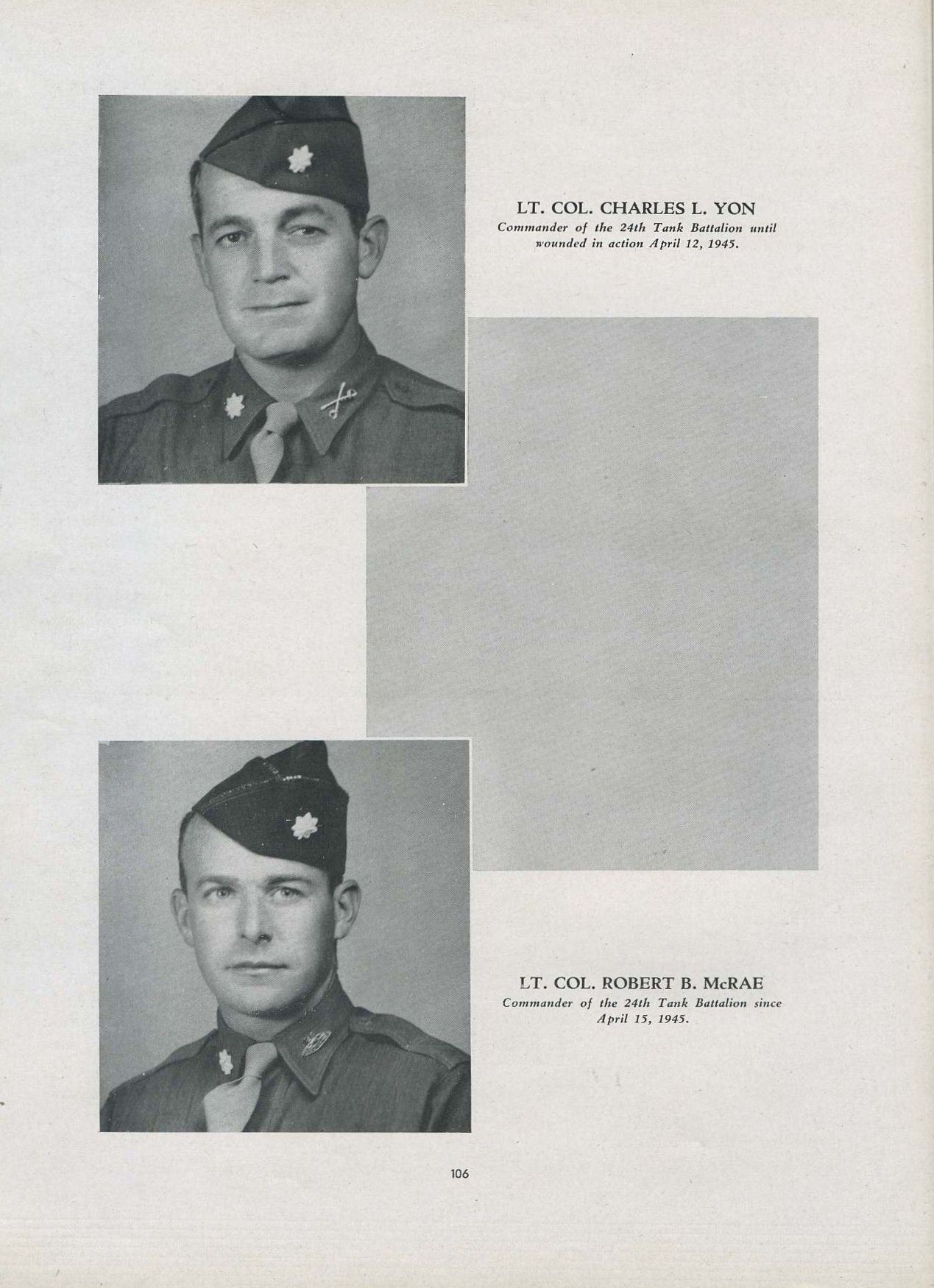
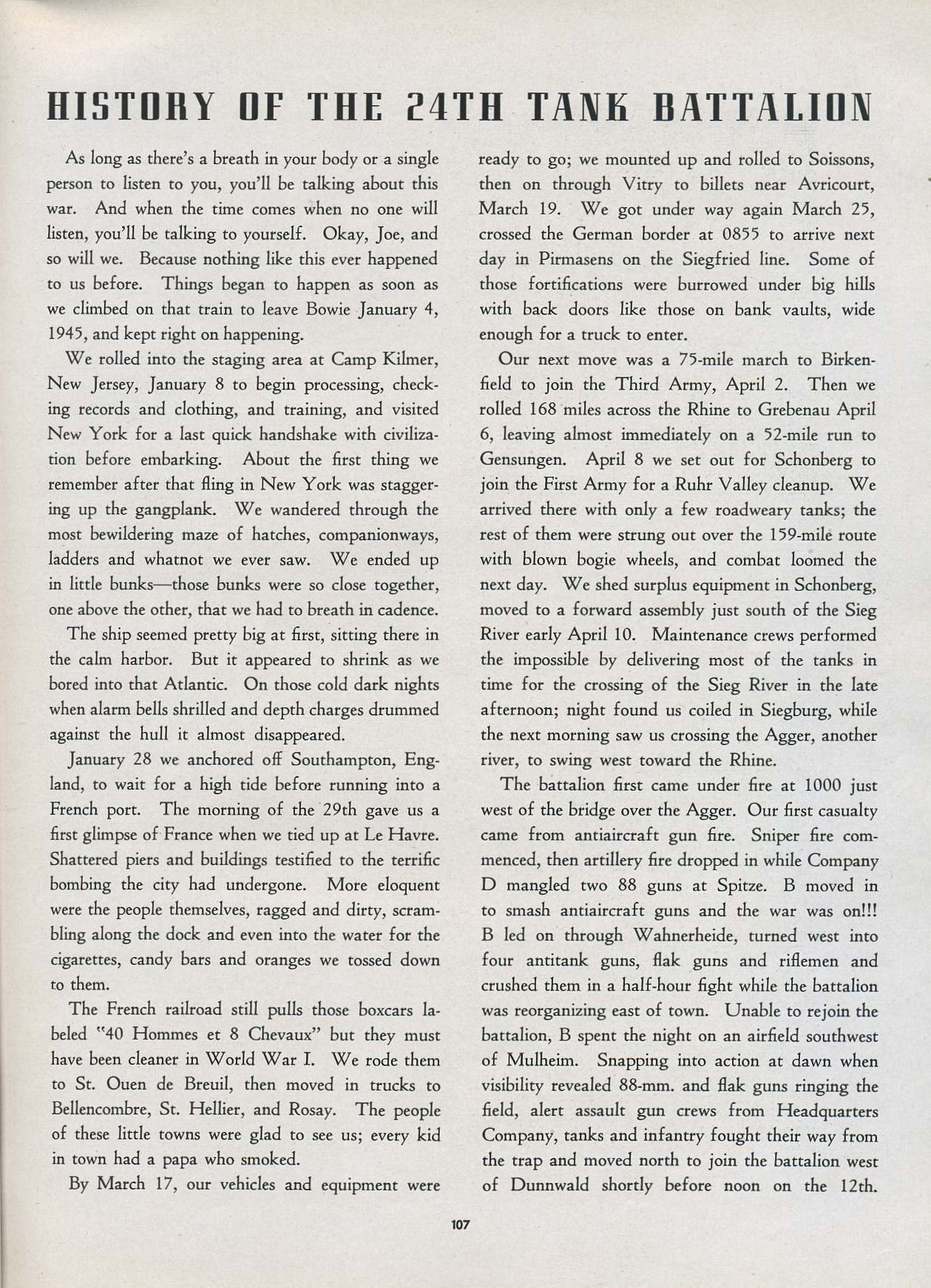
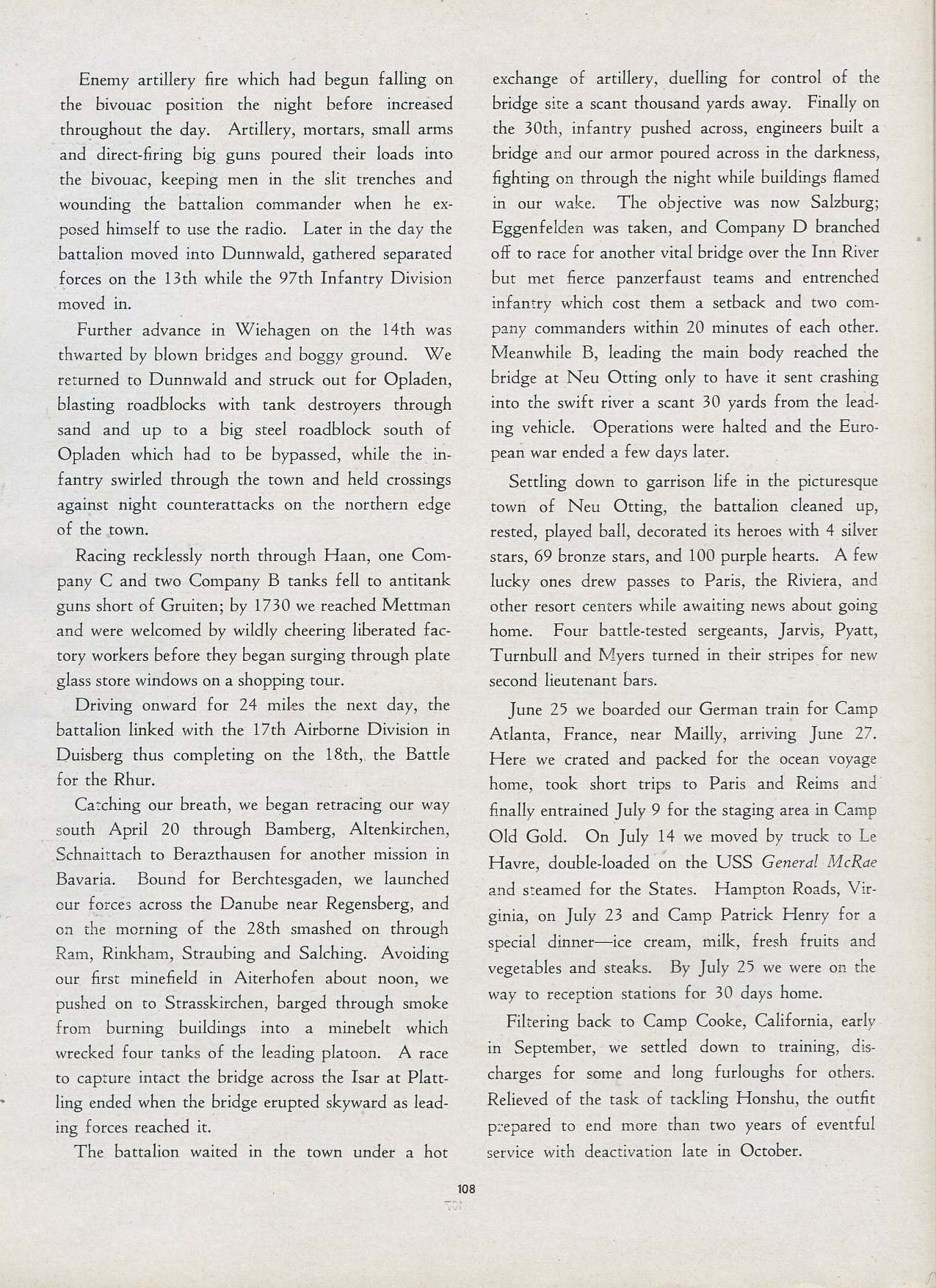
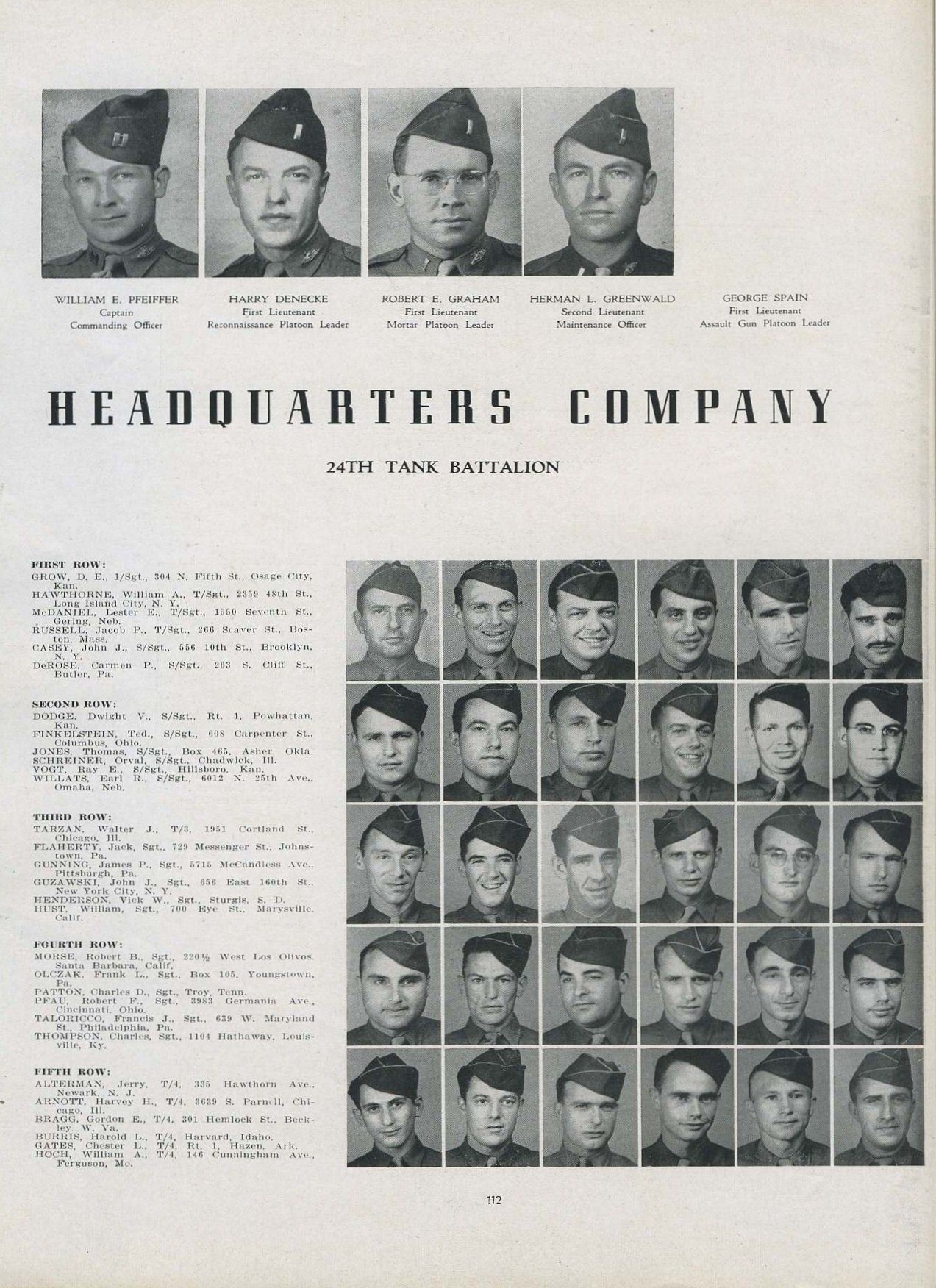
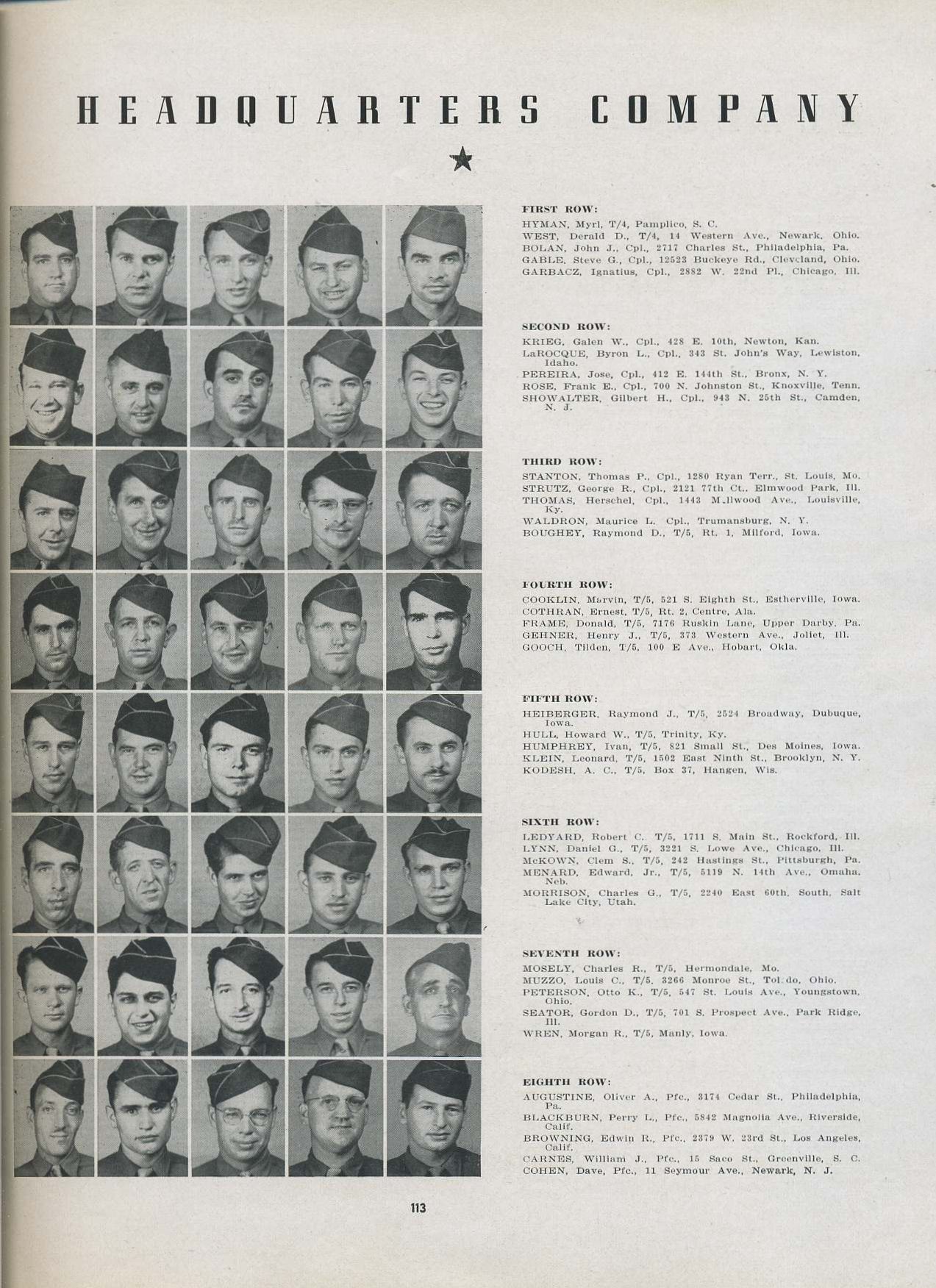
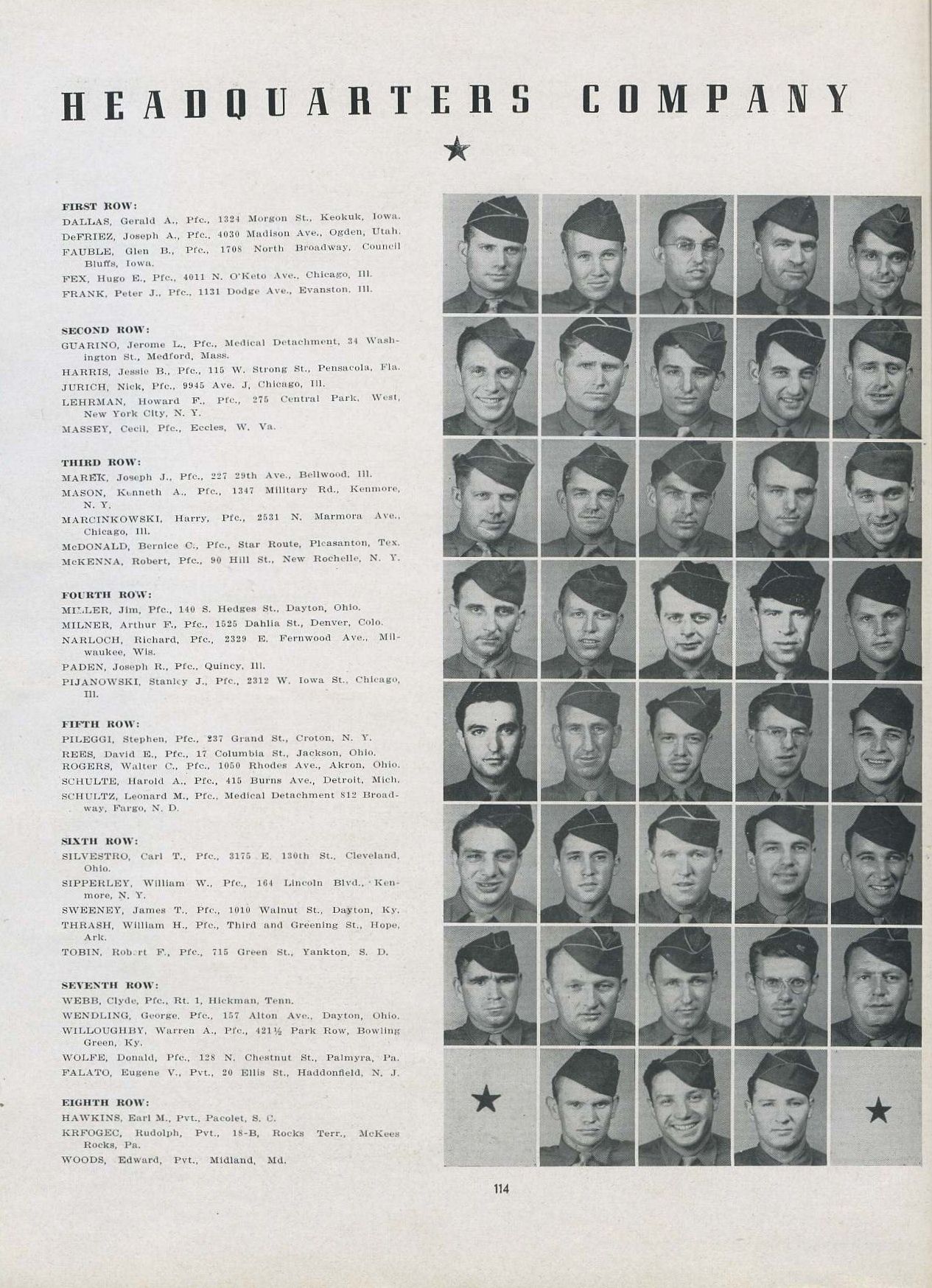
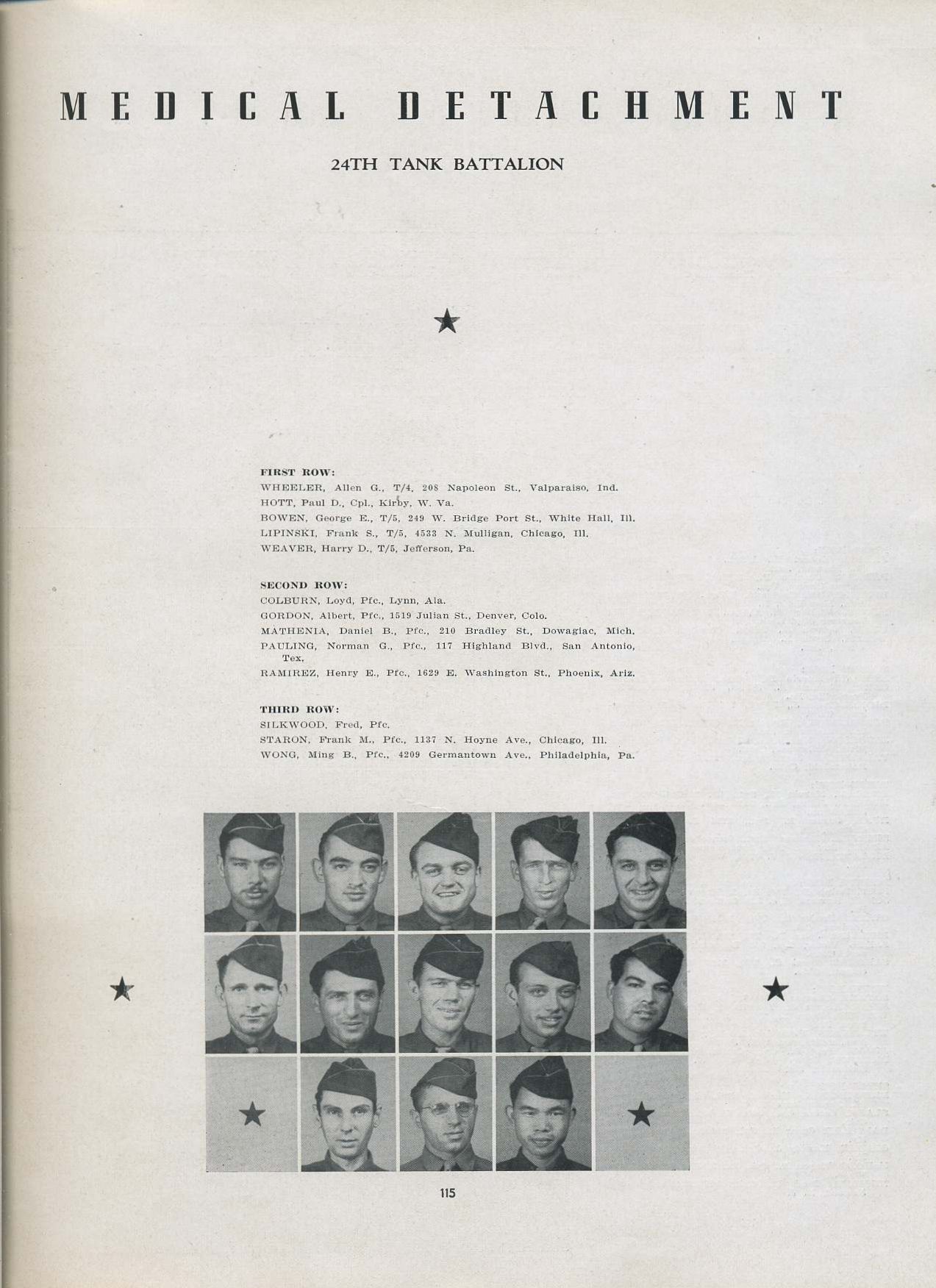

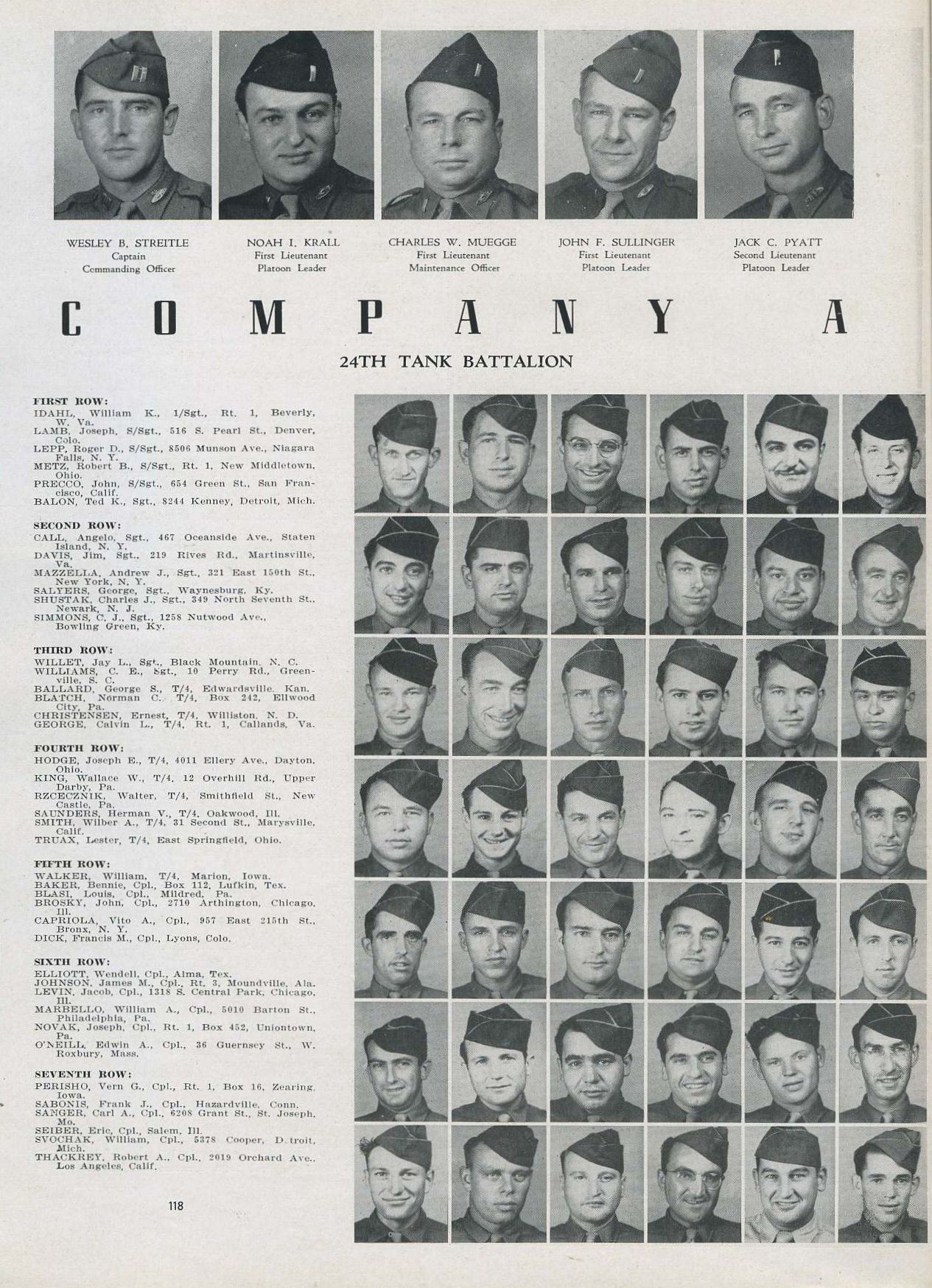
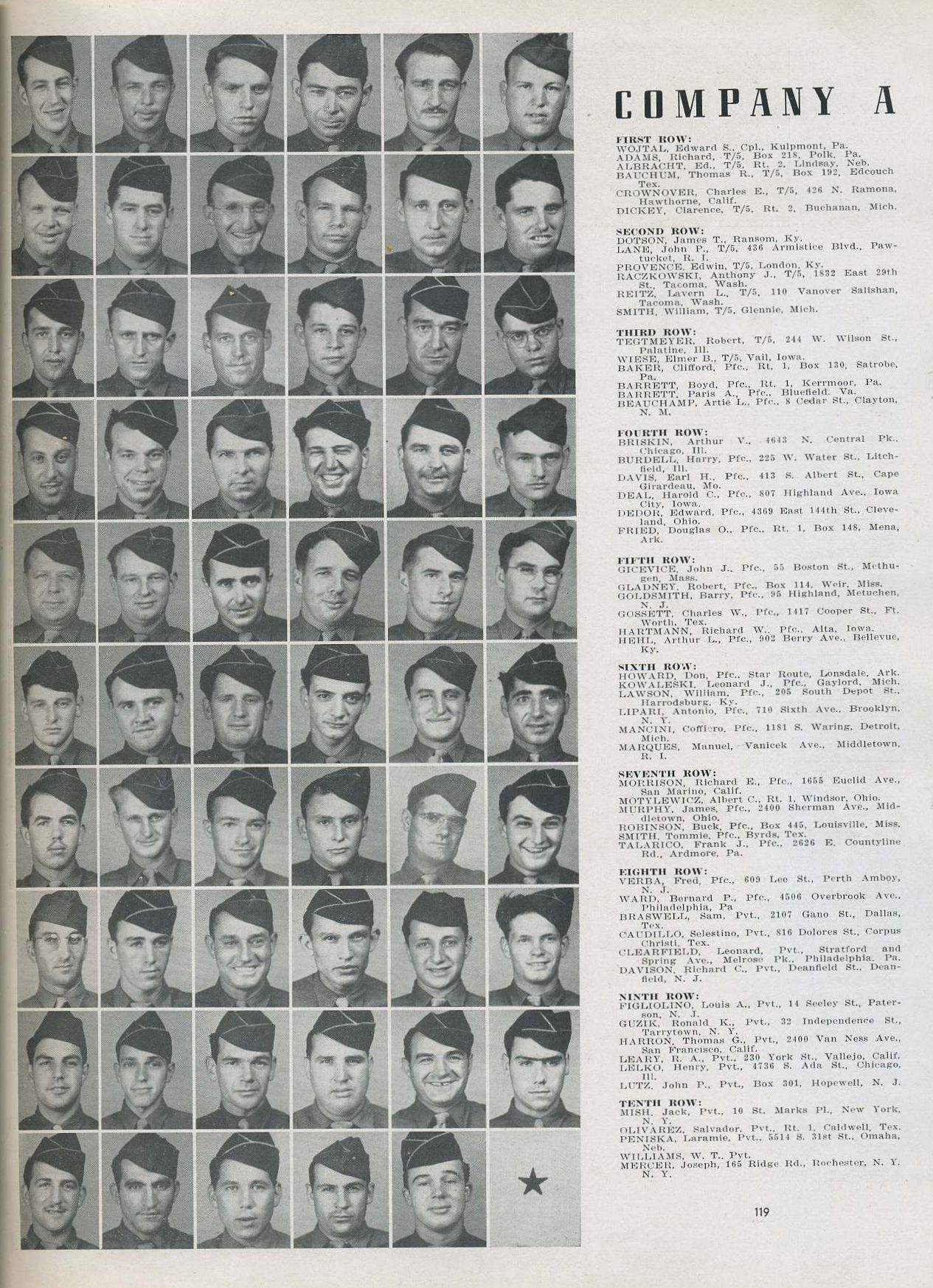
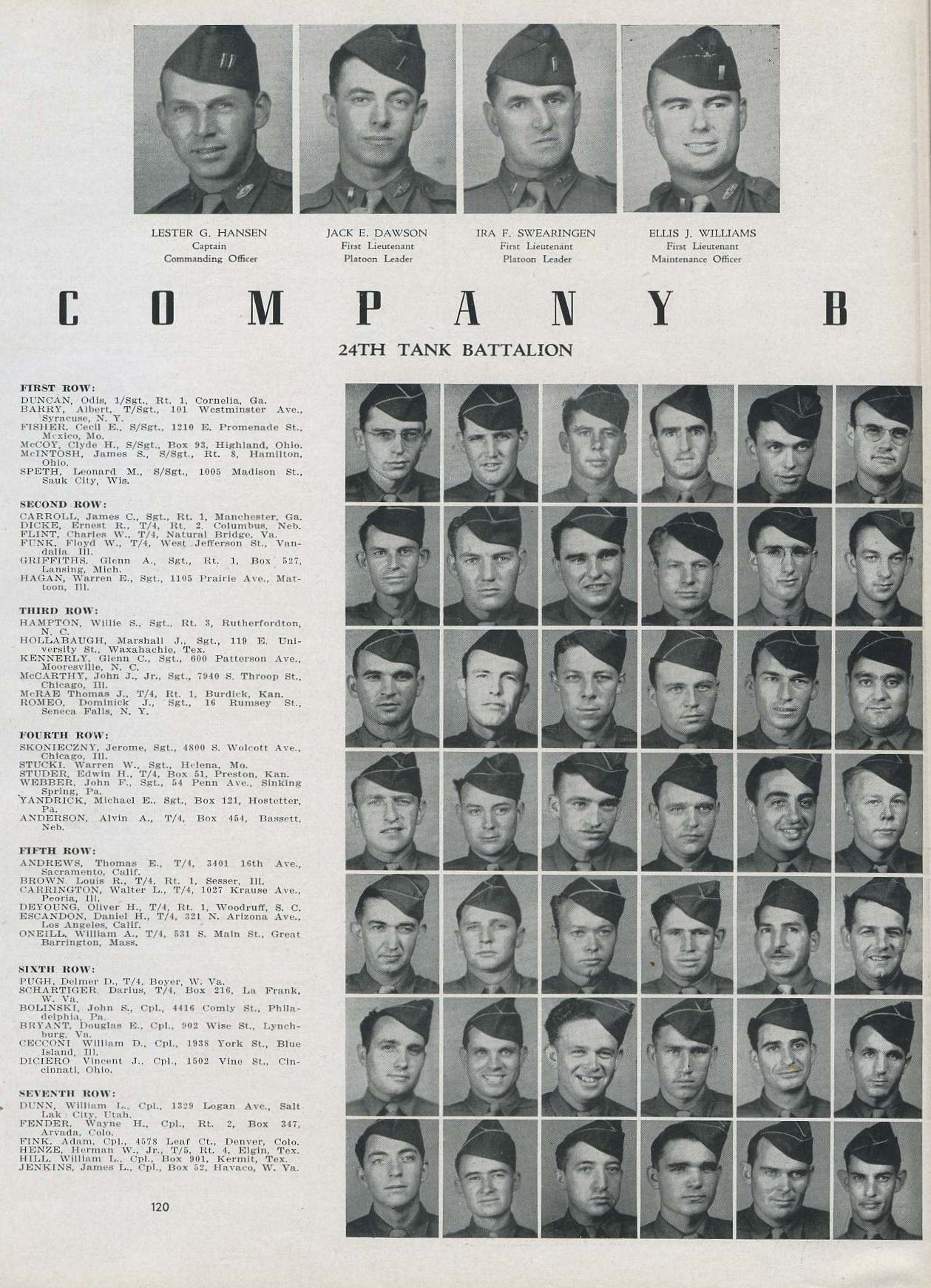
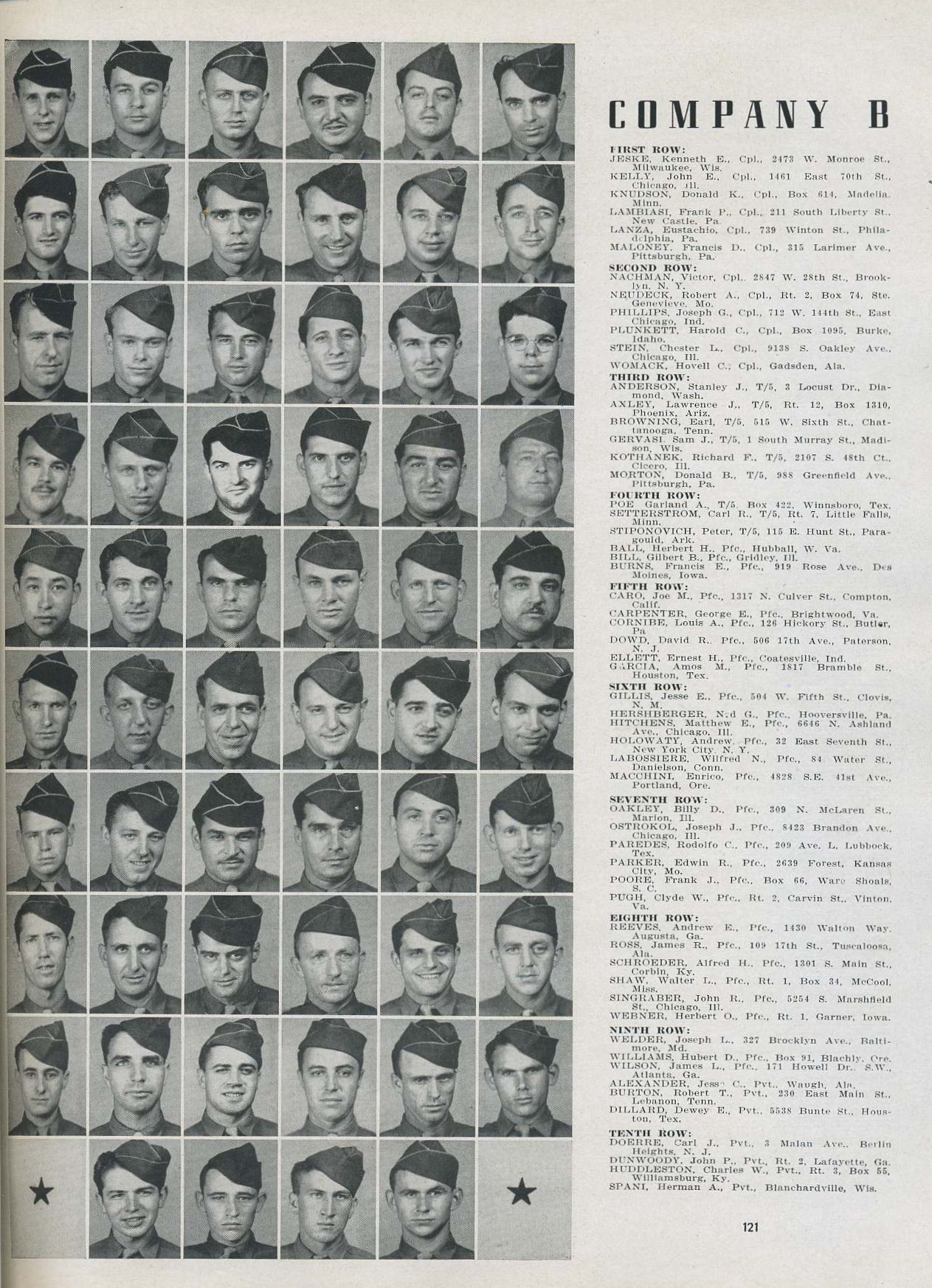
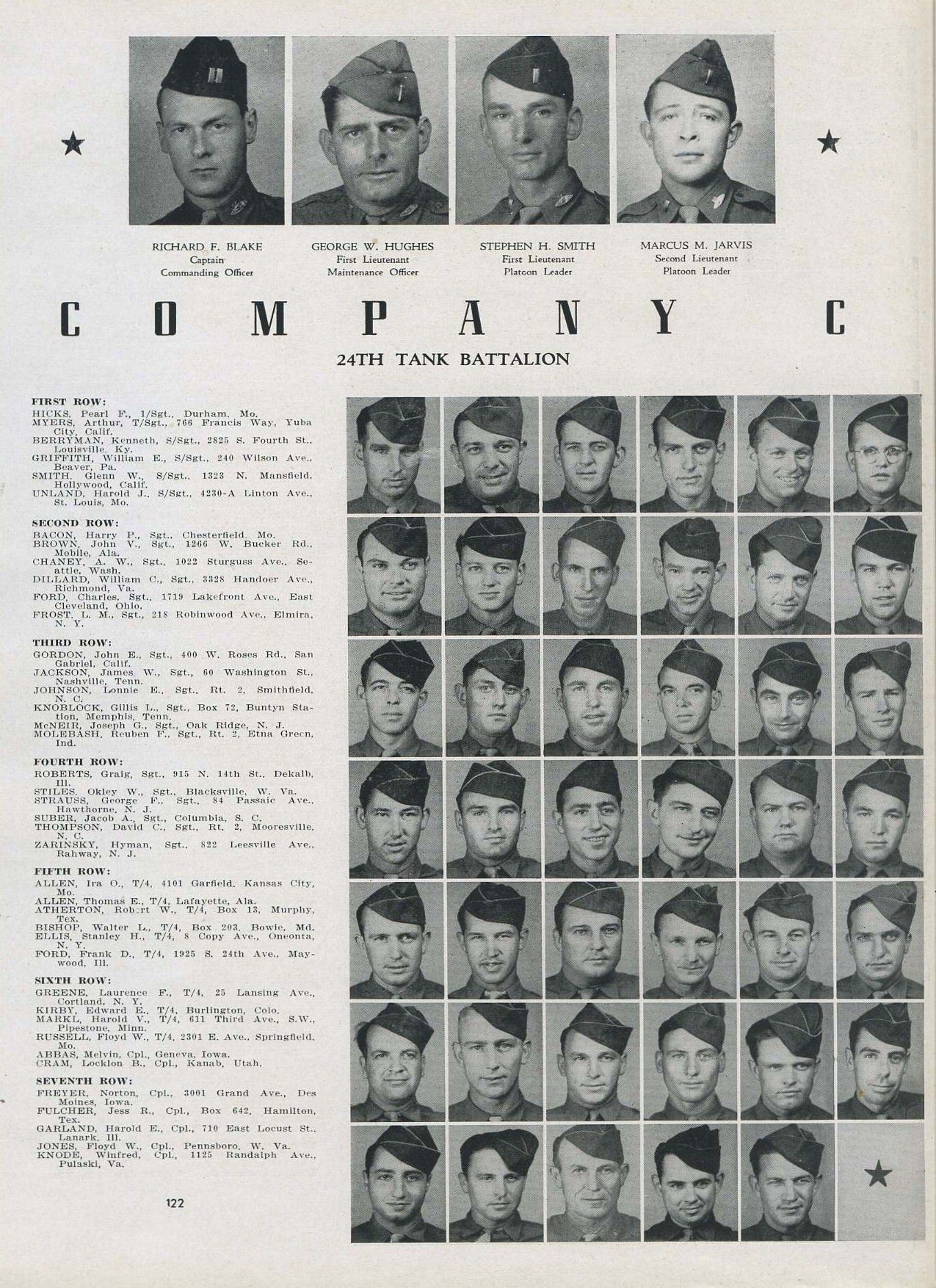
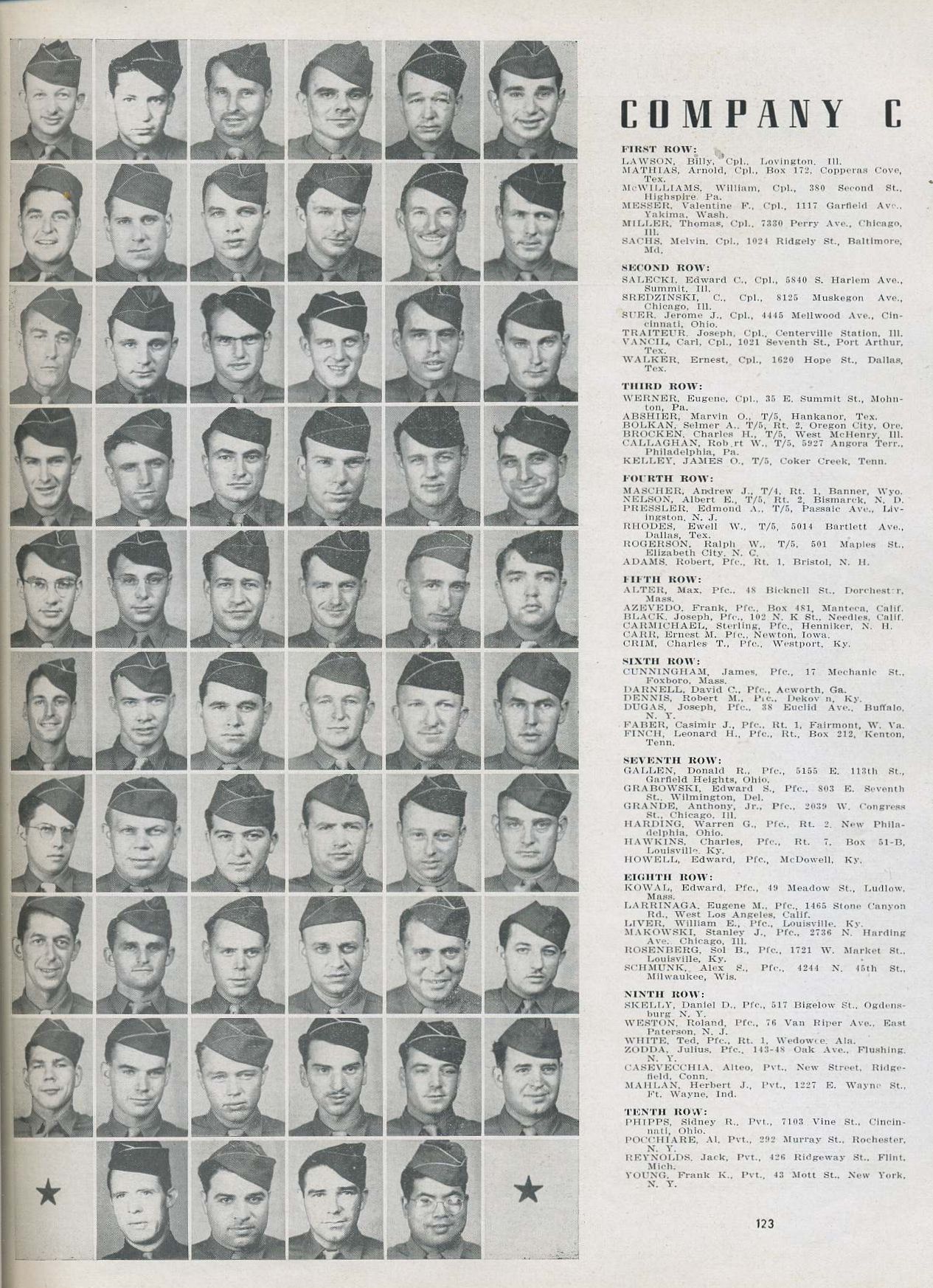
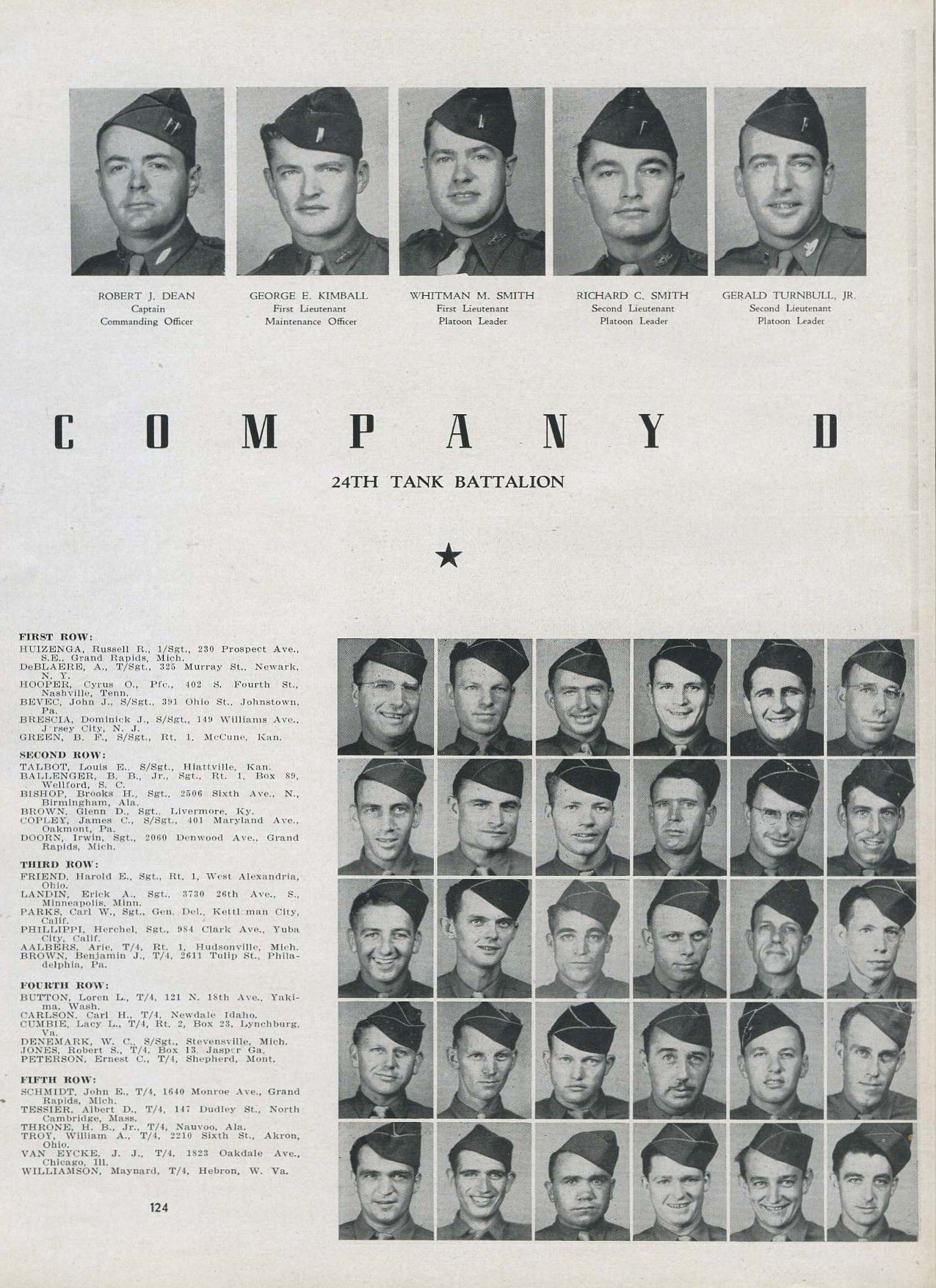
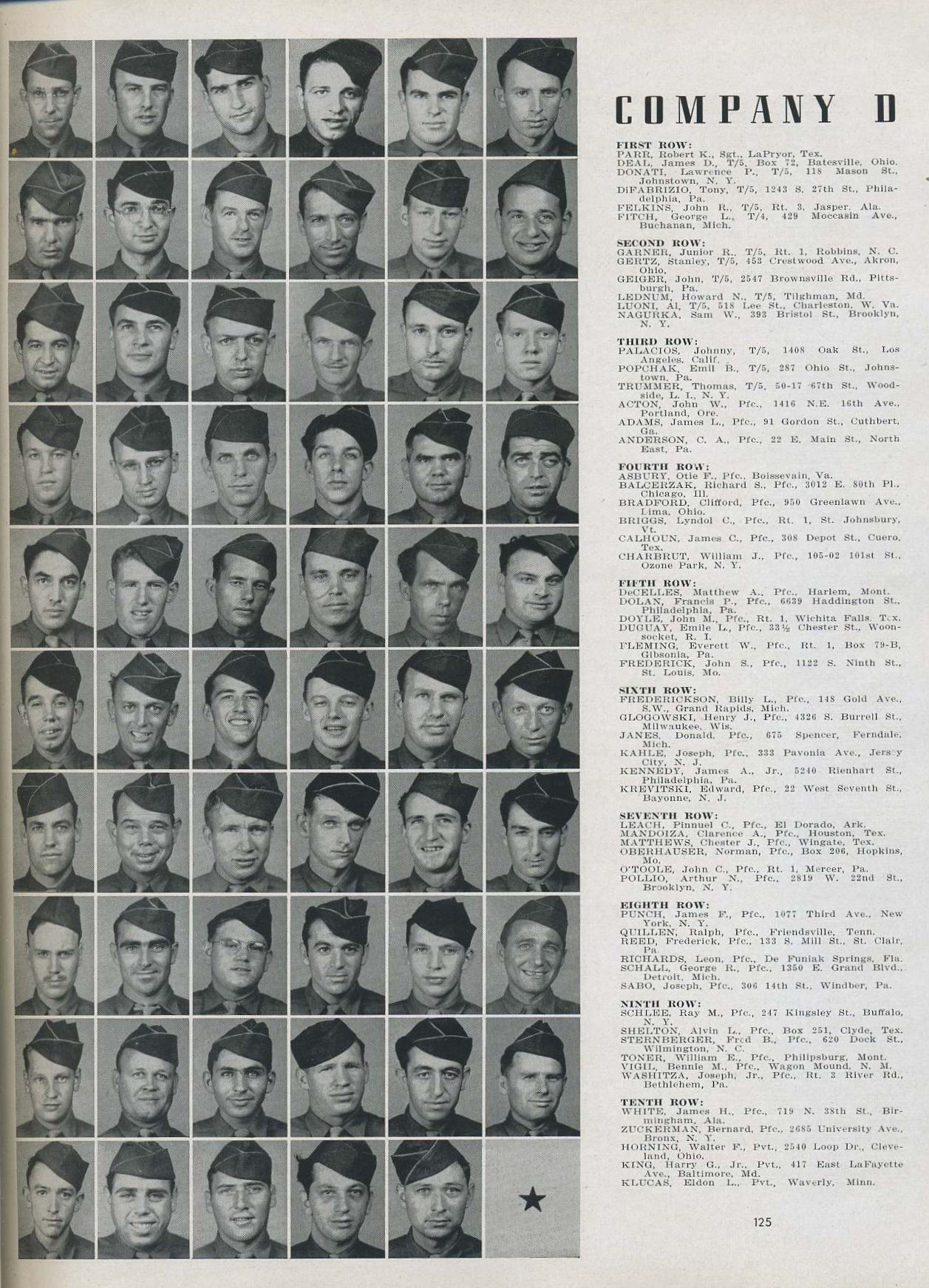
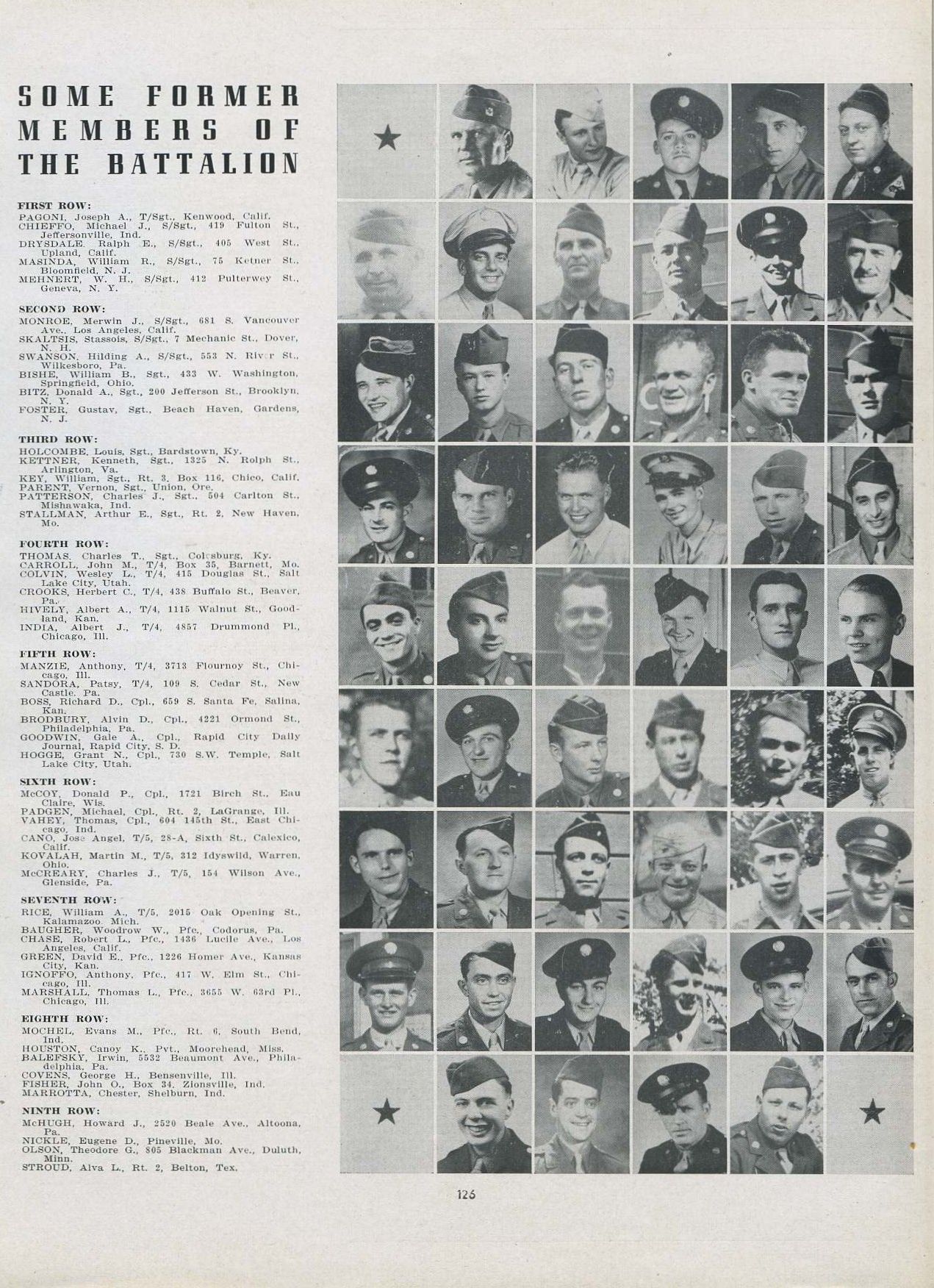
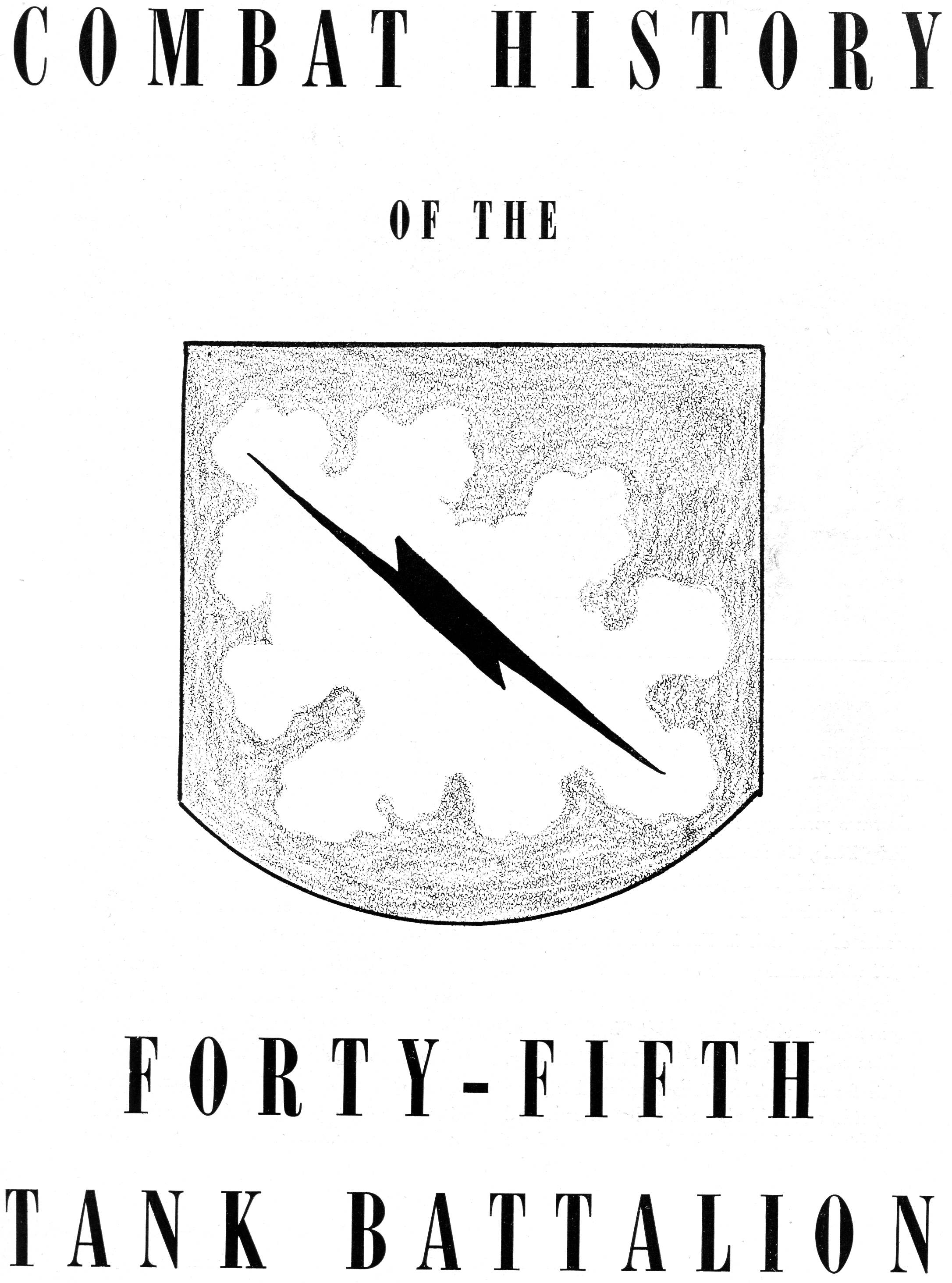
.jpg)
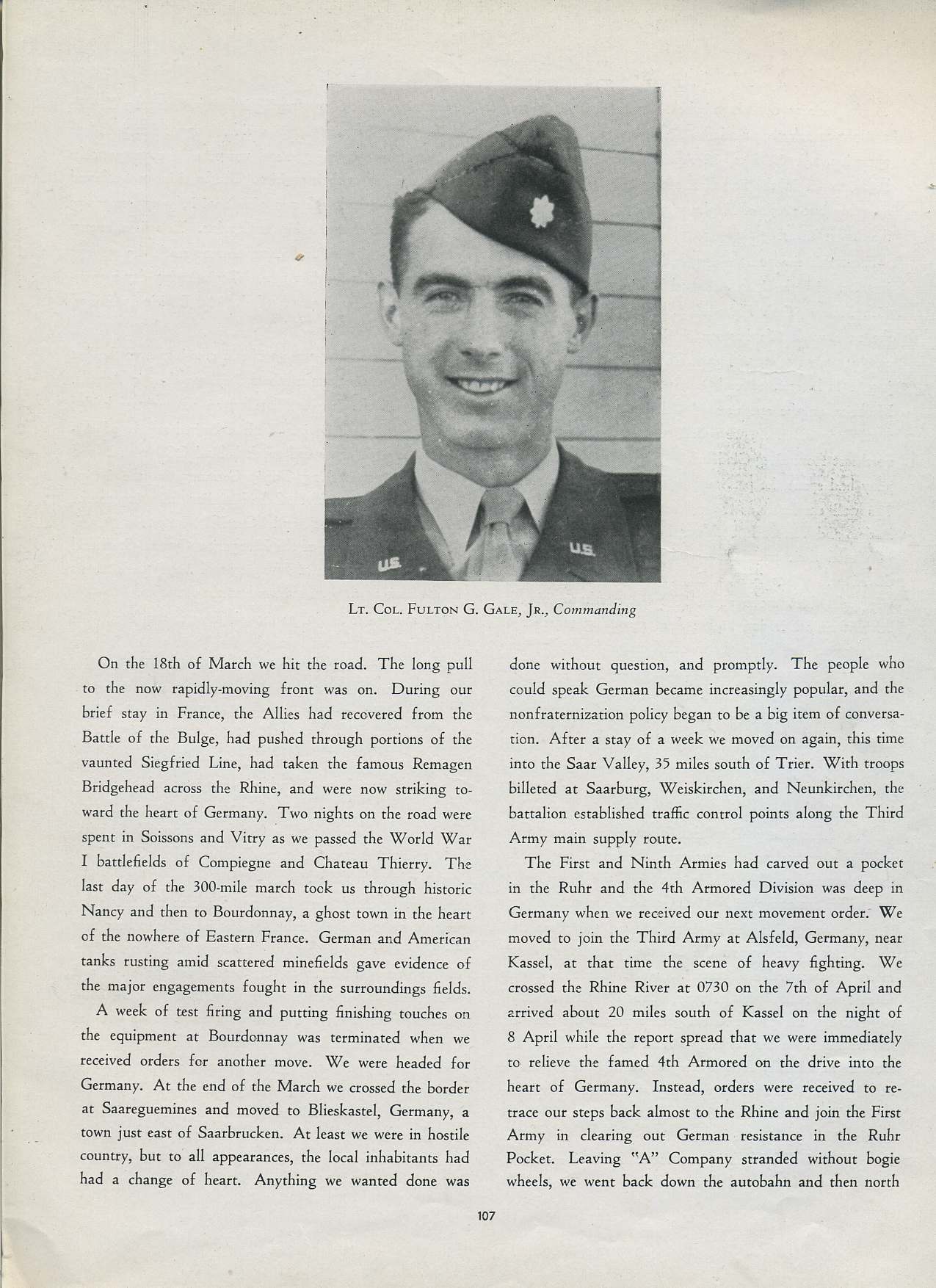
.jpg)
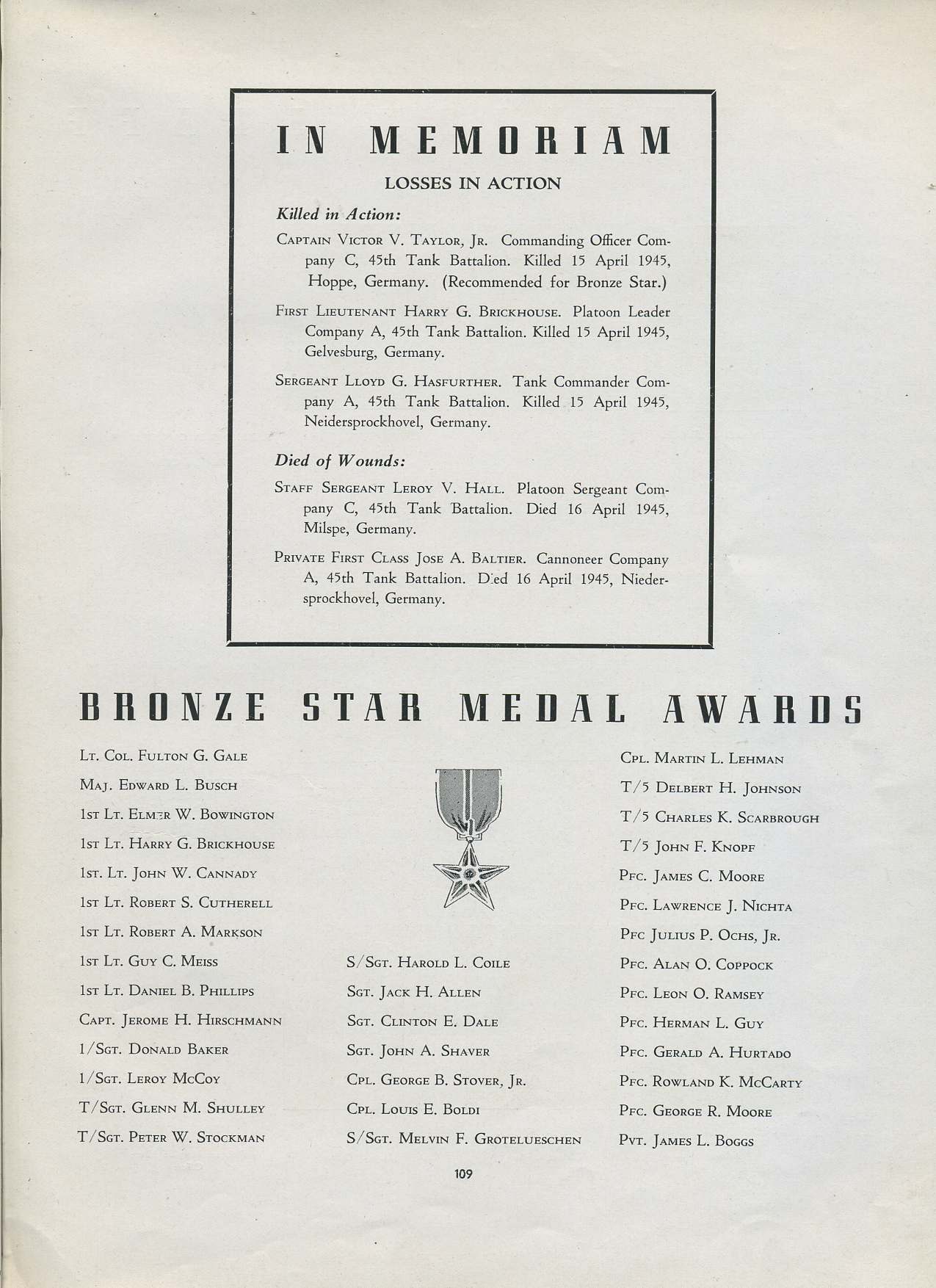
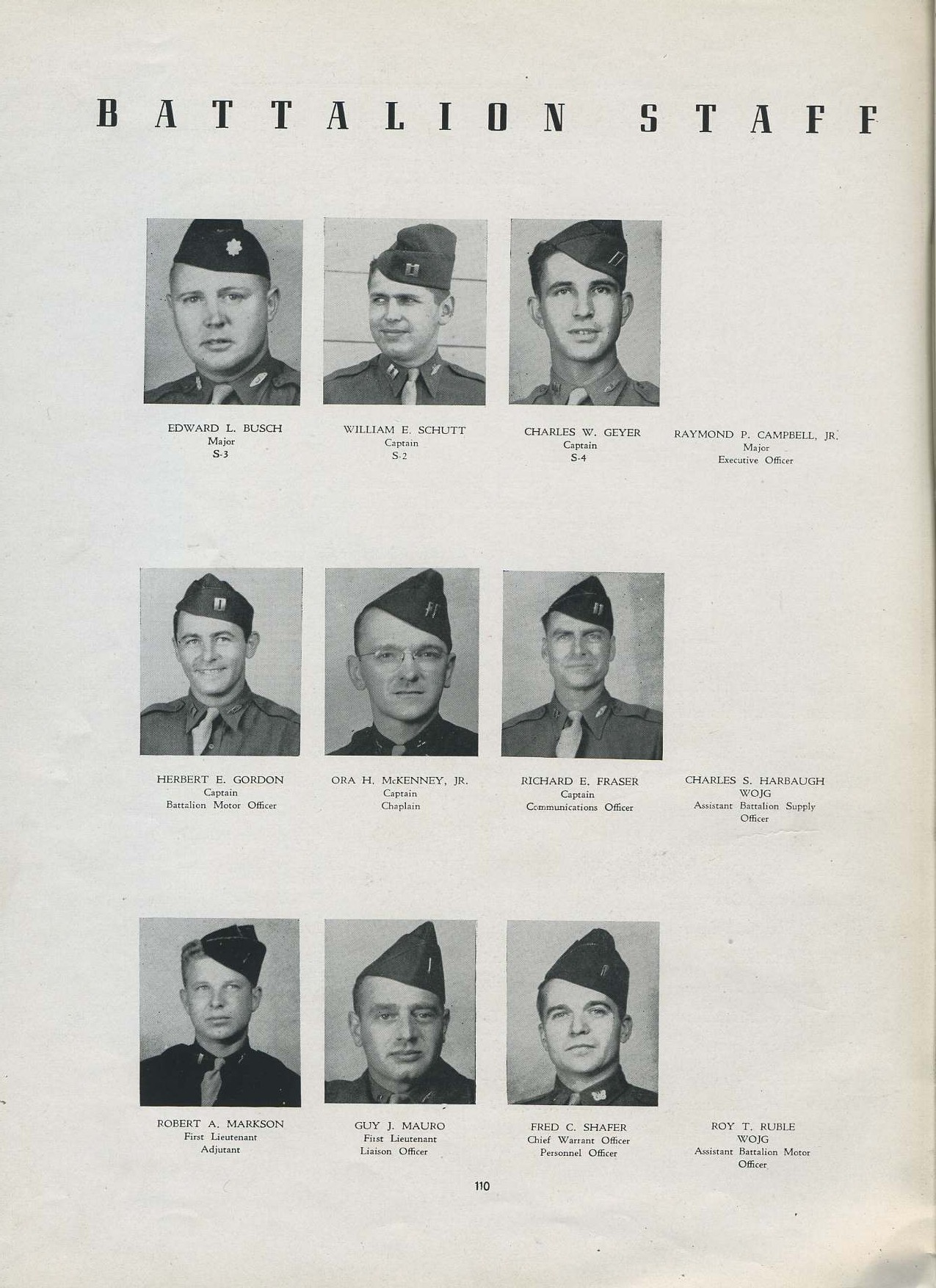
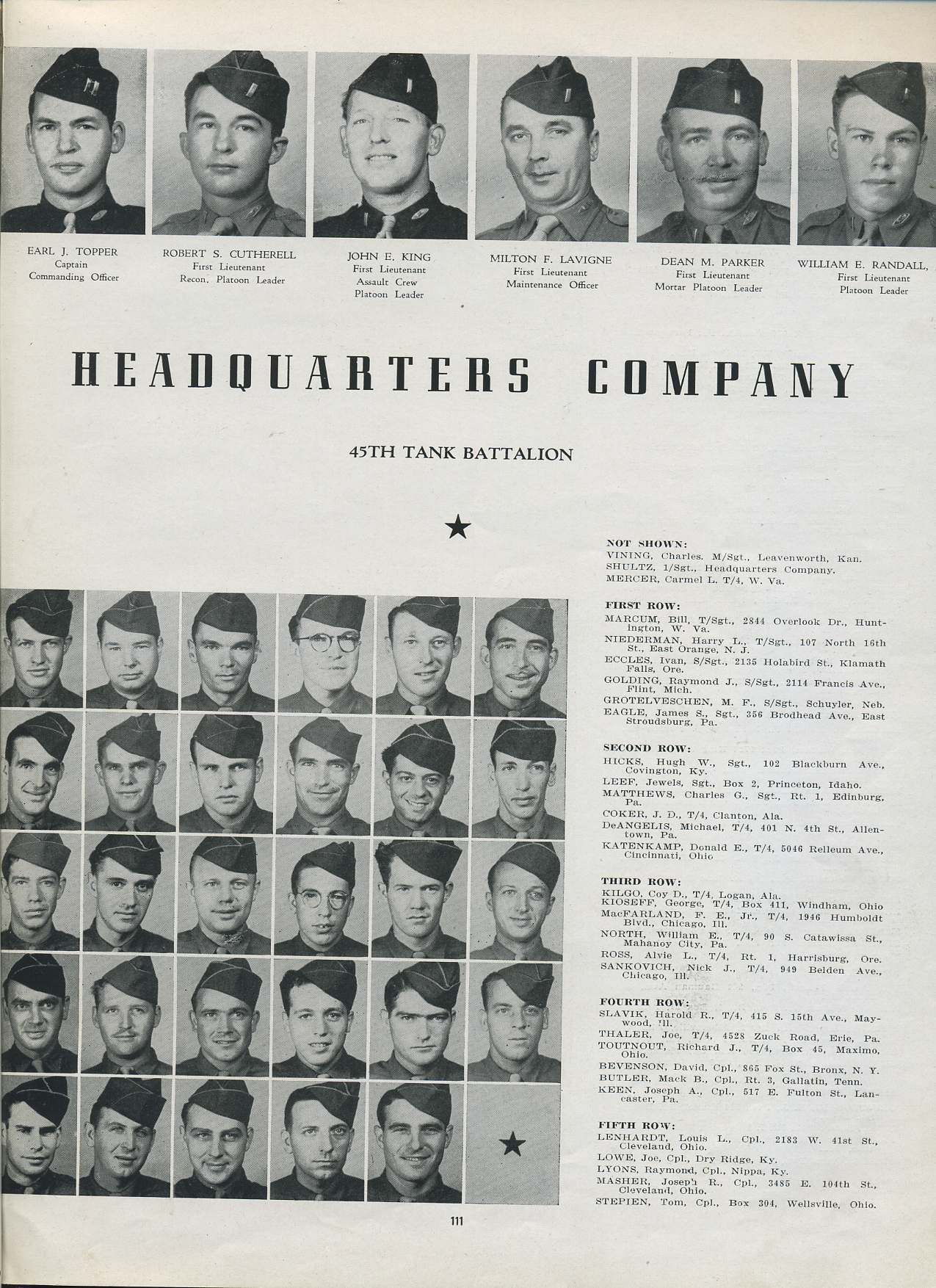
.jpg)
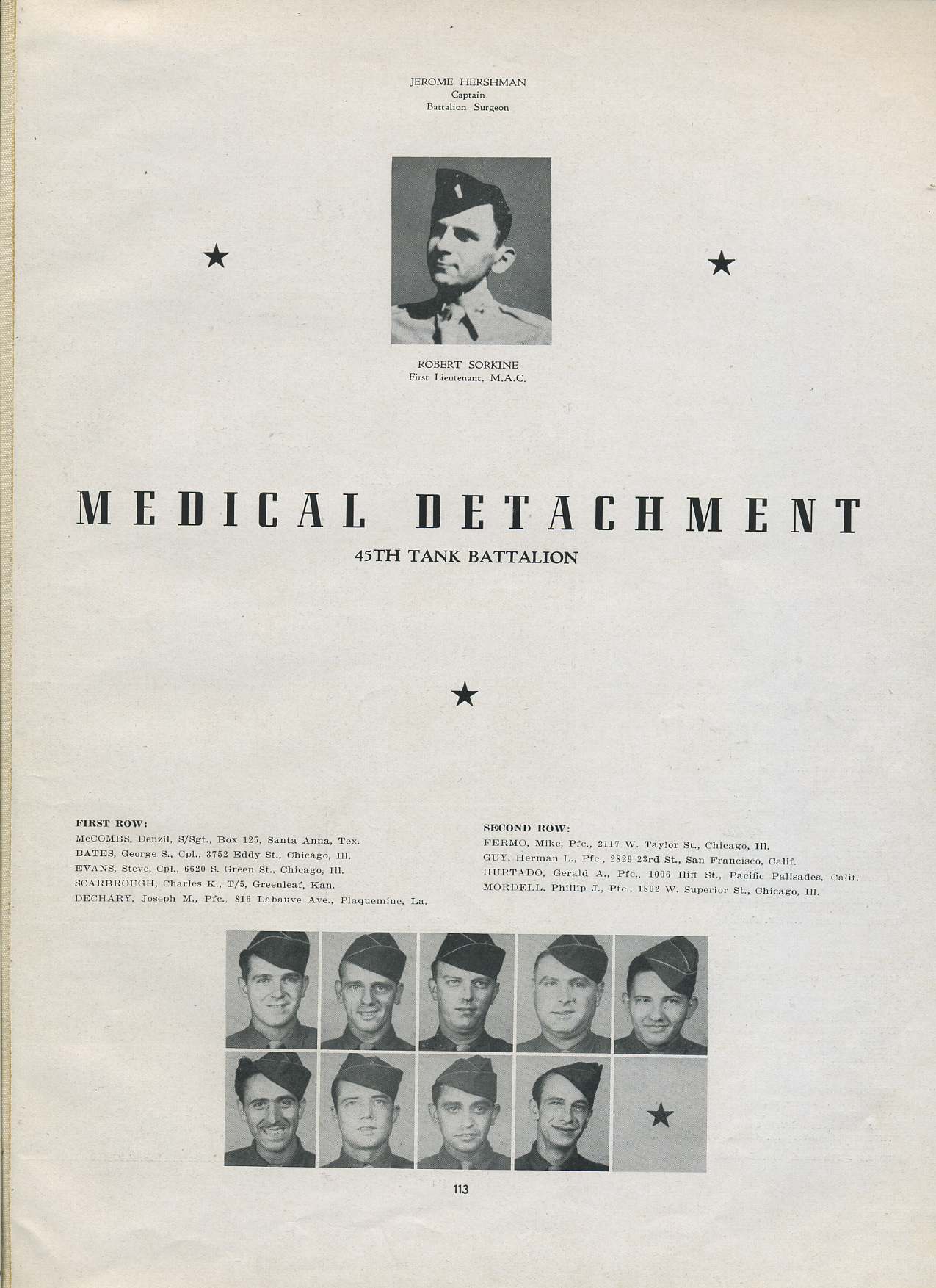
.jpg)
_(2).jpg)
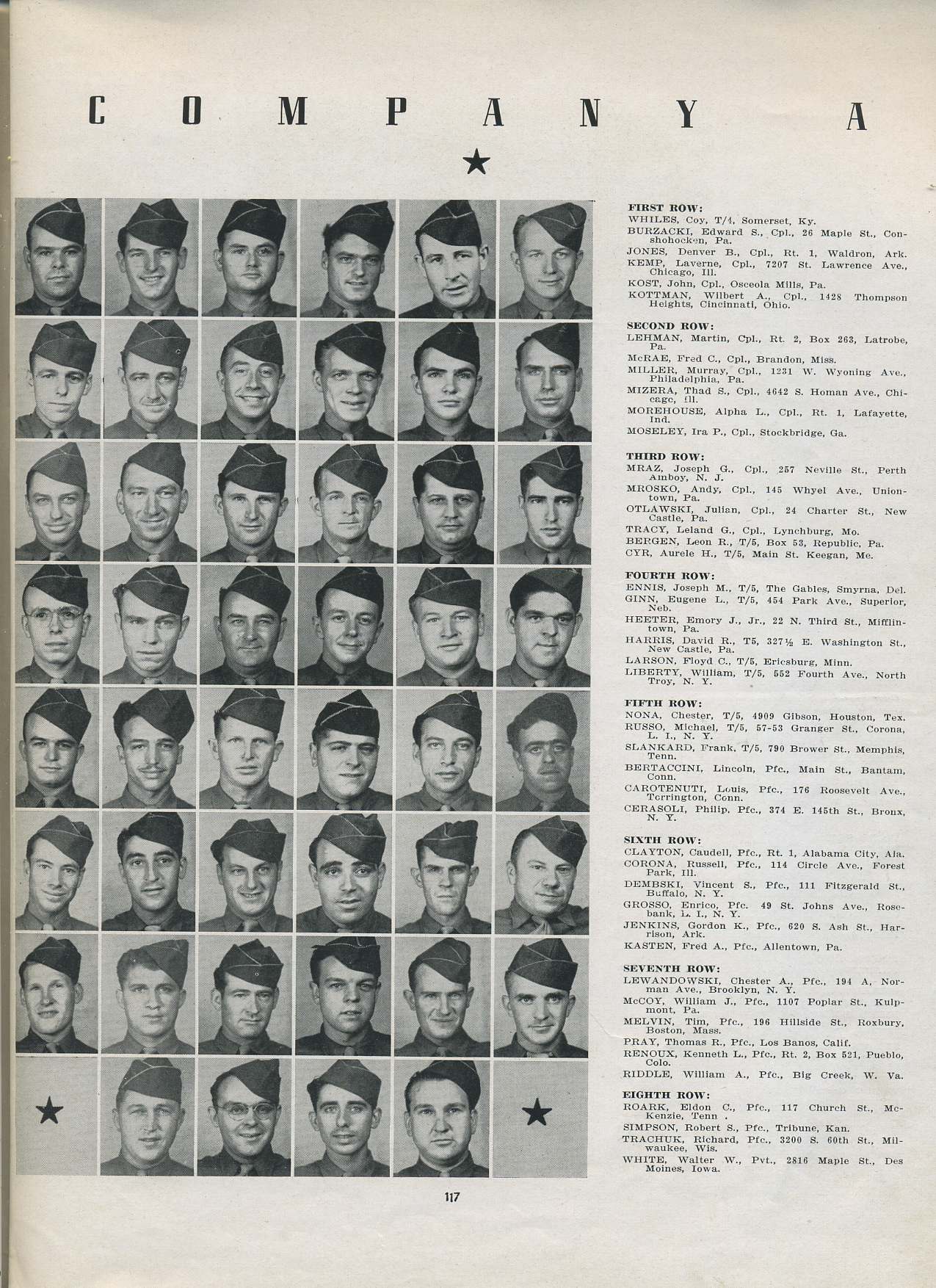
.jpg)
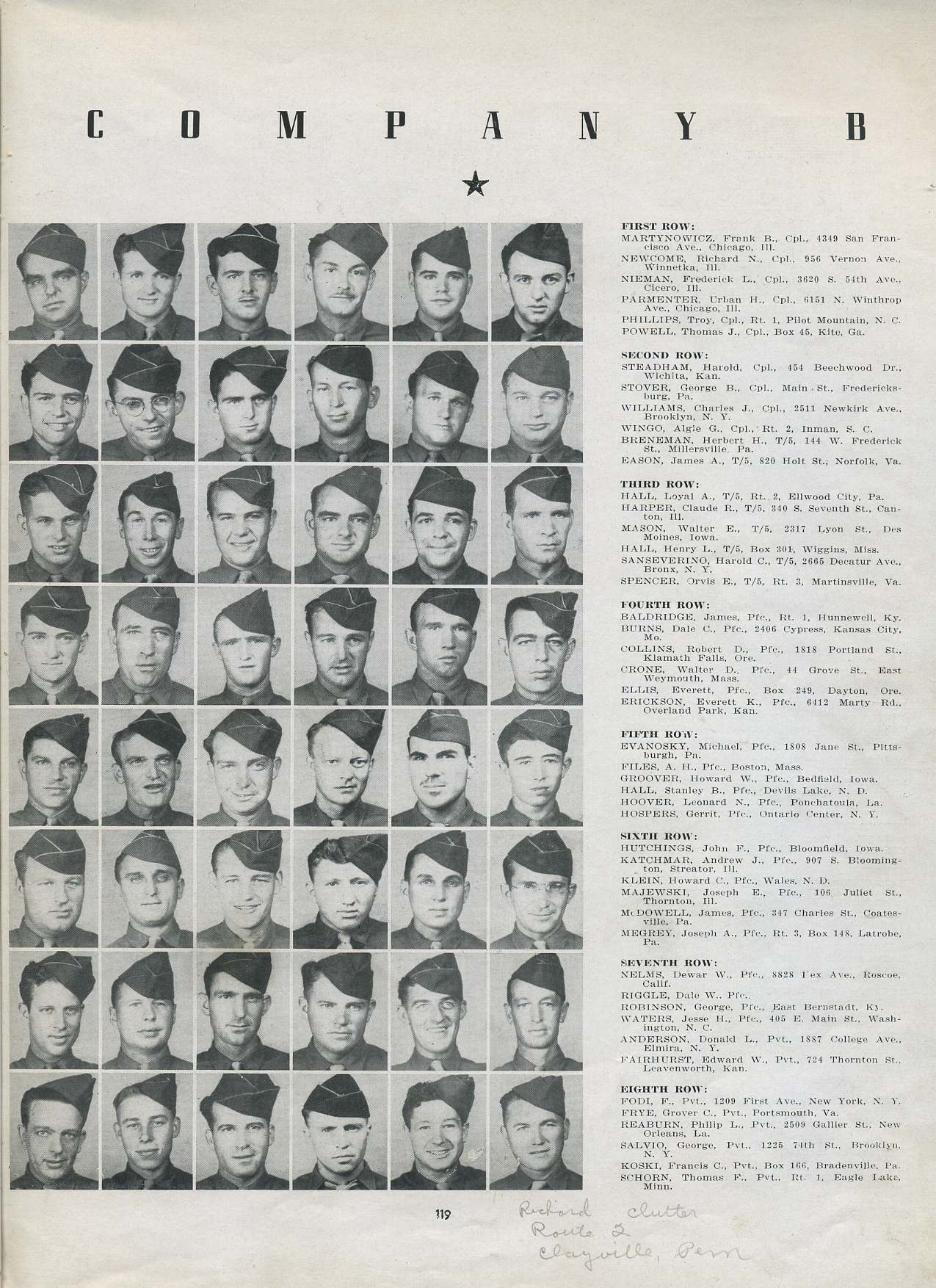
.jpg)
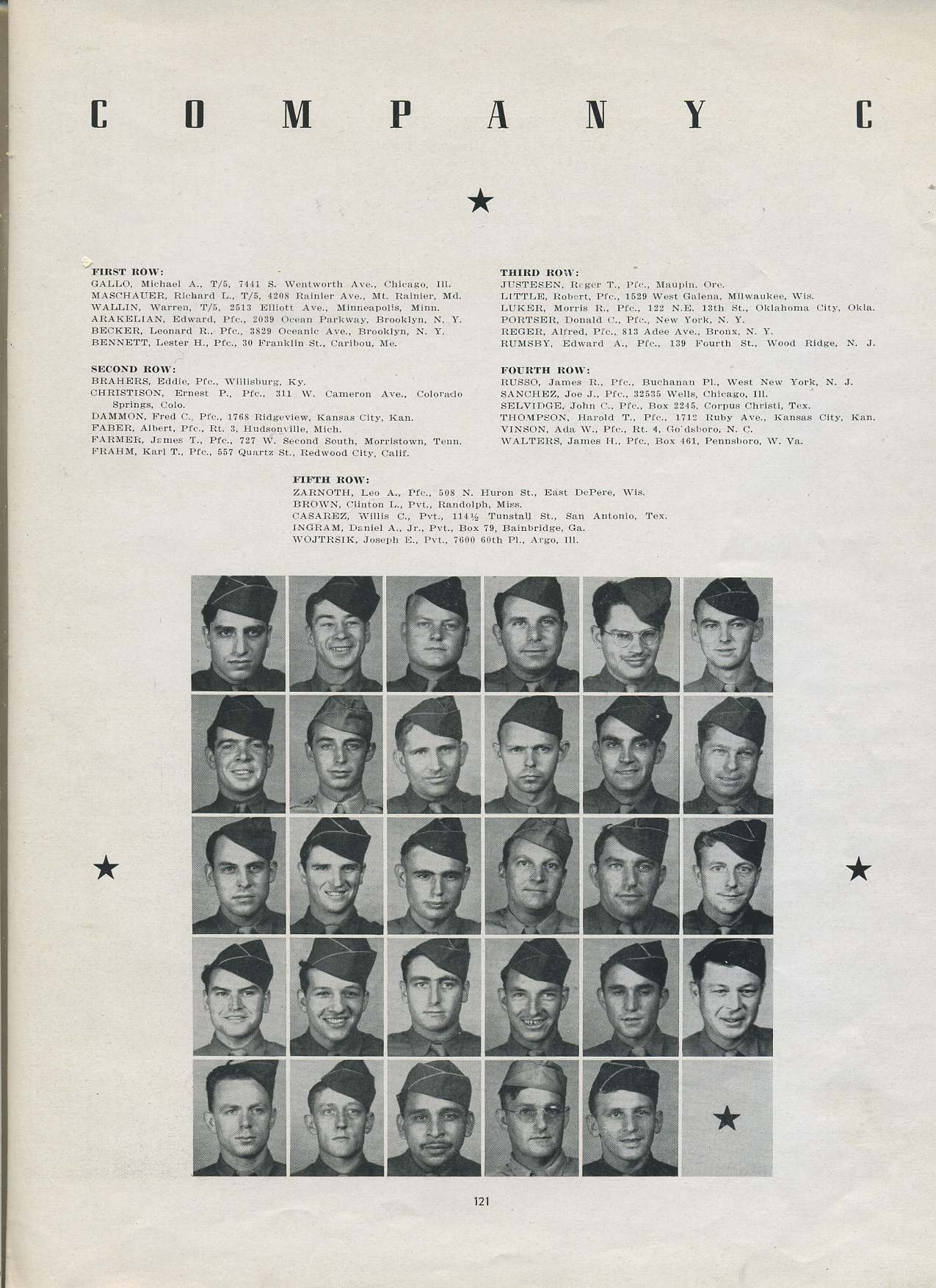
.jpg)
.jpg)
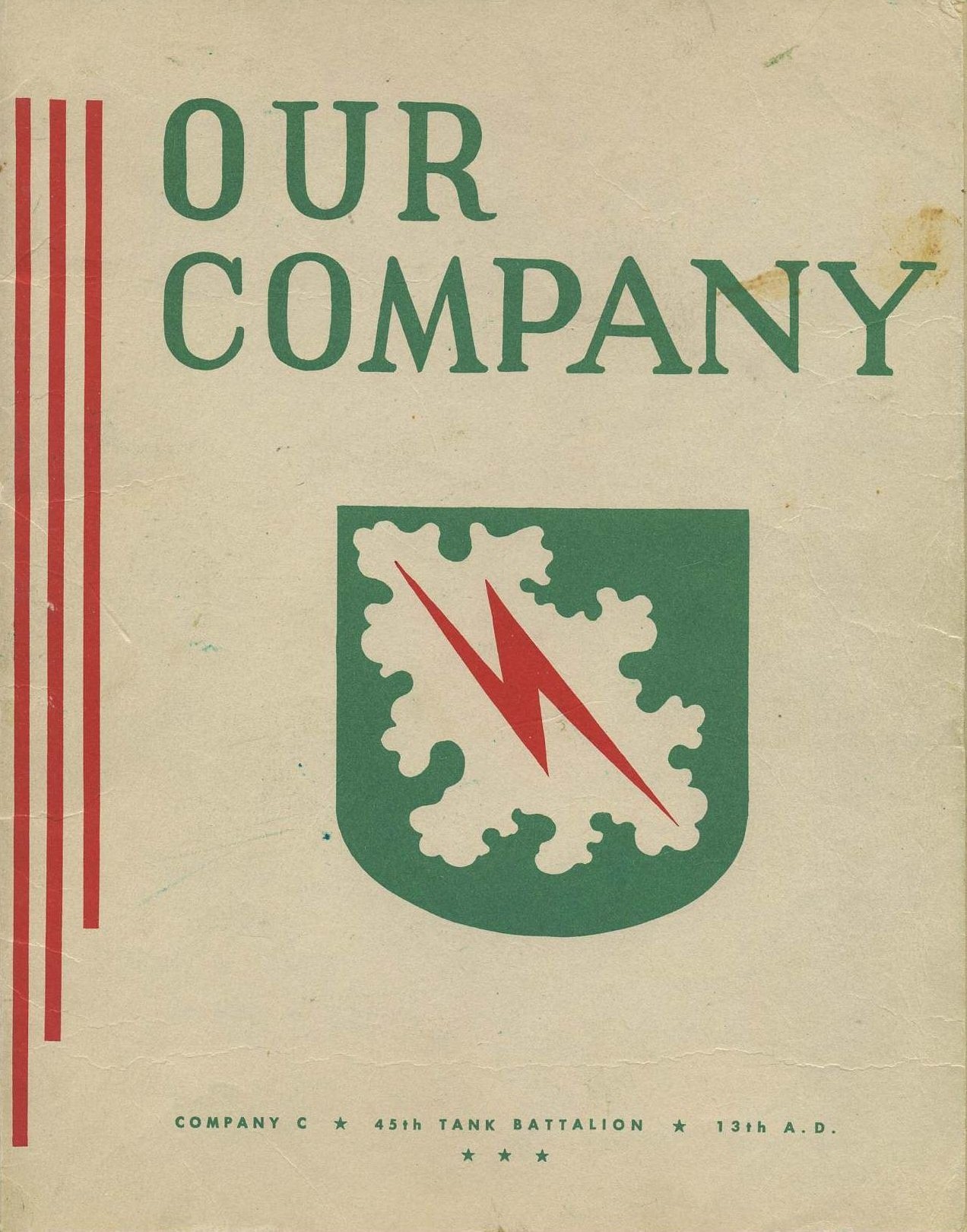
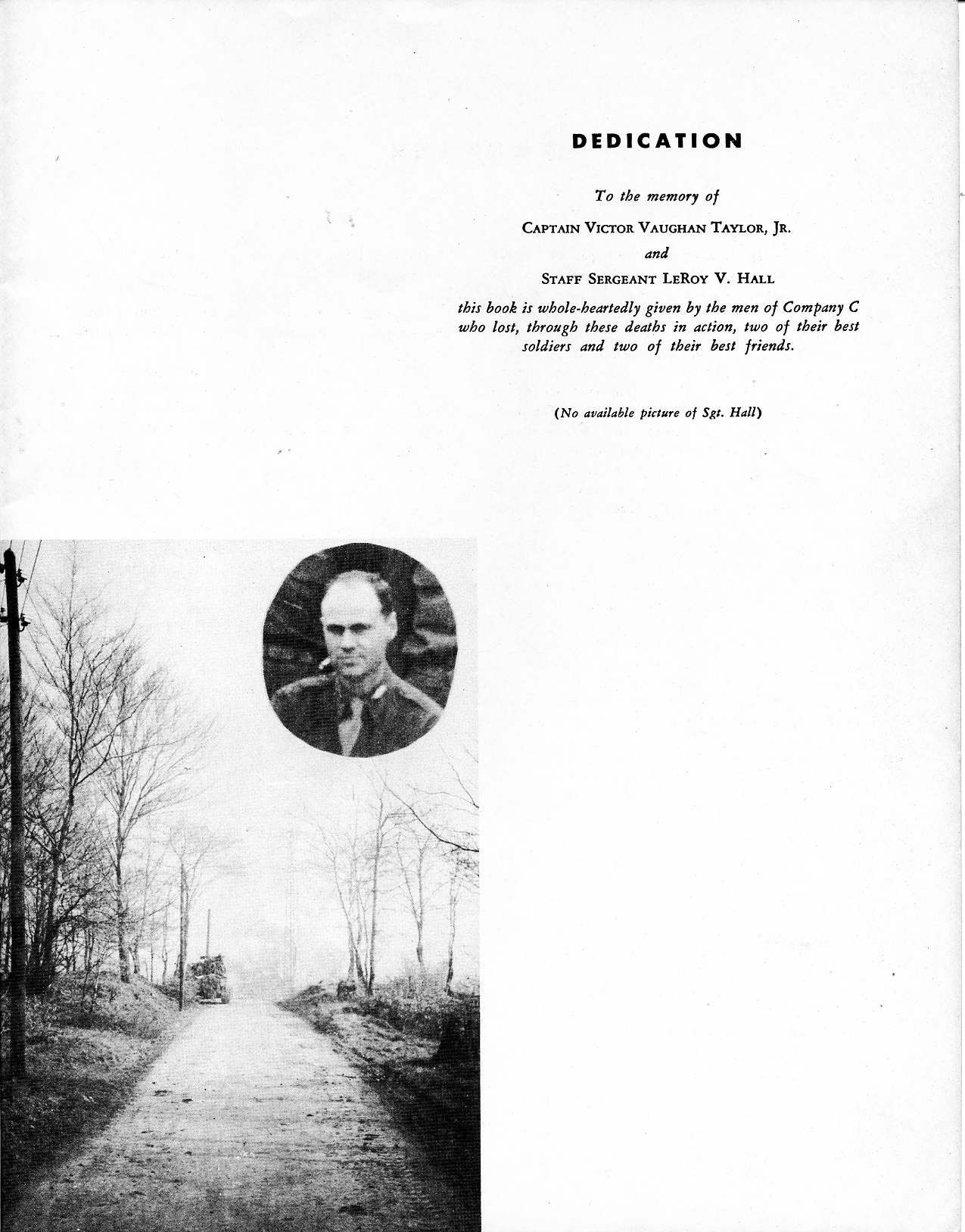
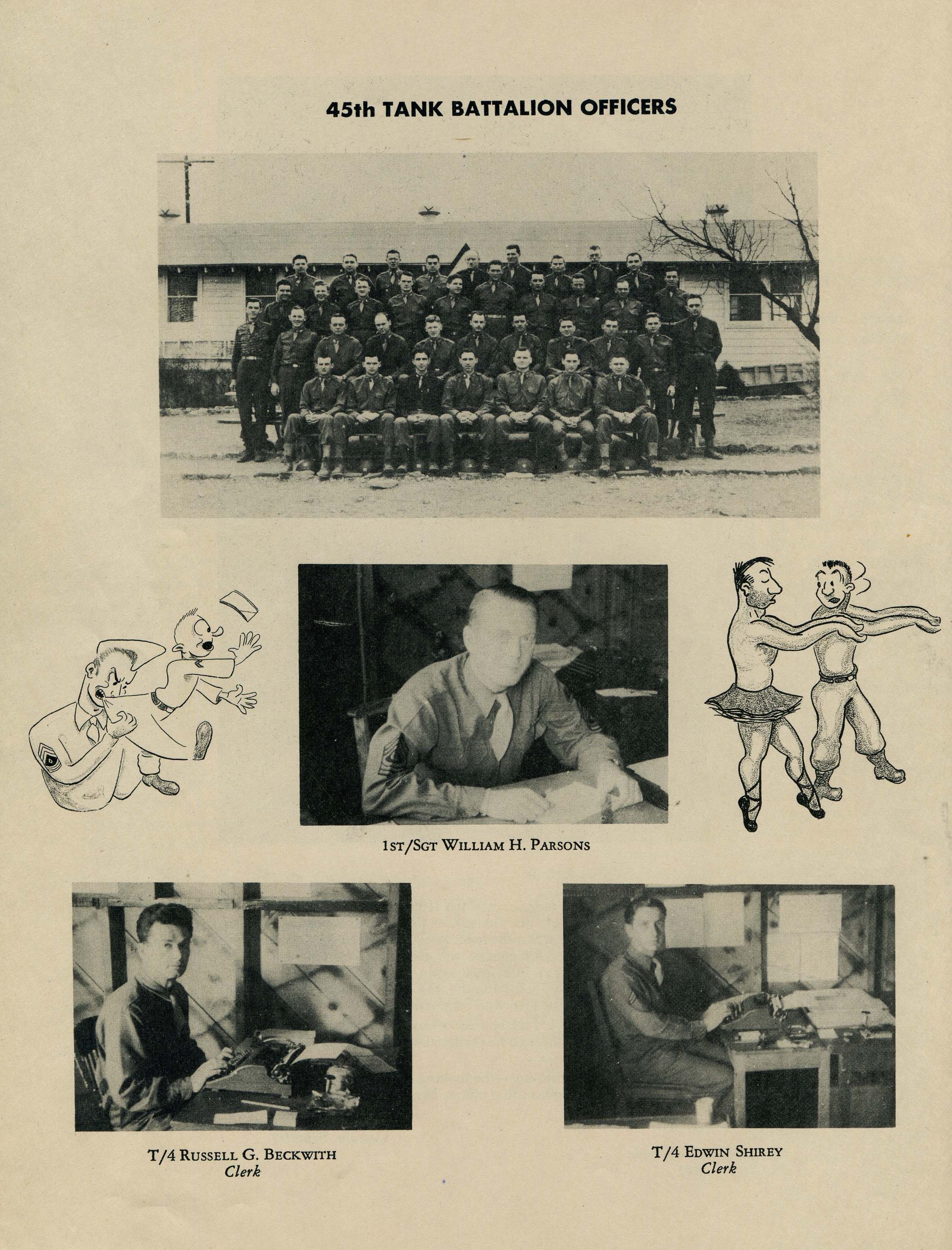
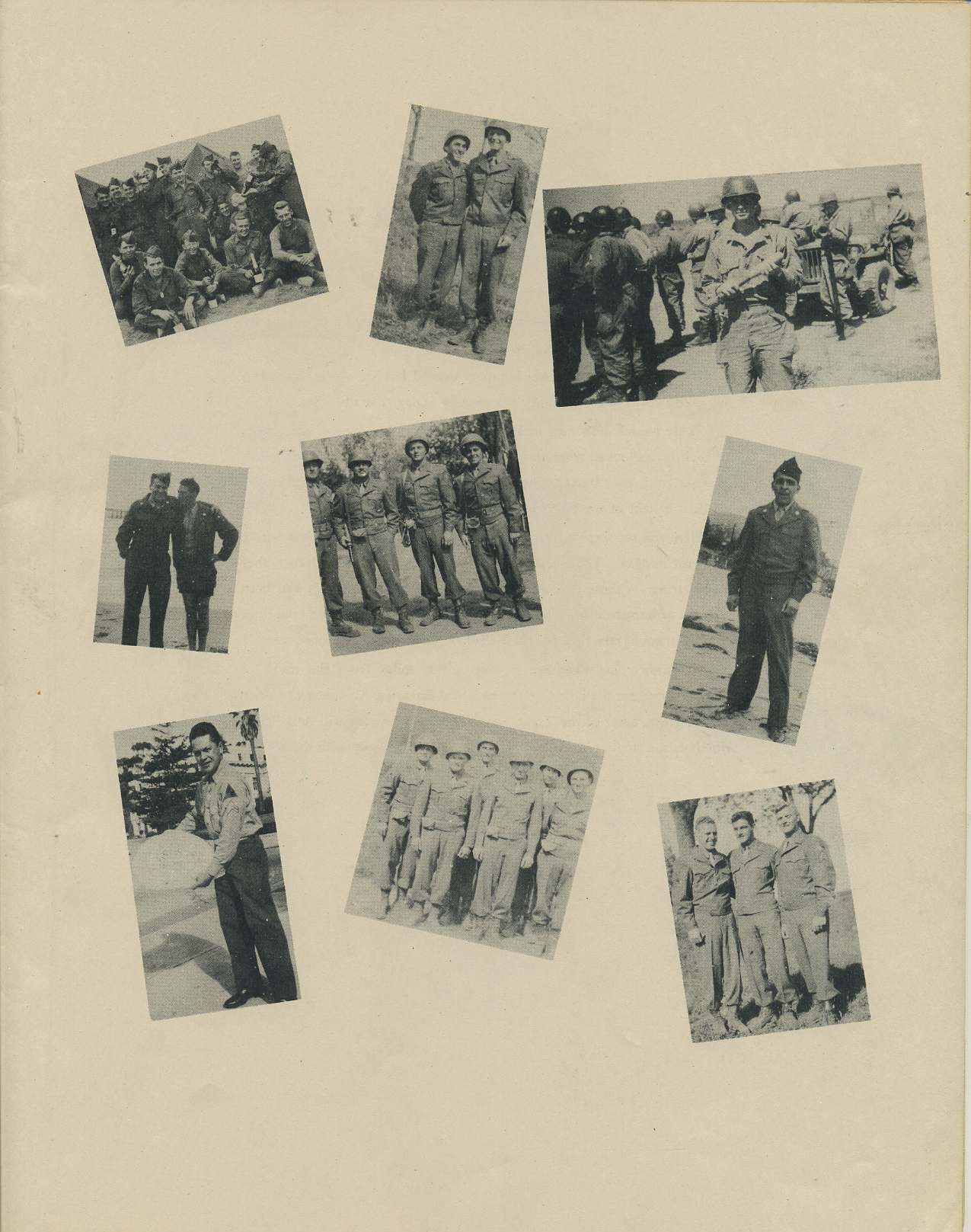
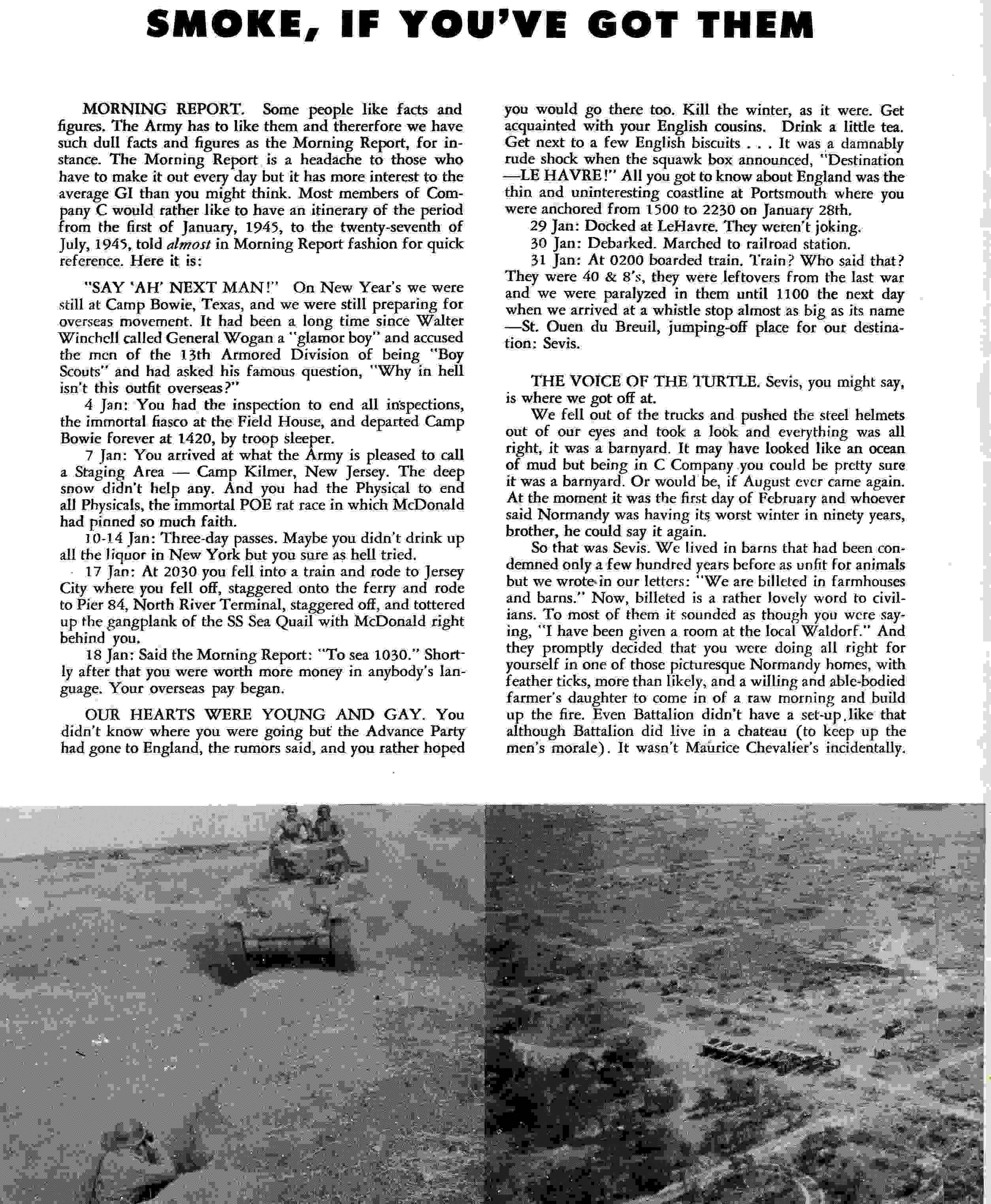
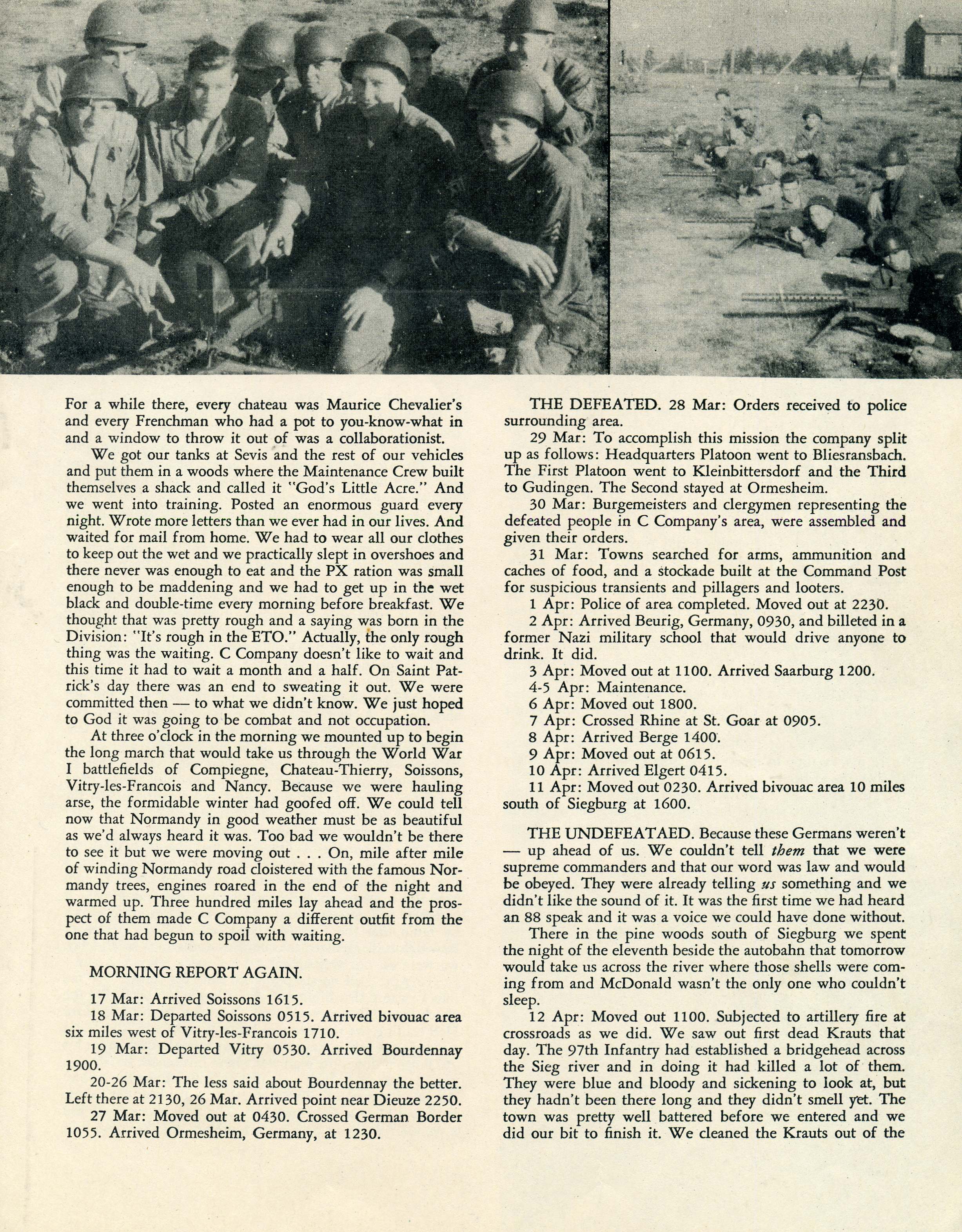
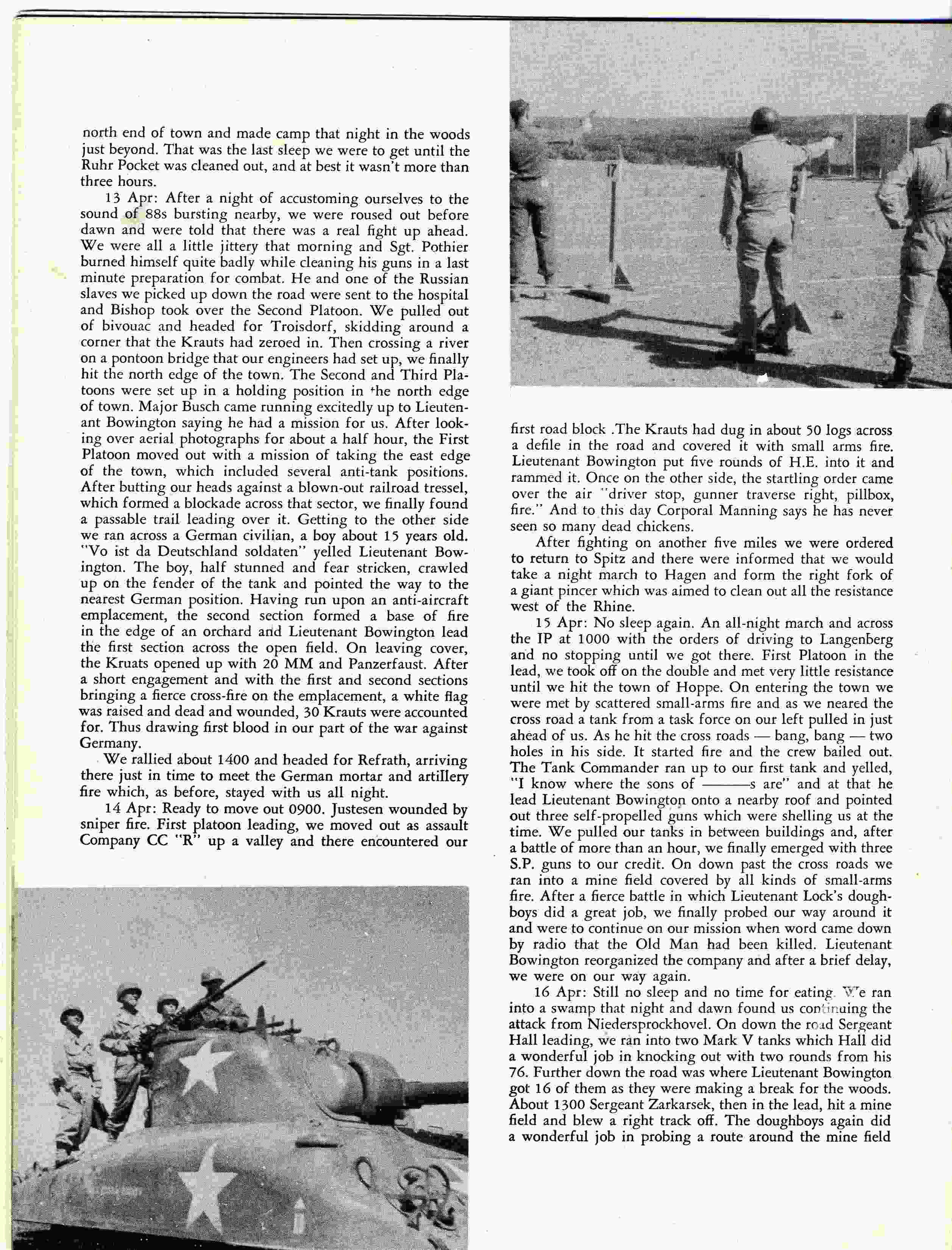
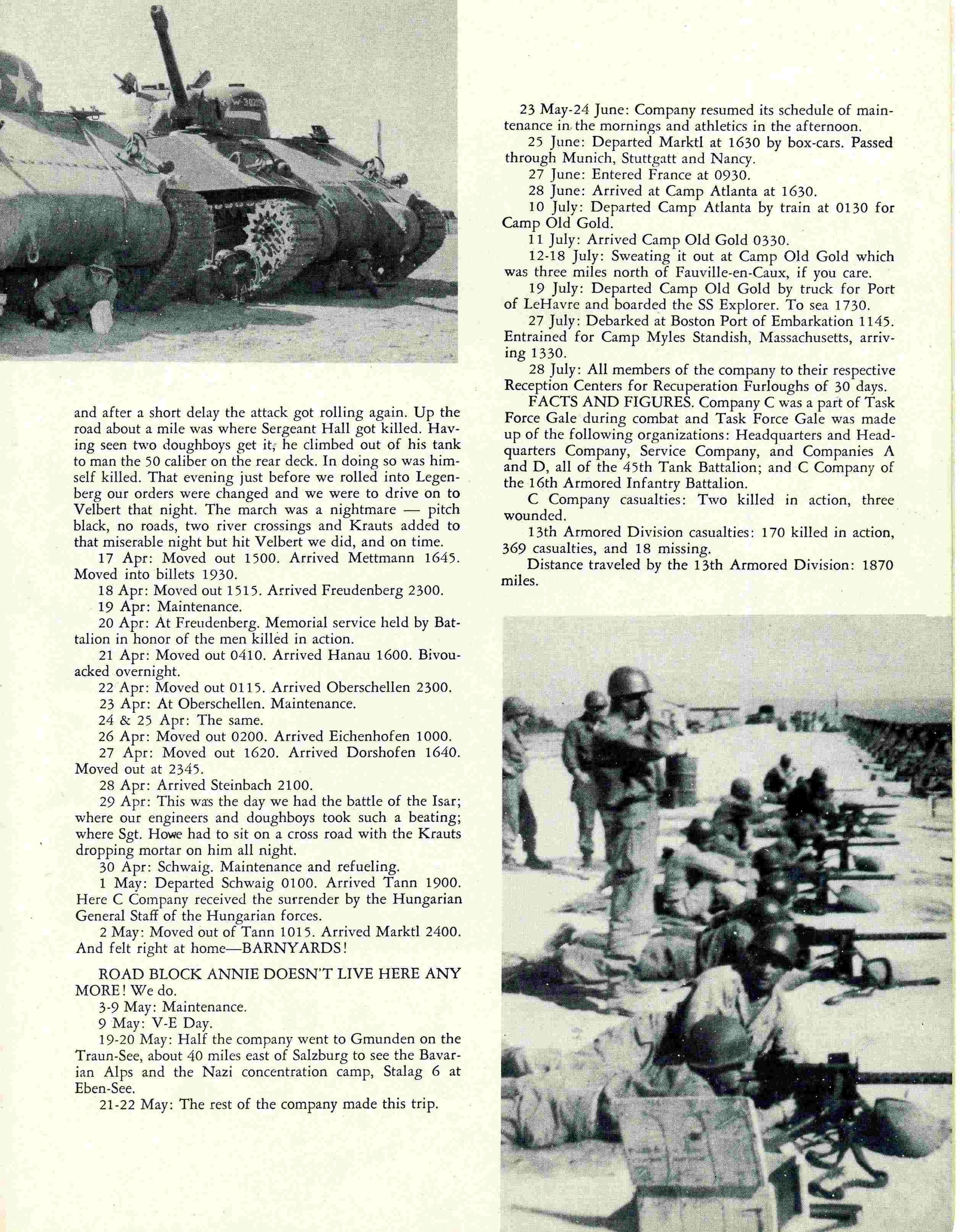
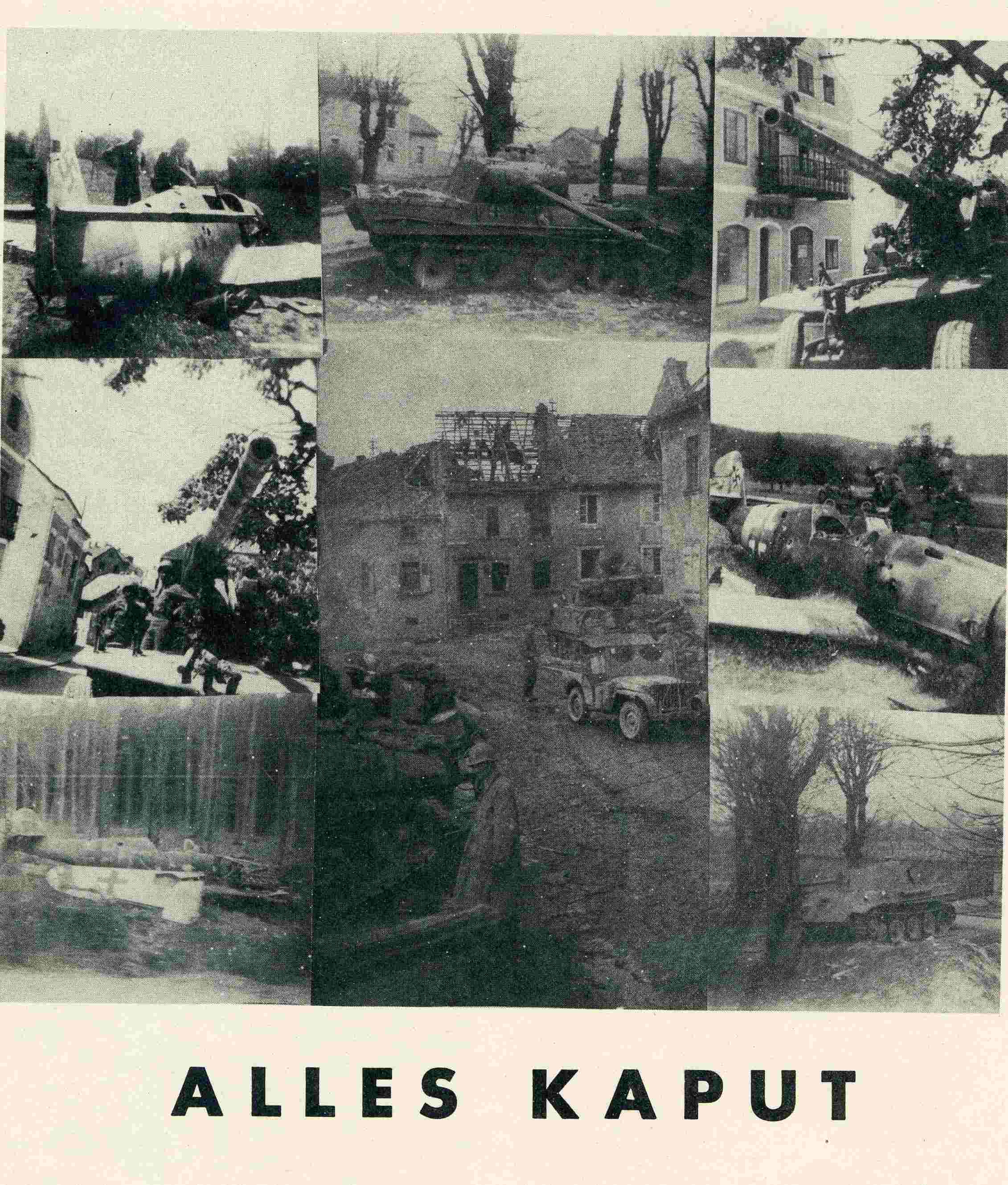
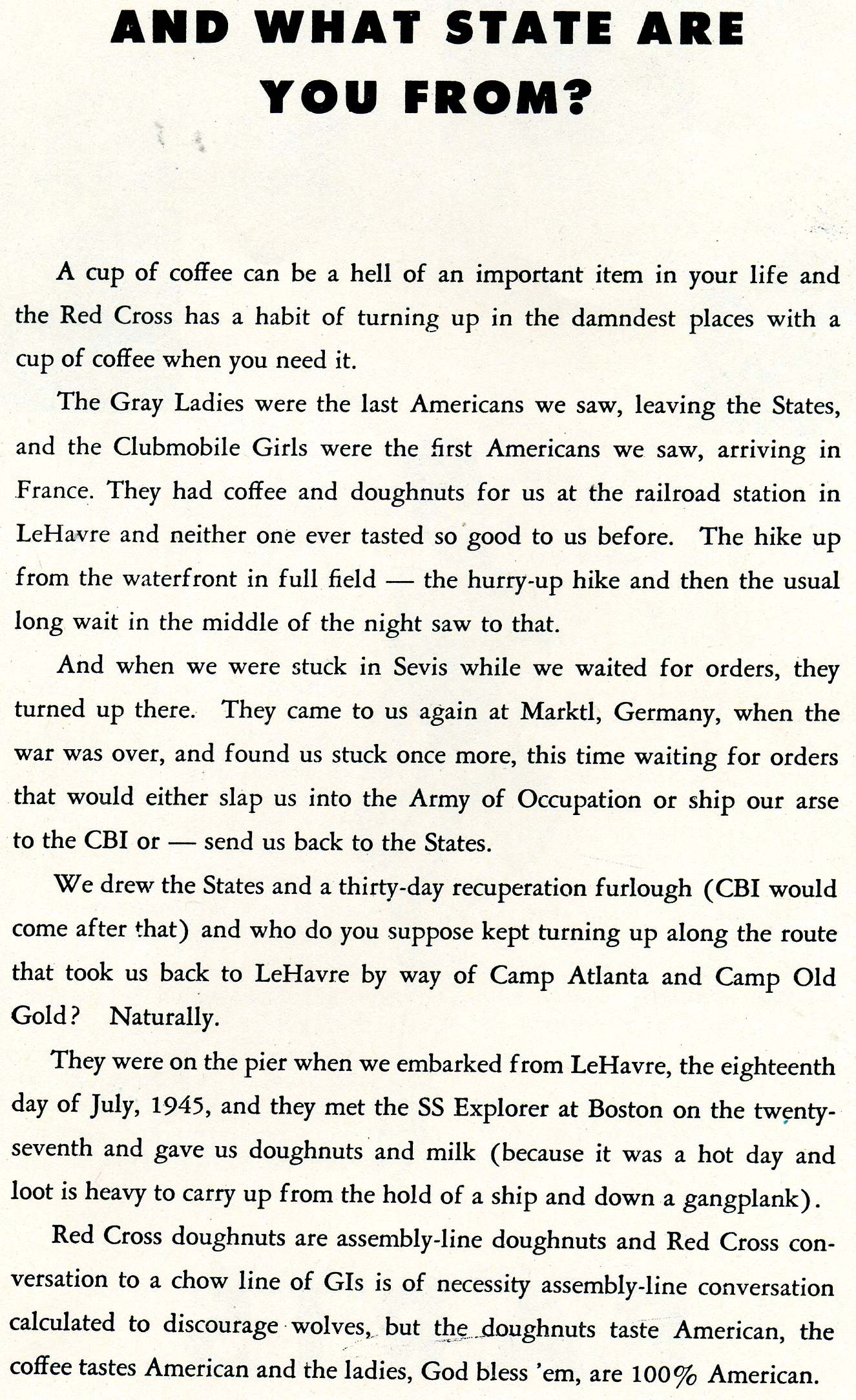

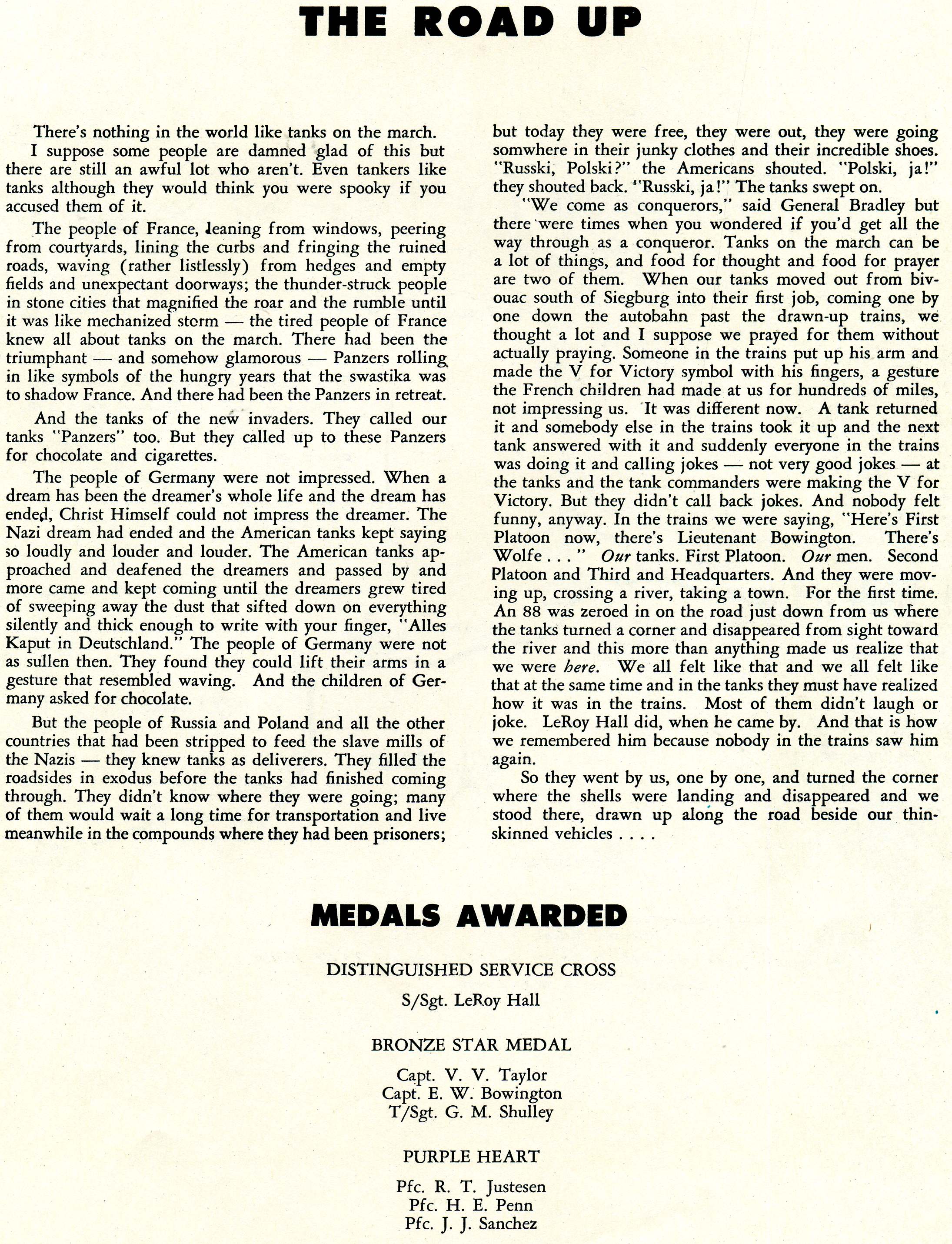

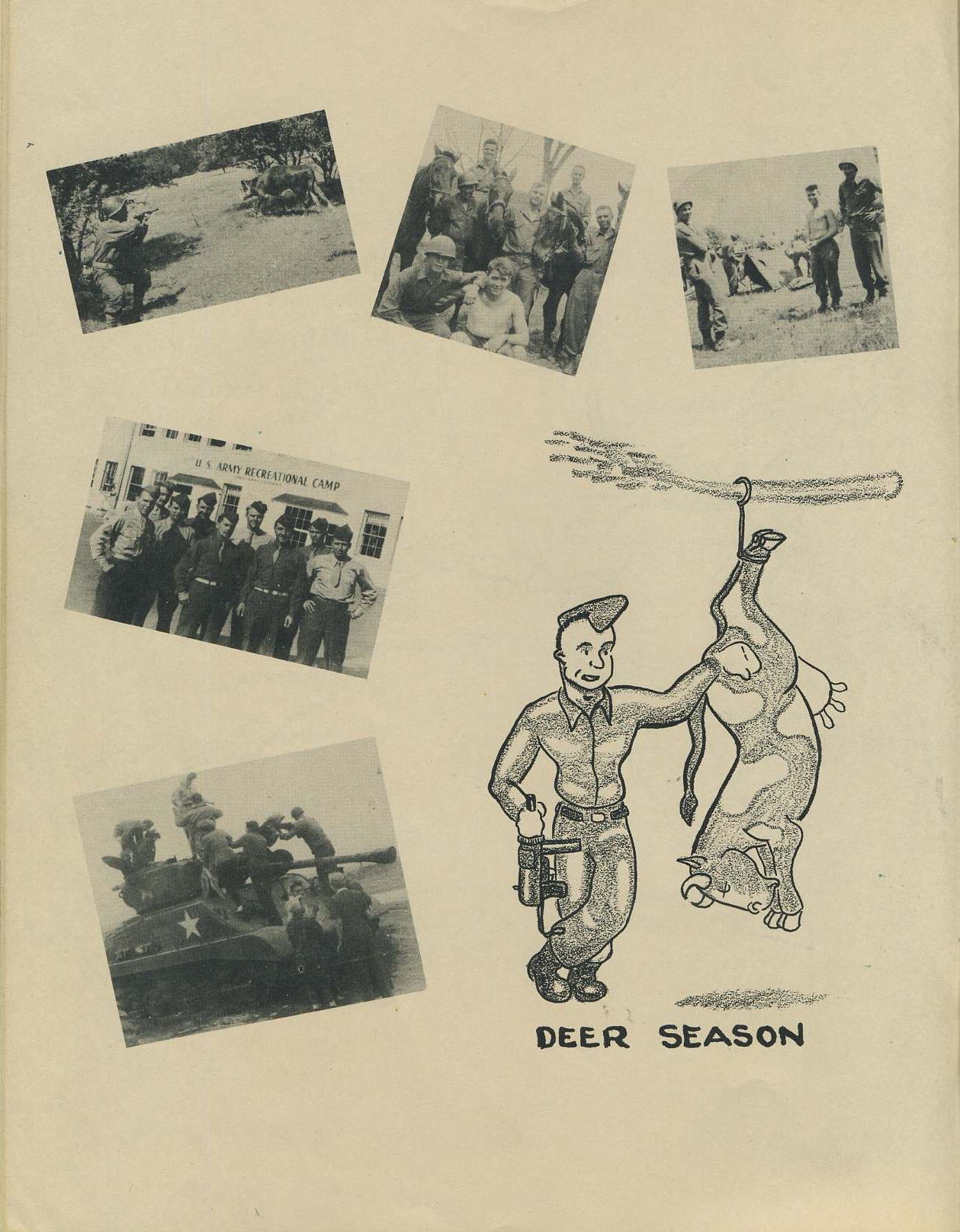
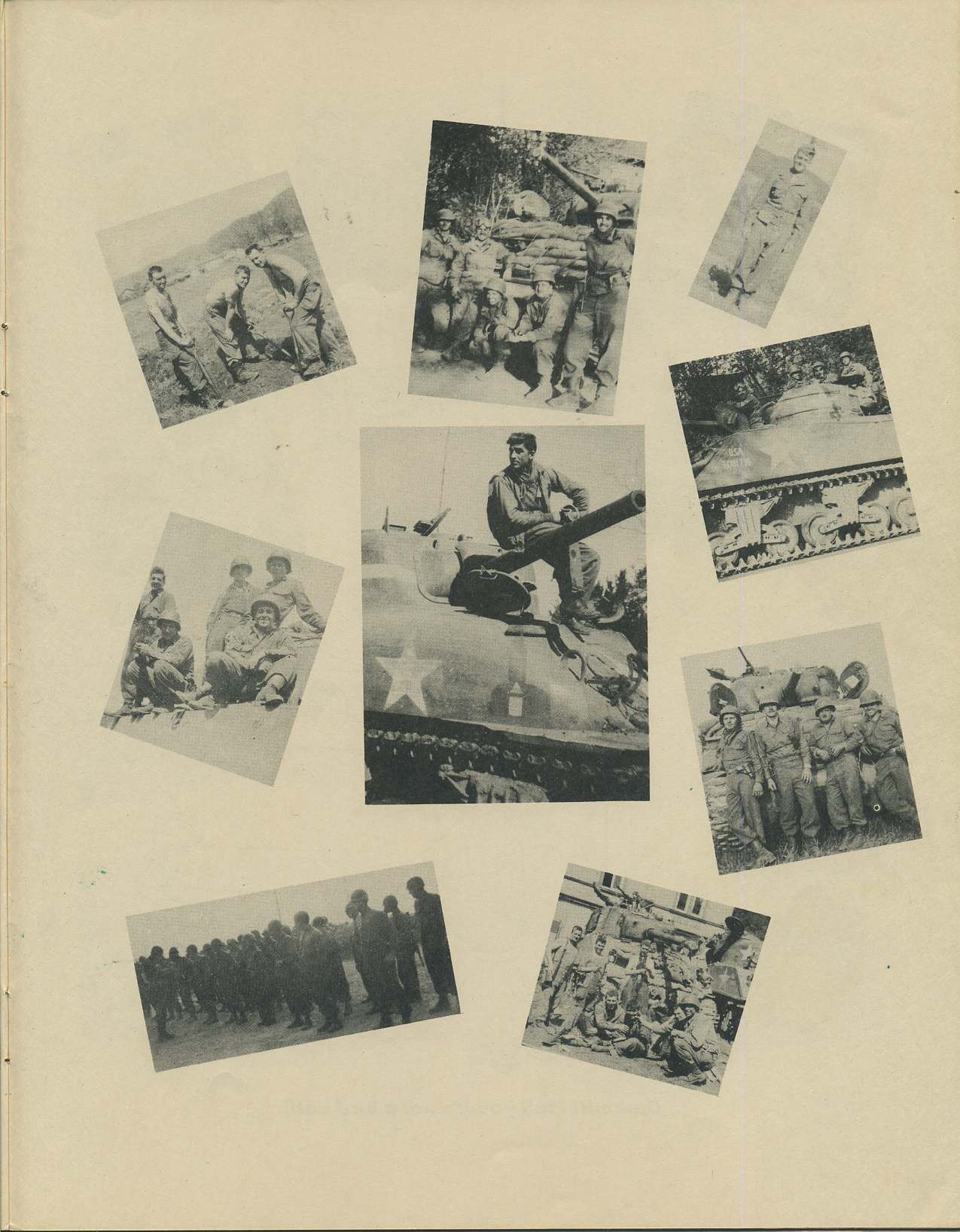
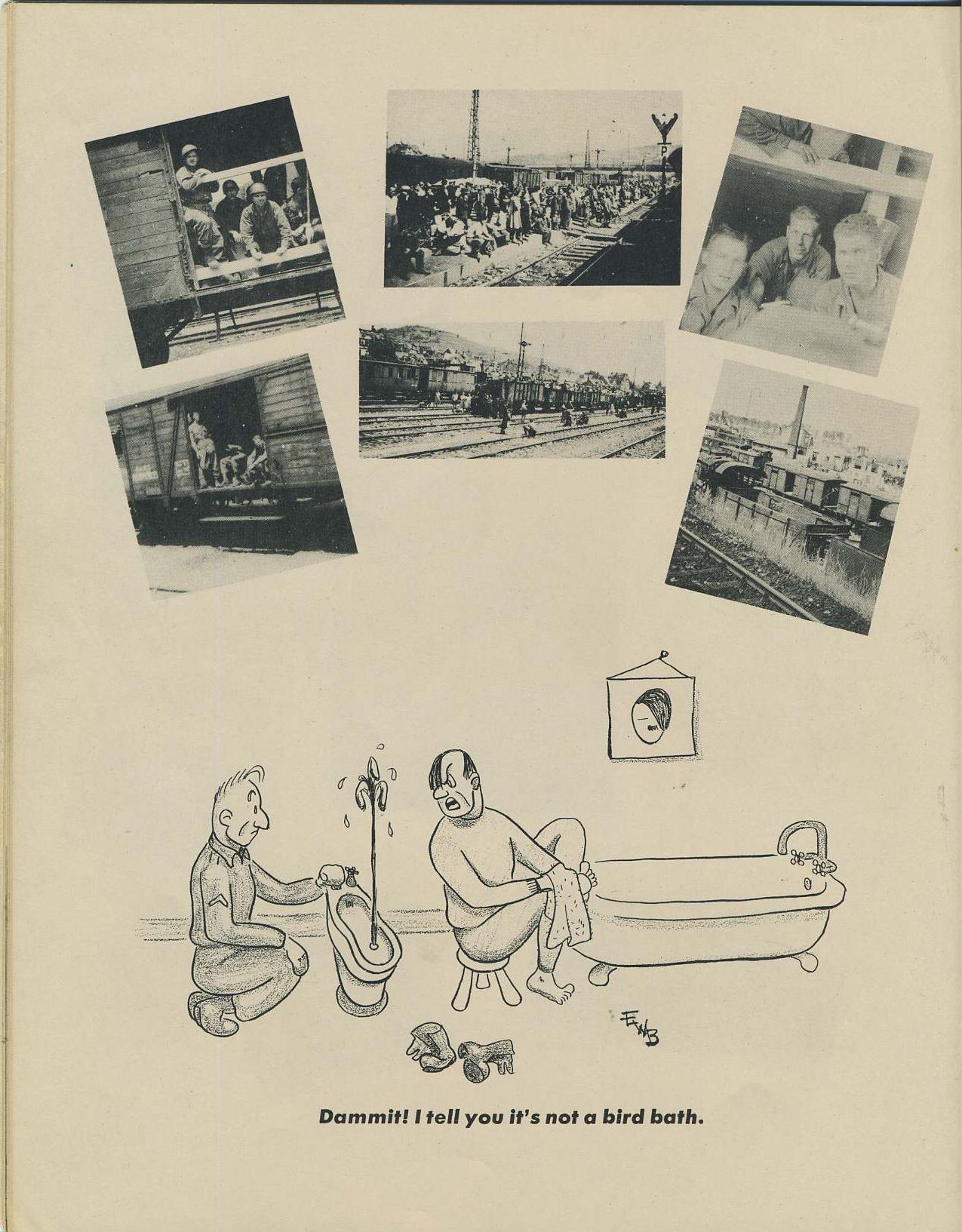
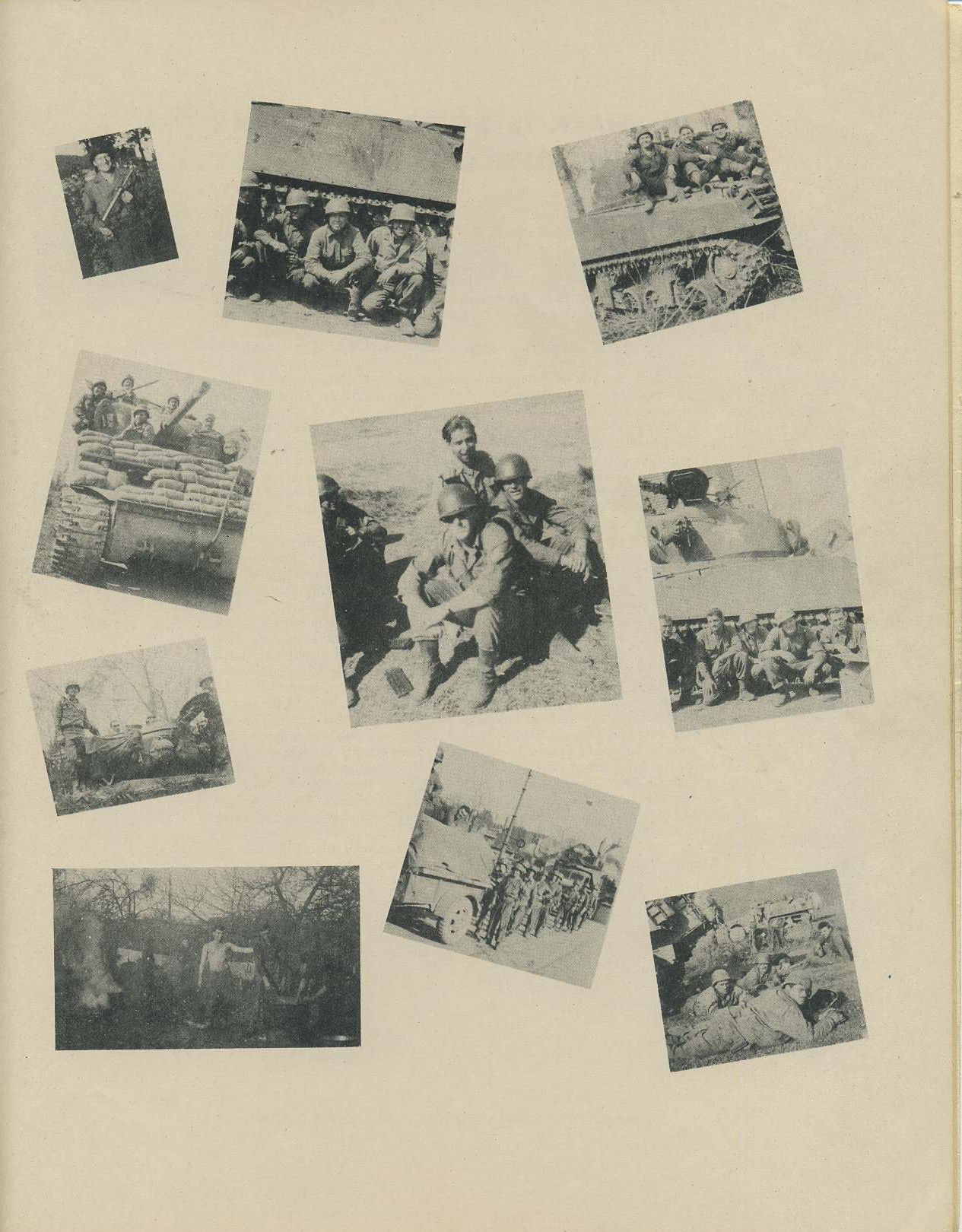
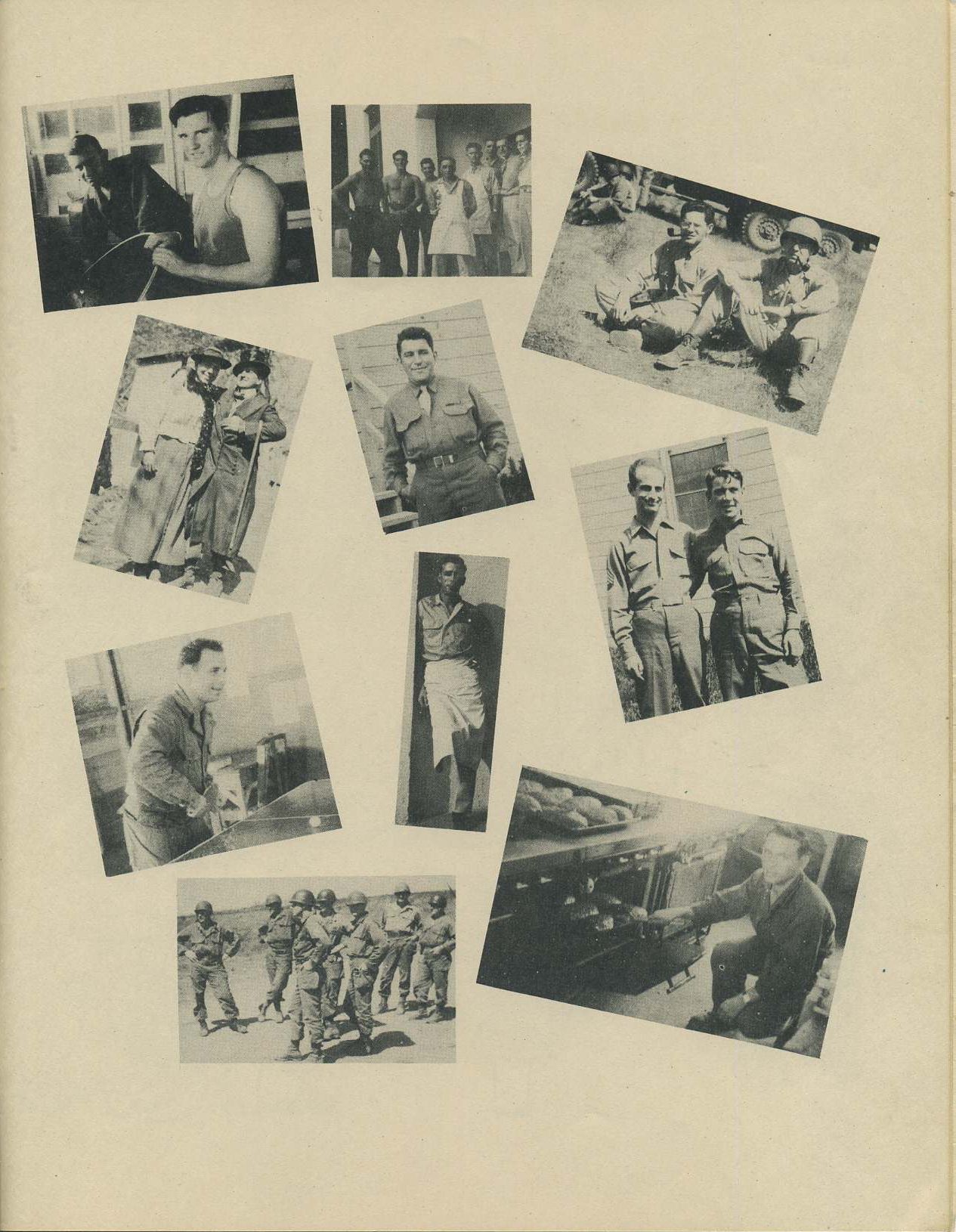
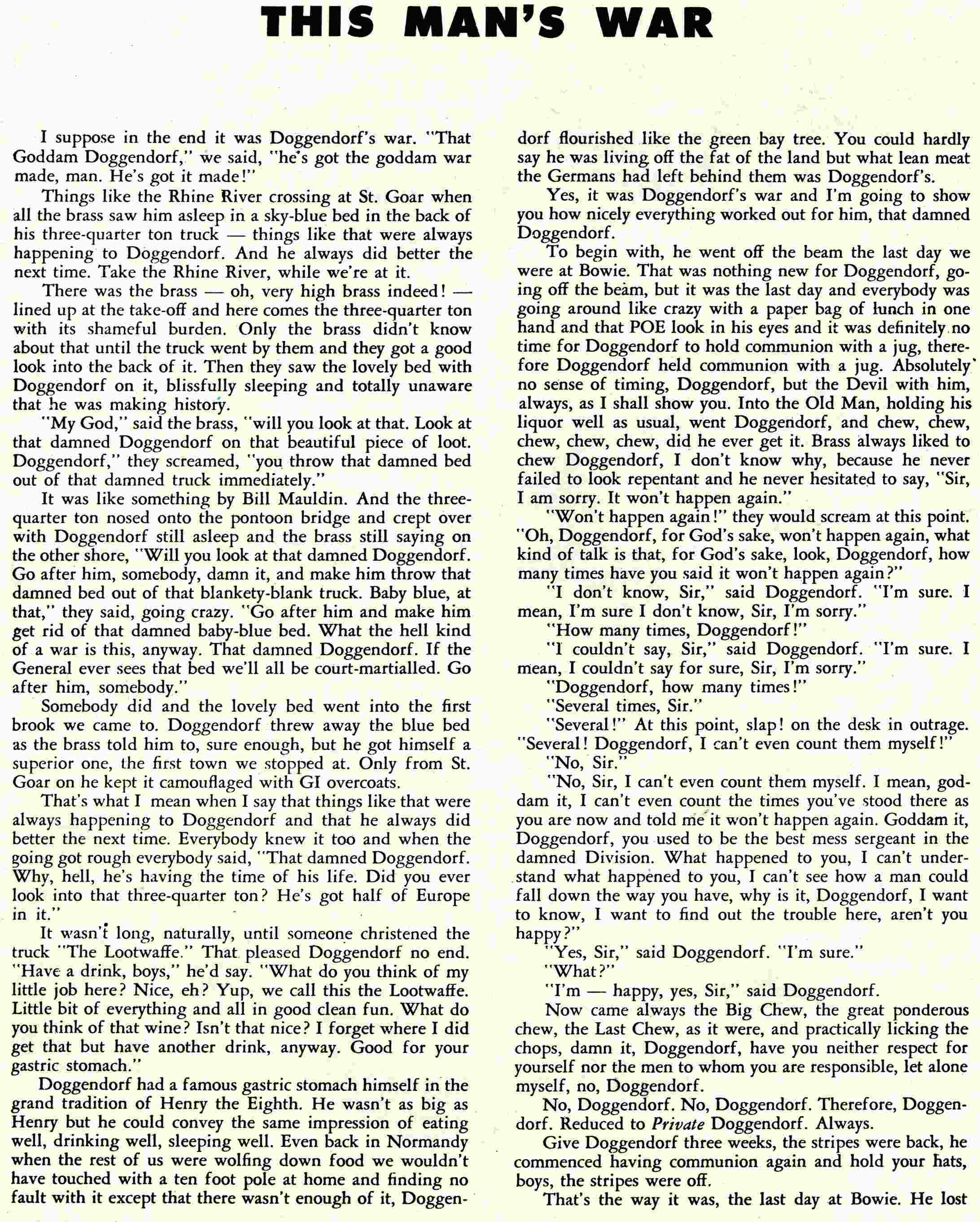
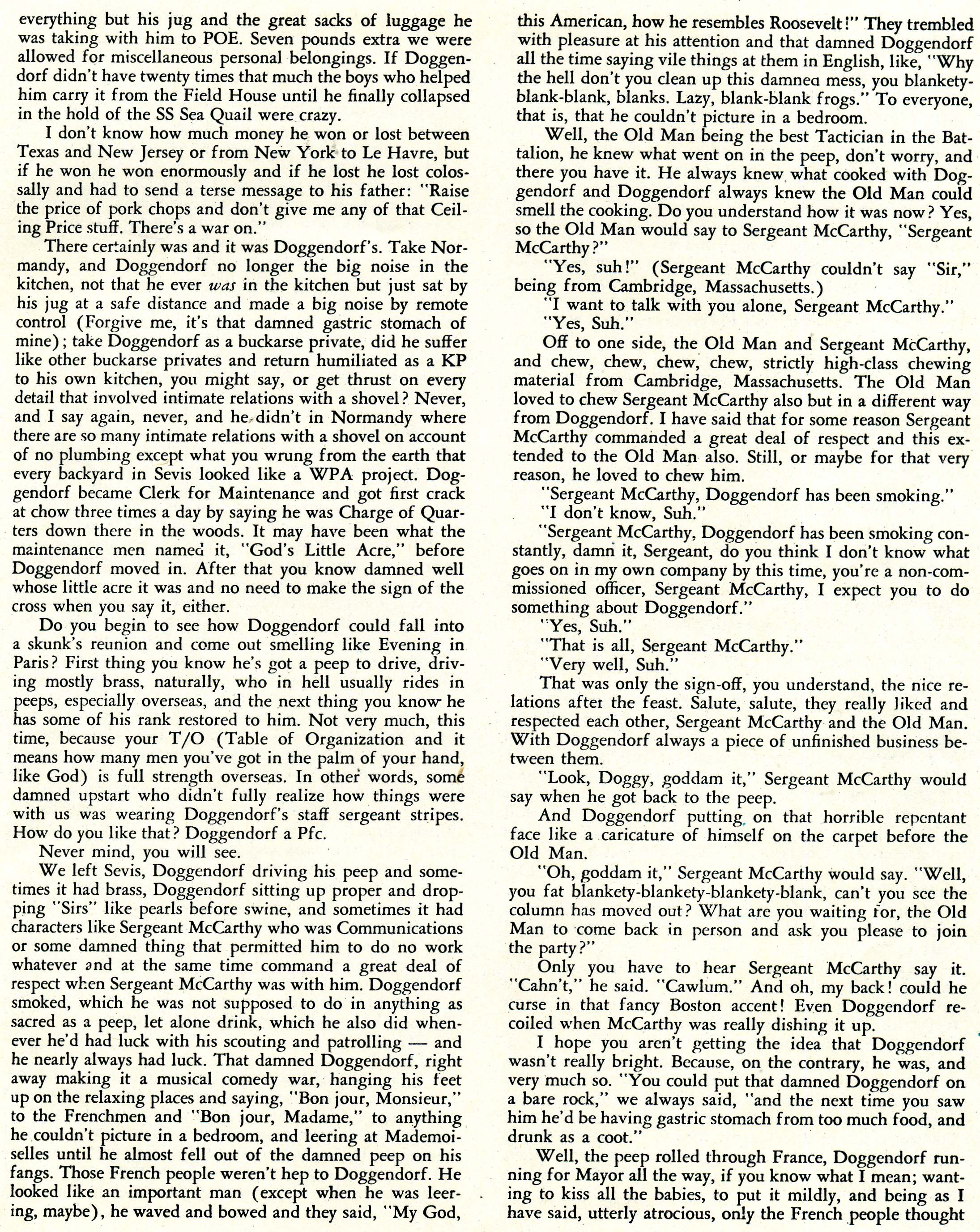
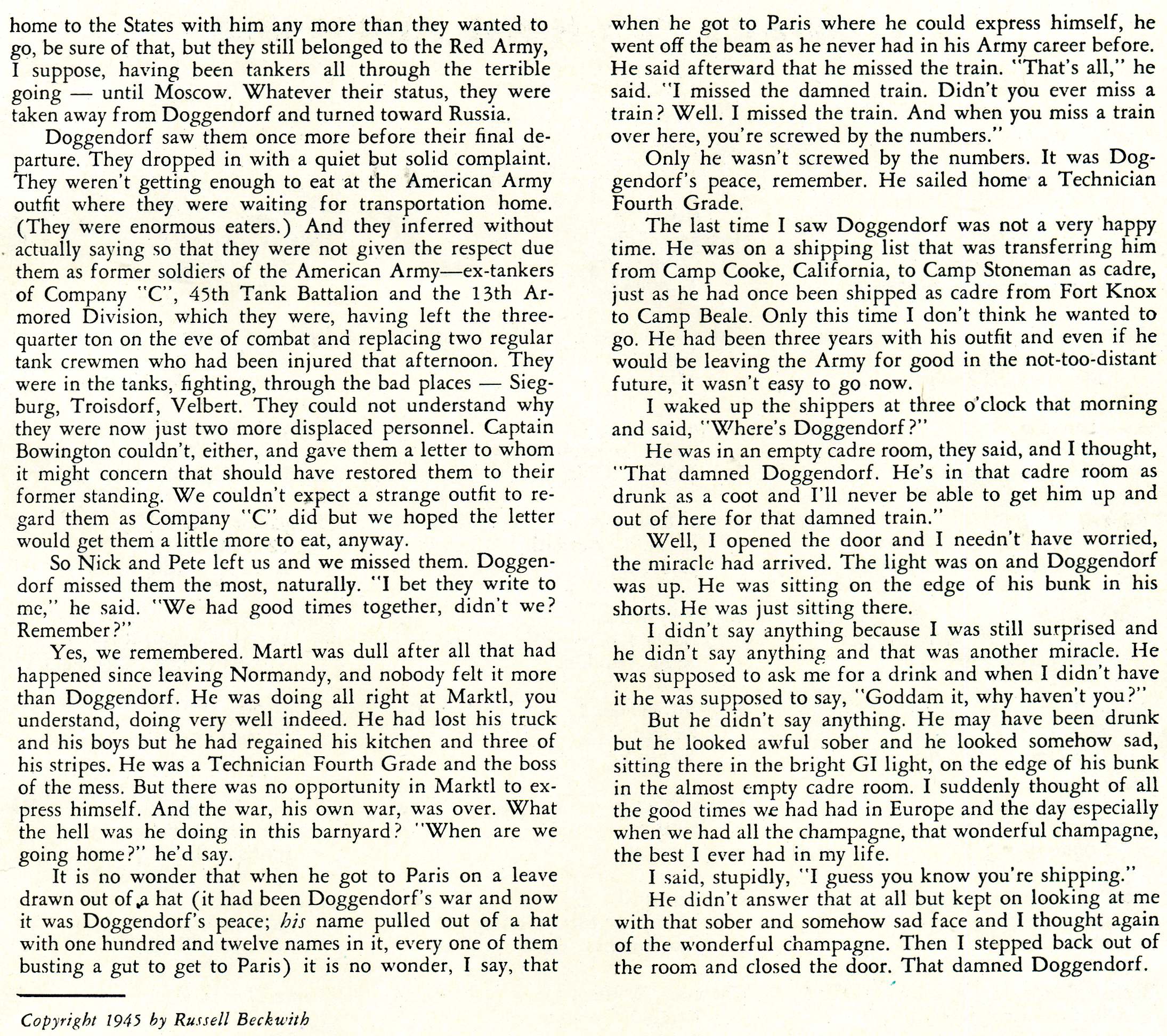

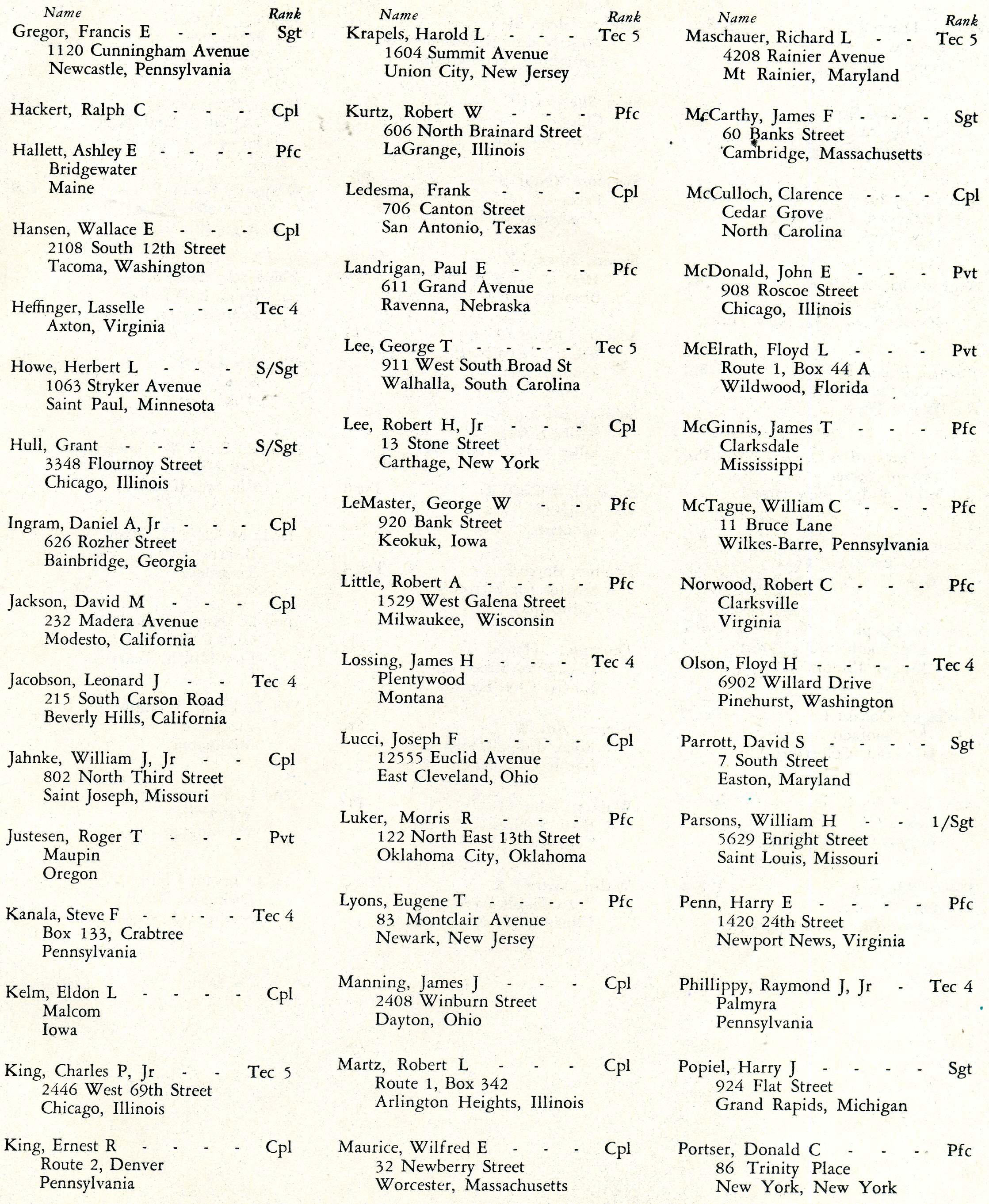
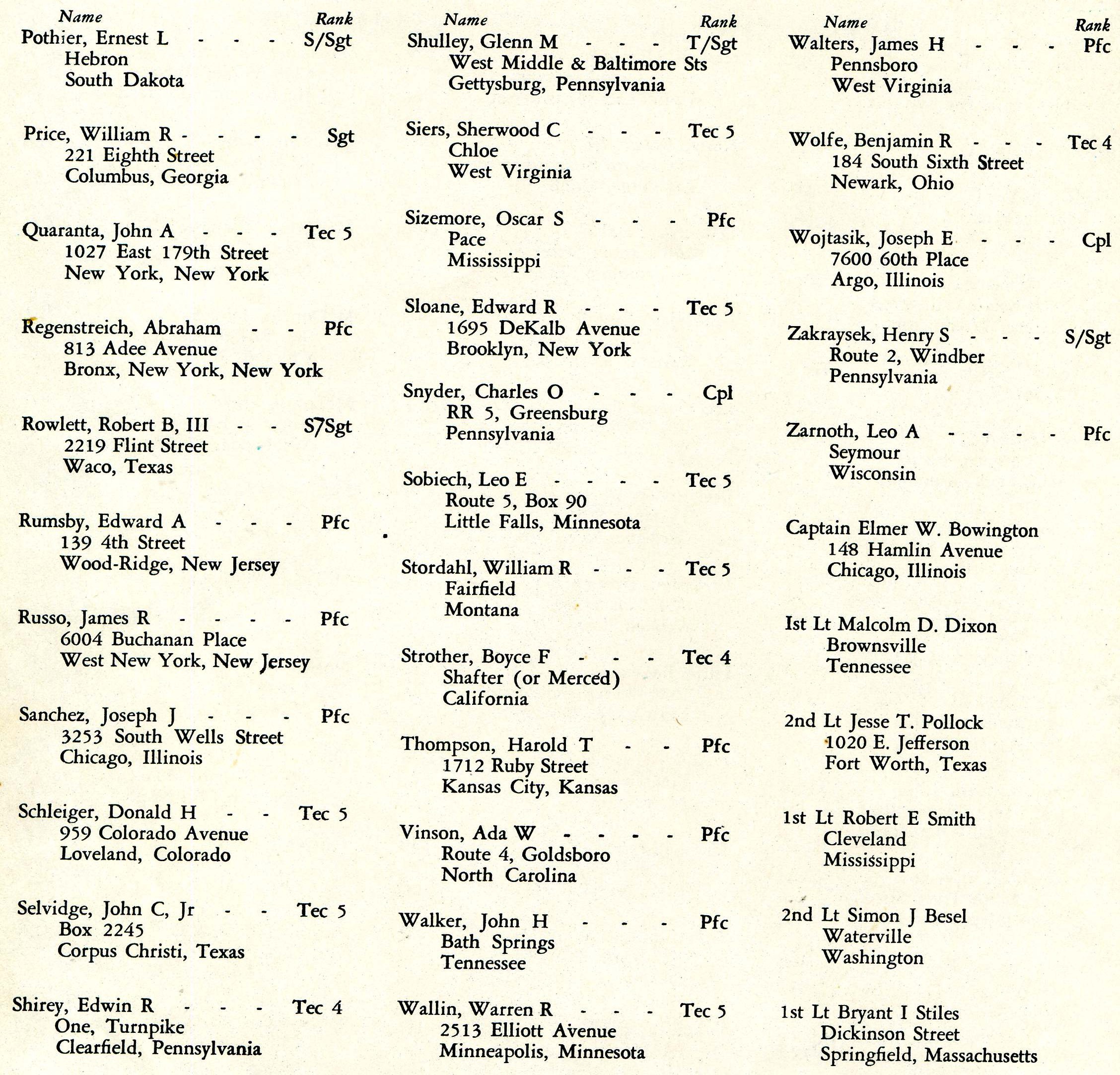
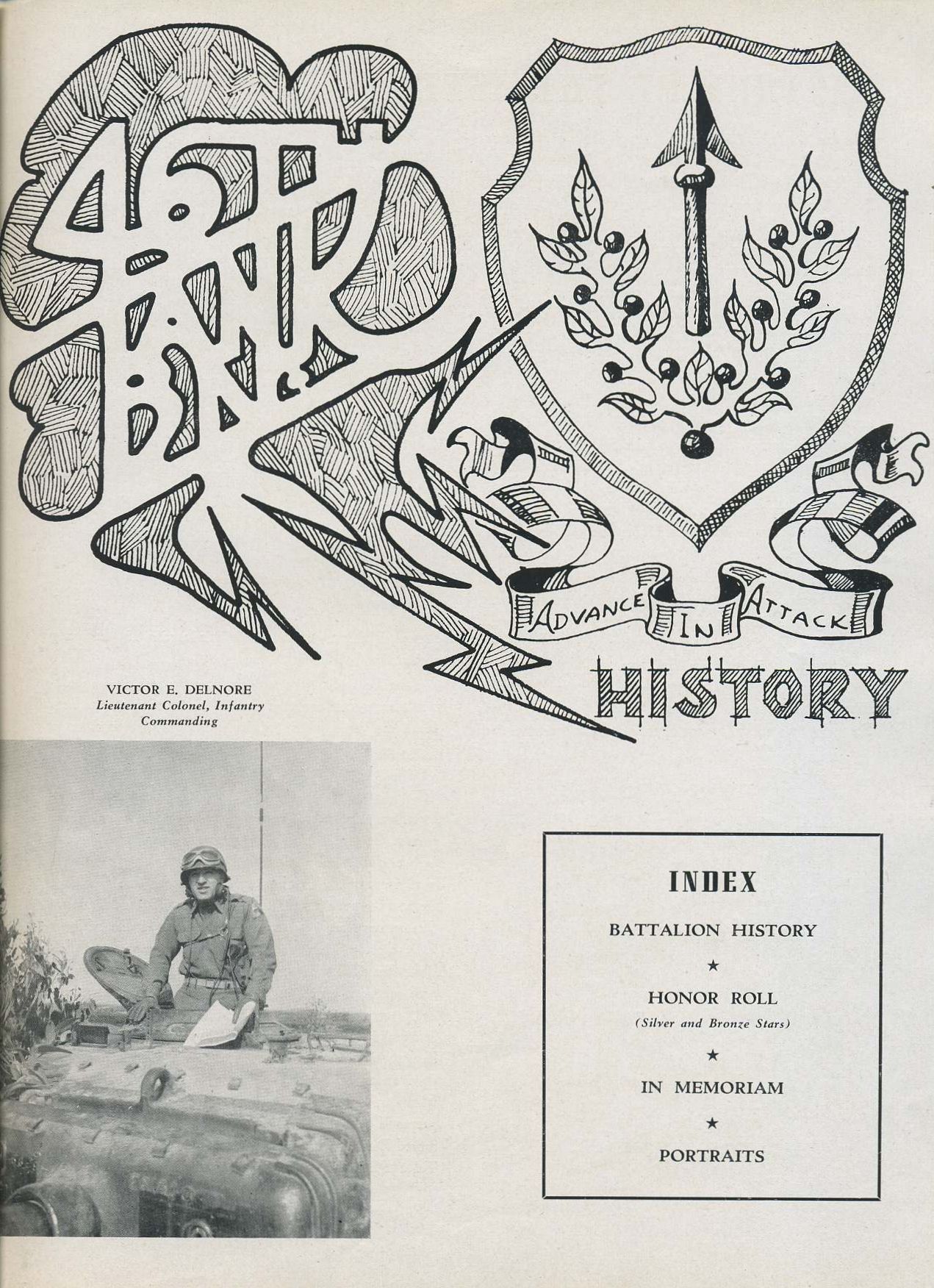
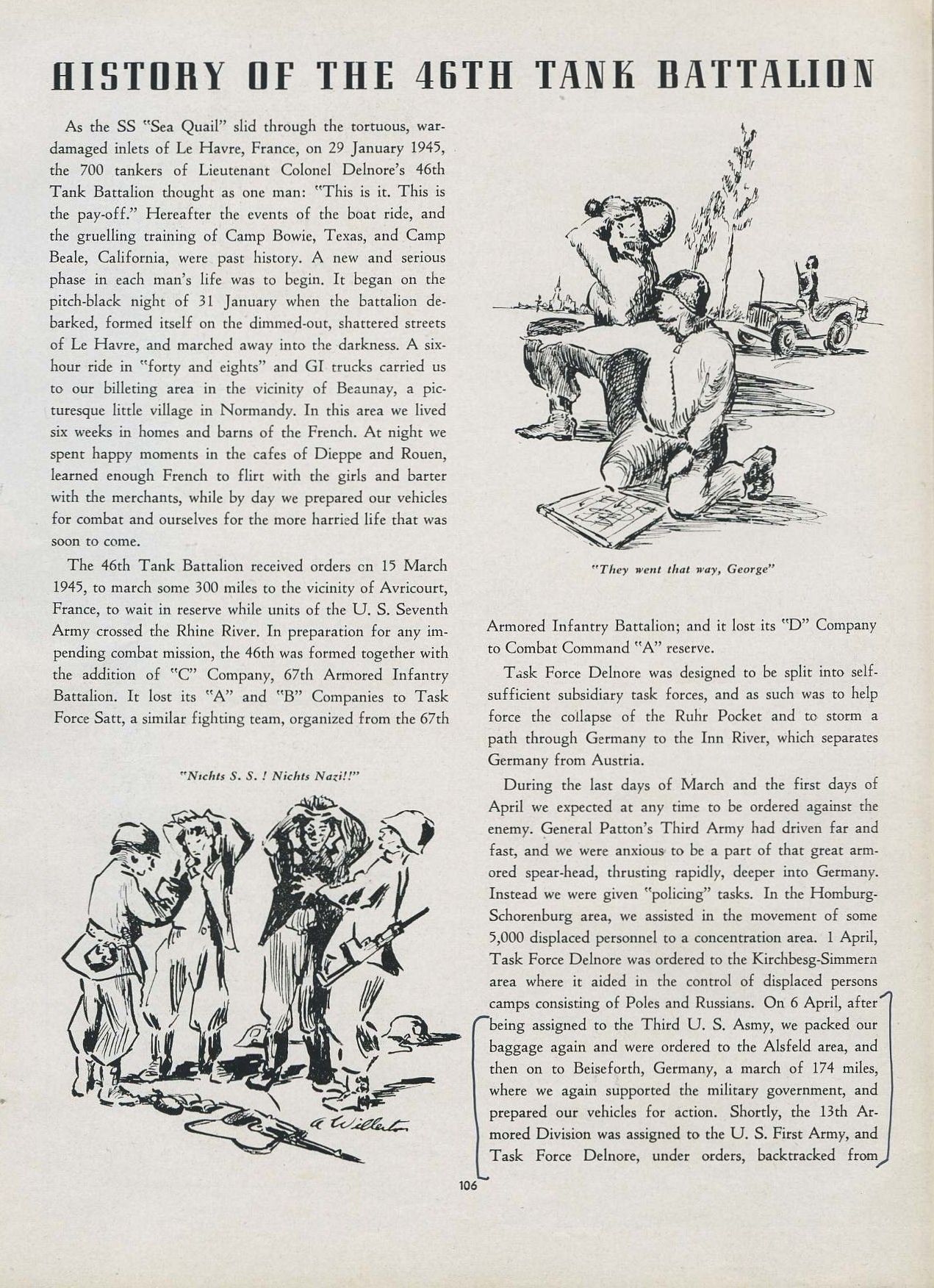
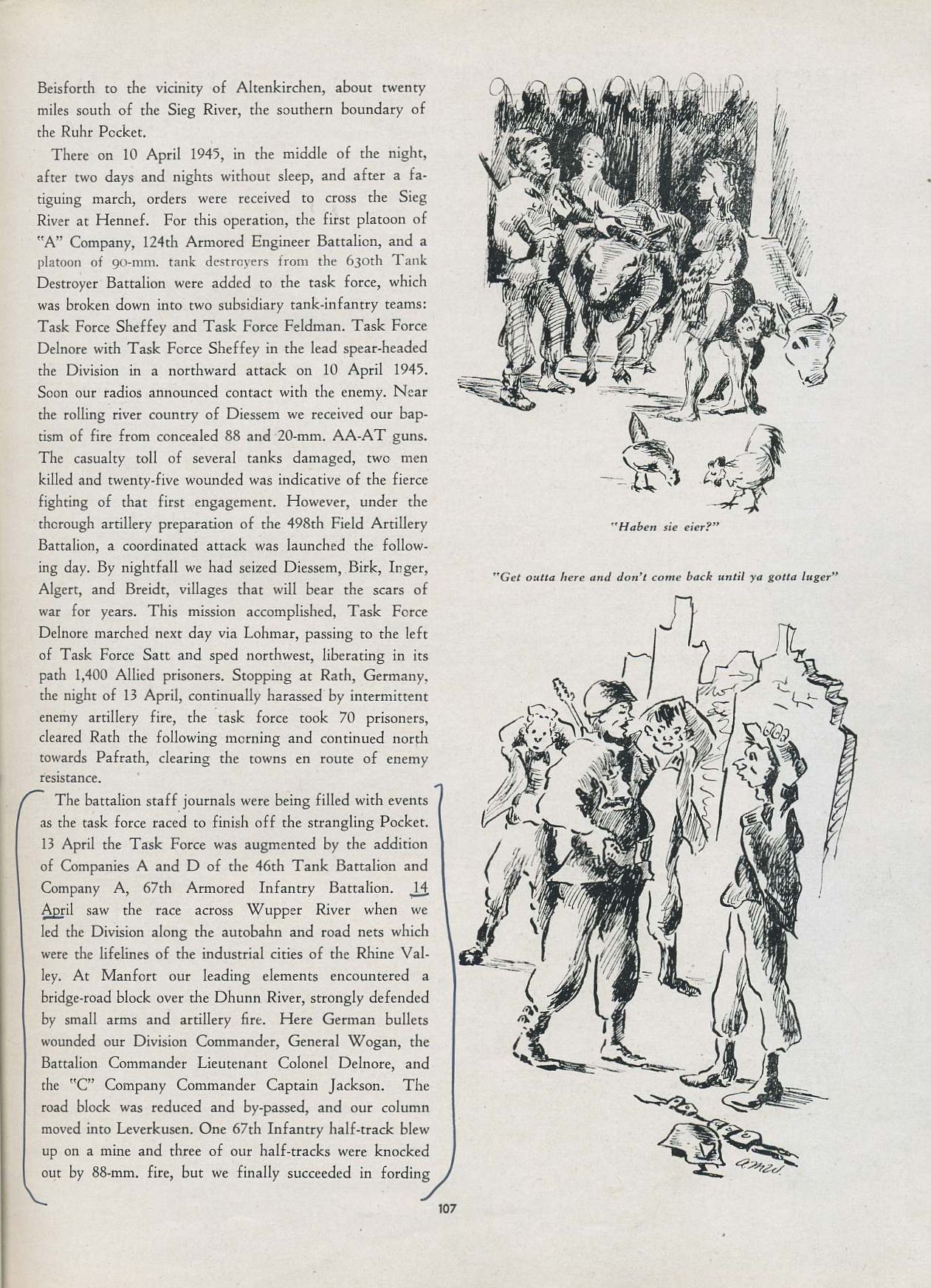
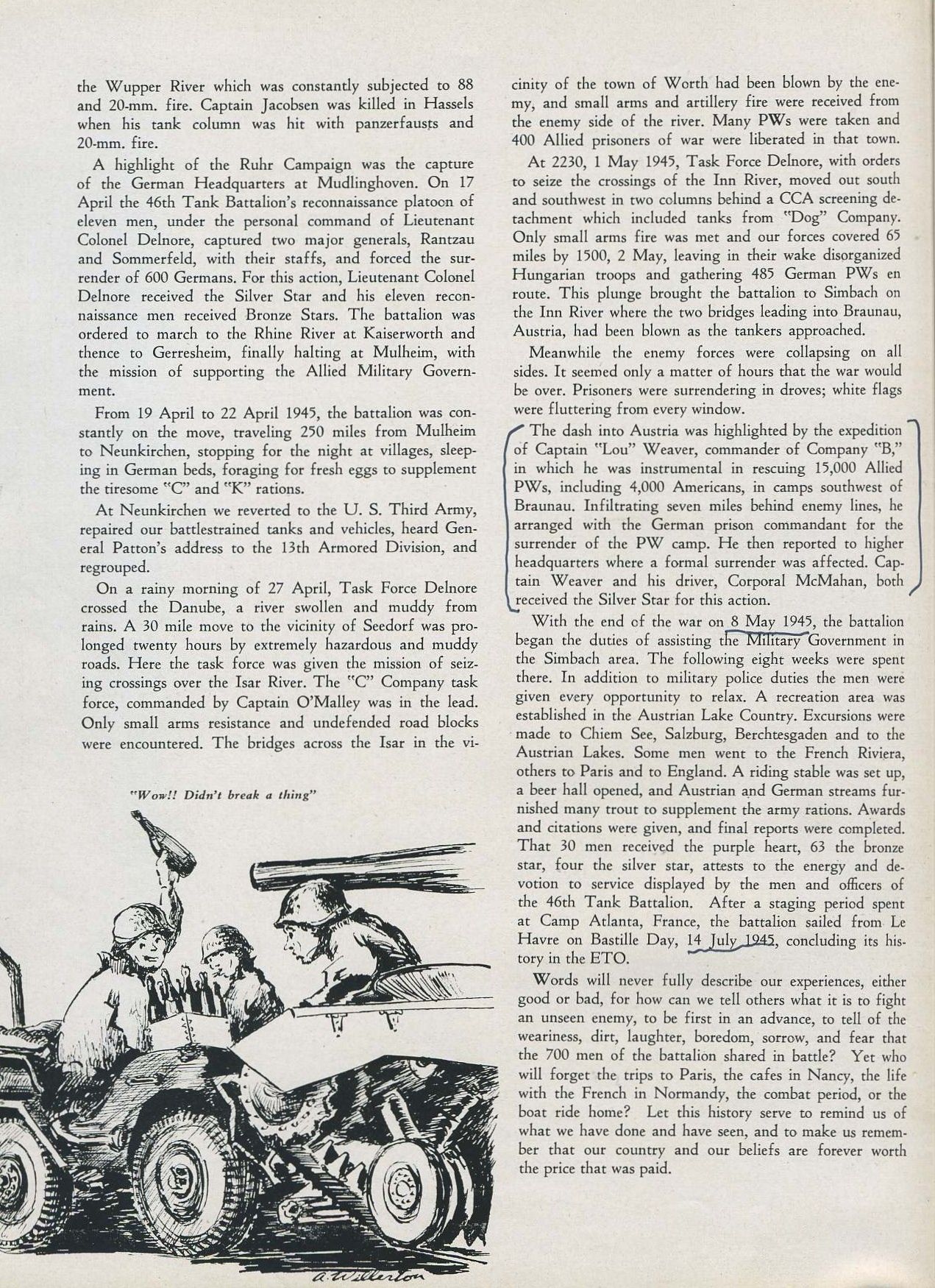
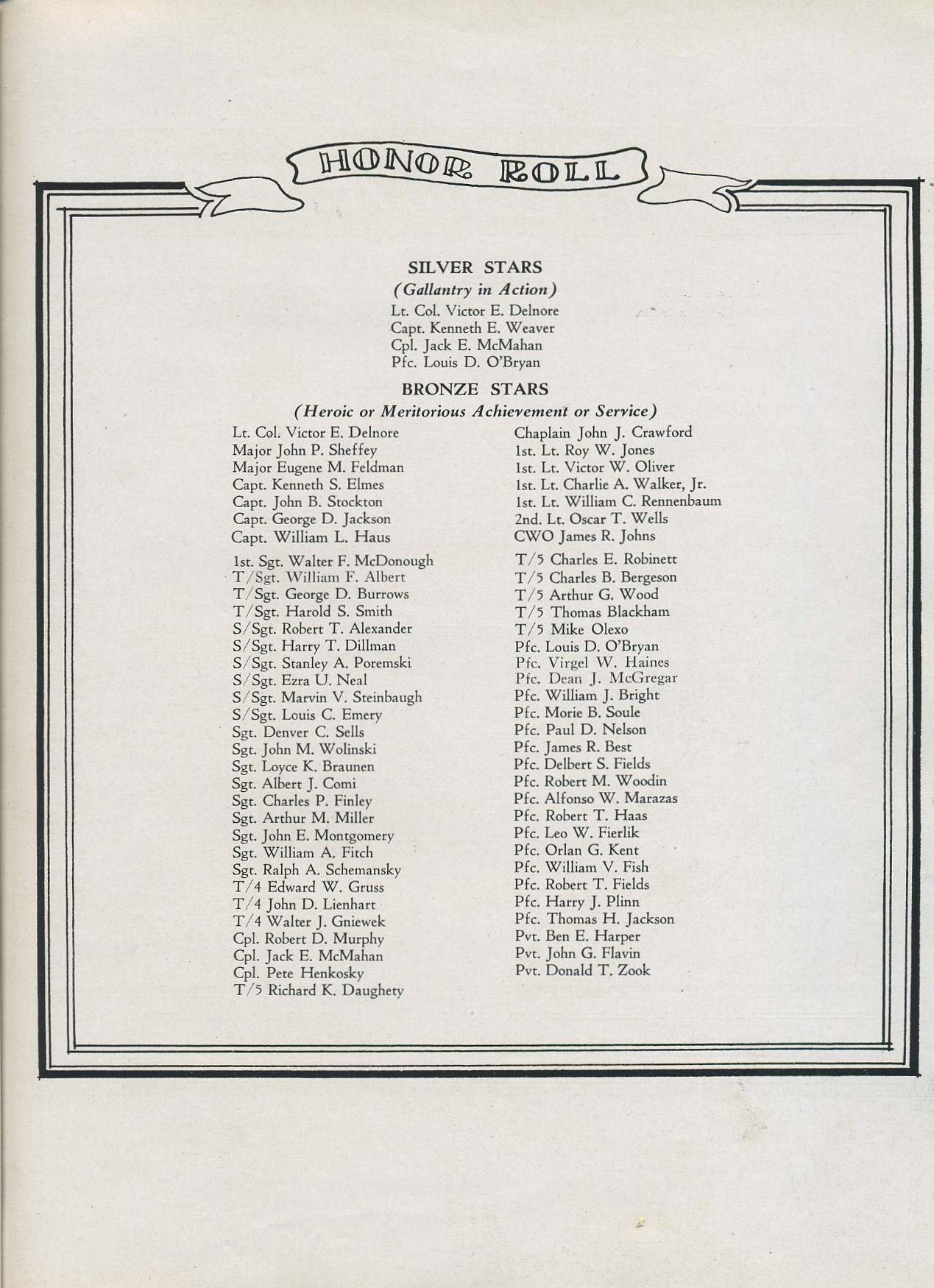
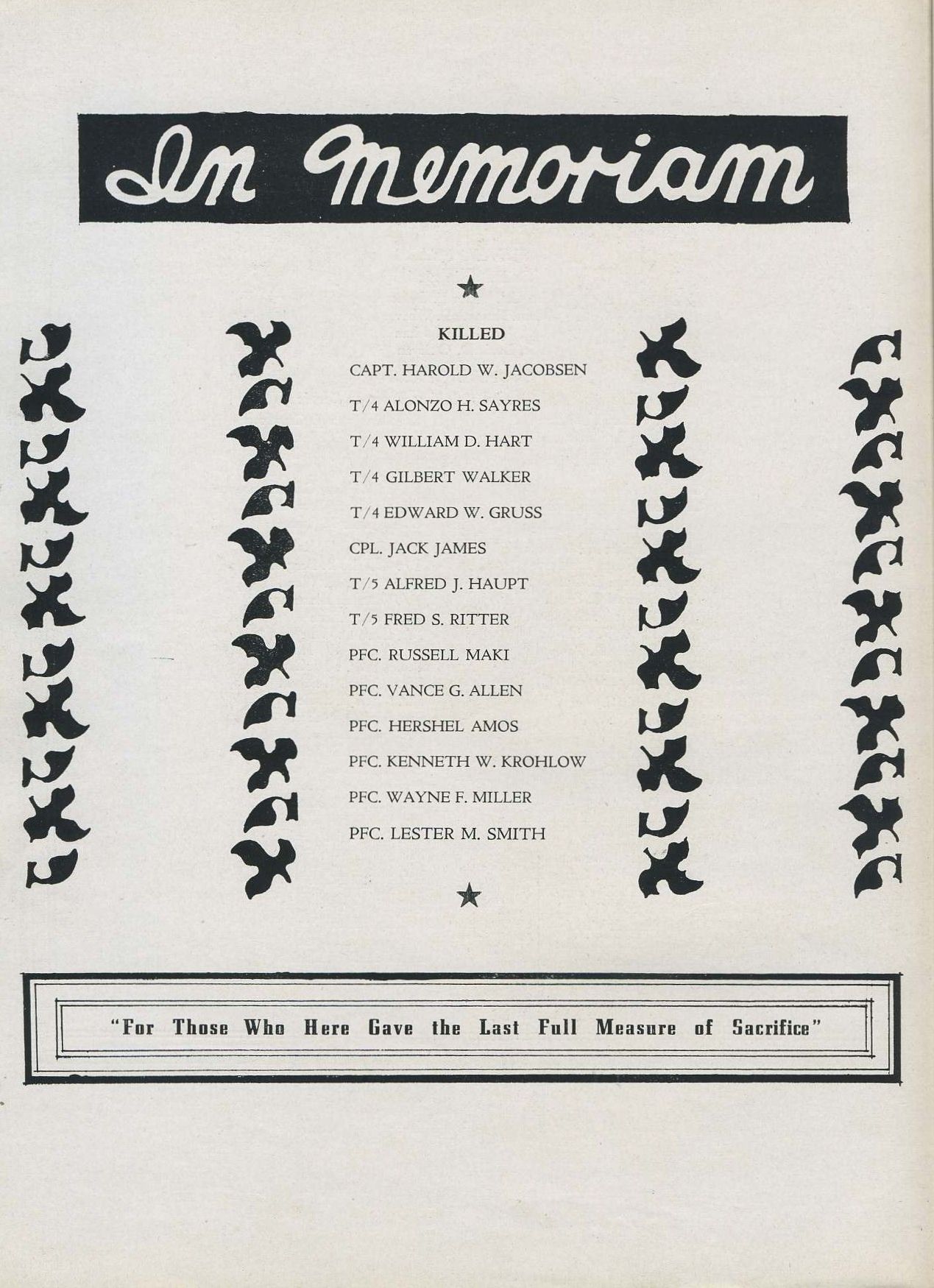
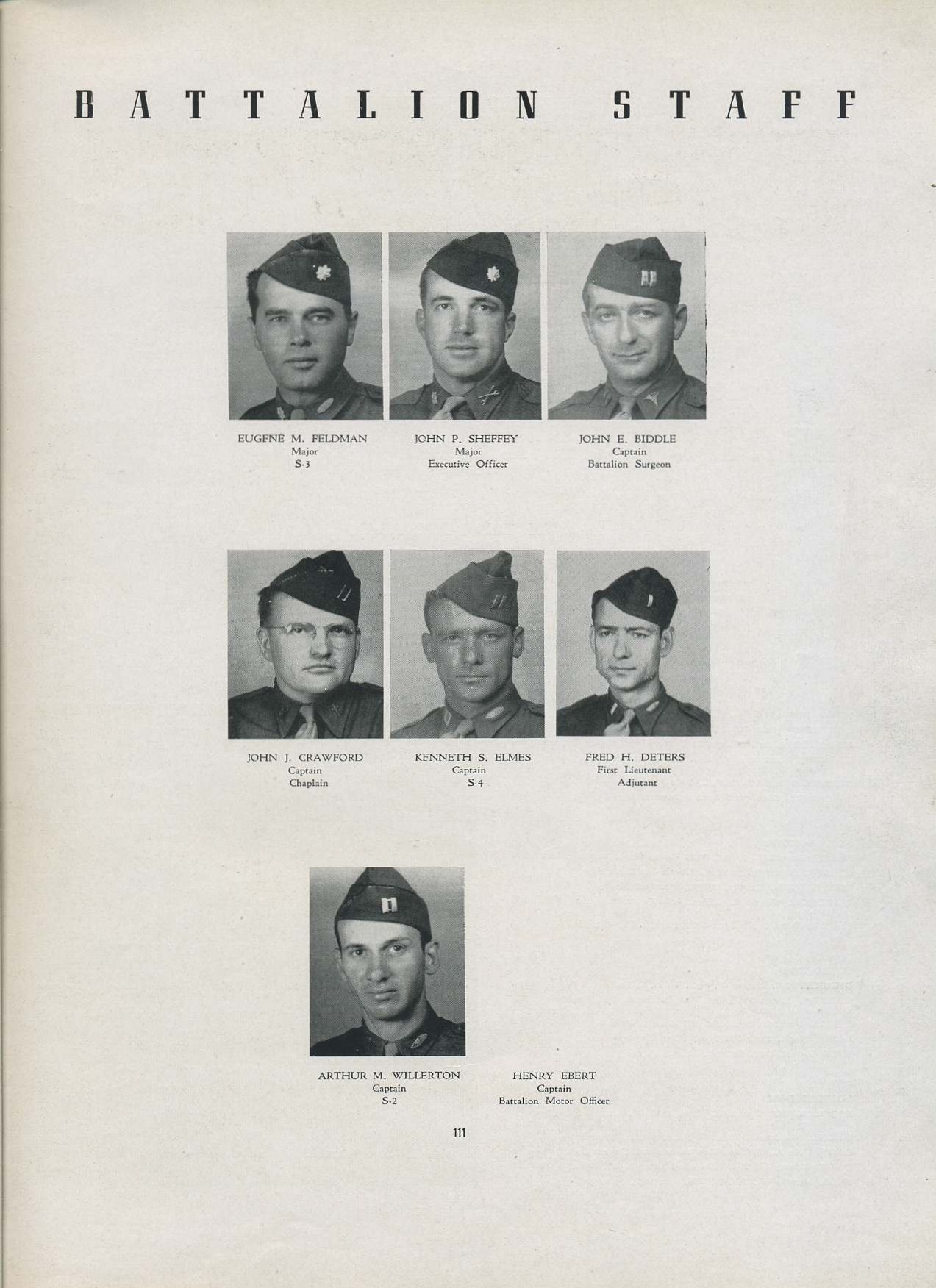
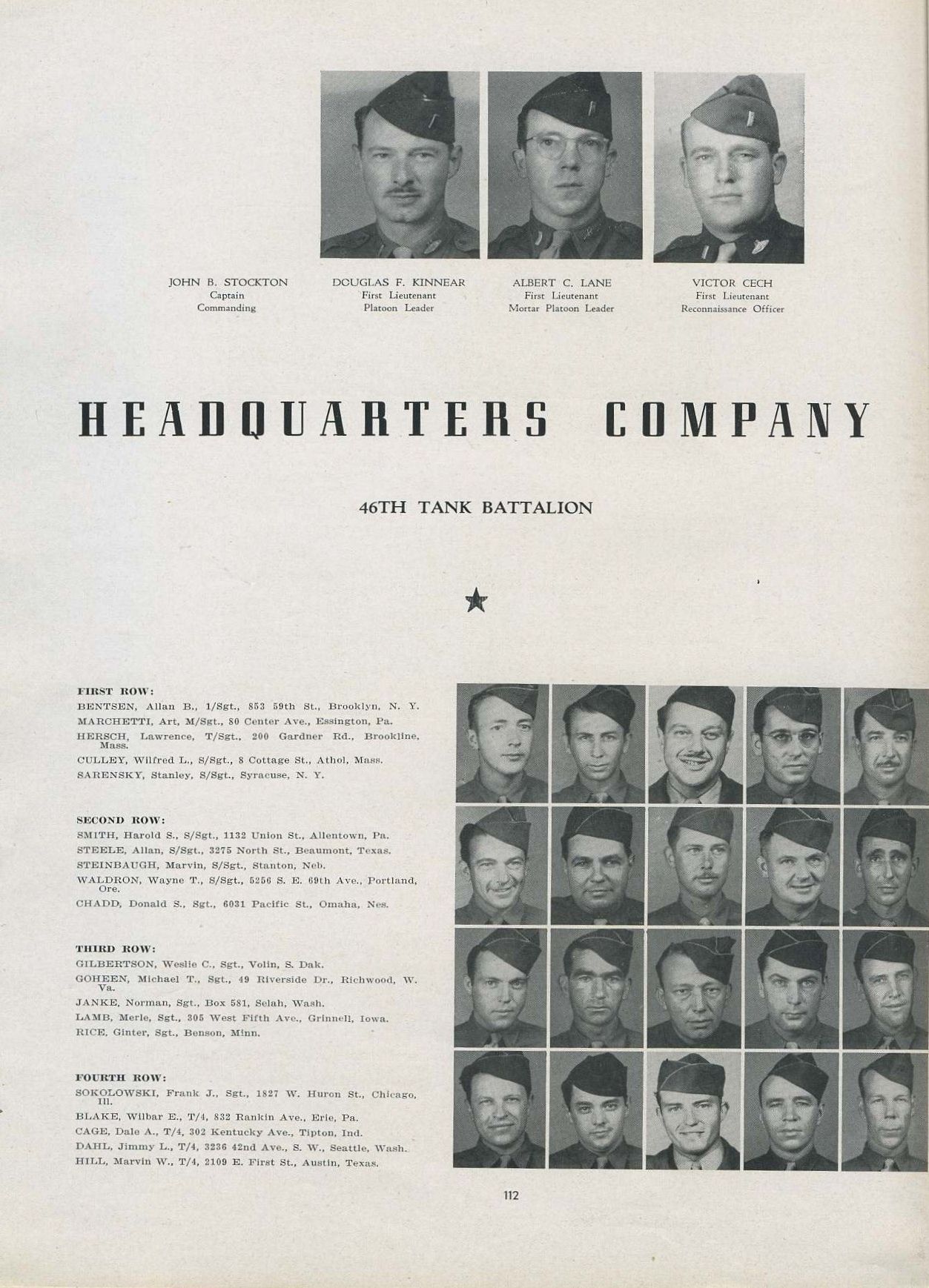
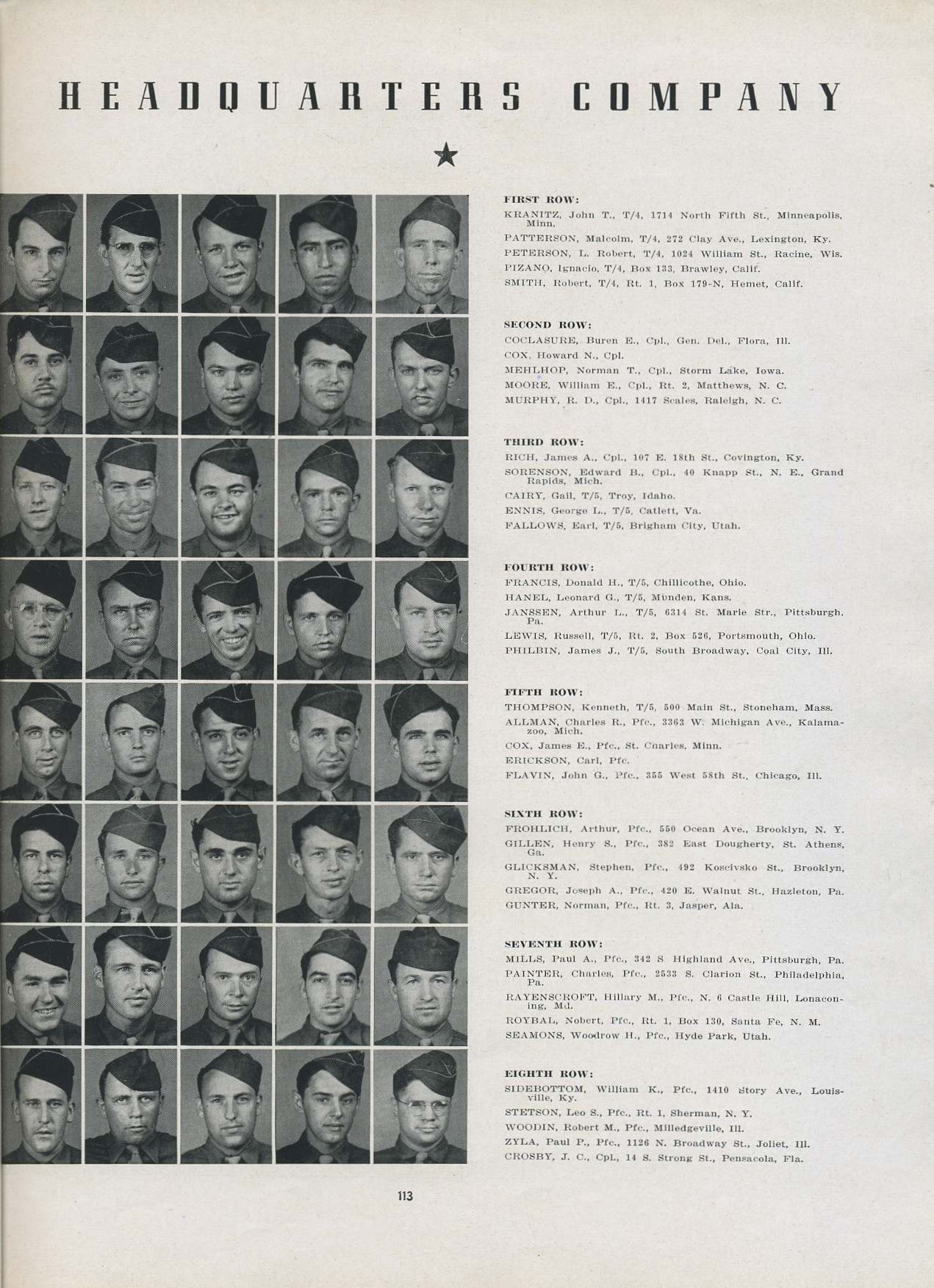
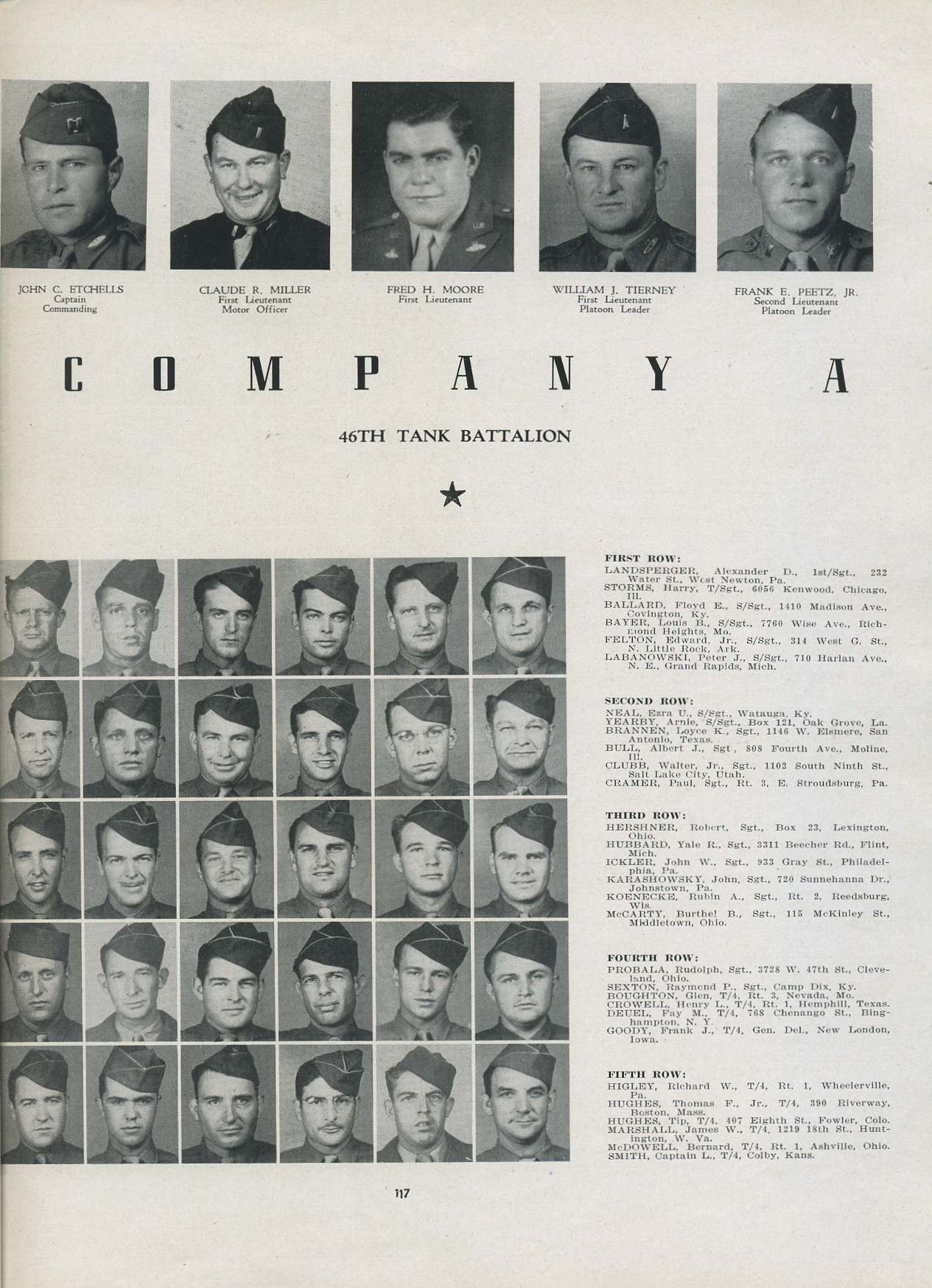
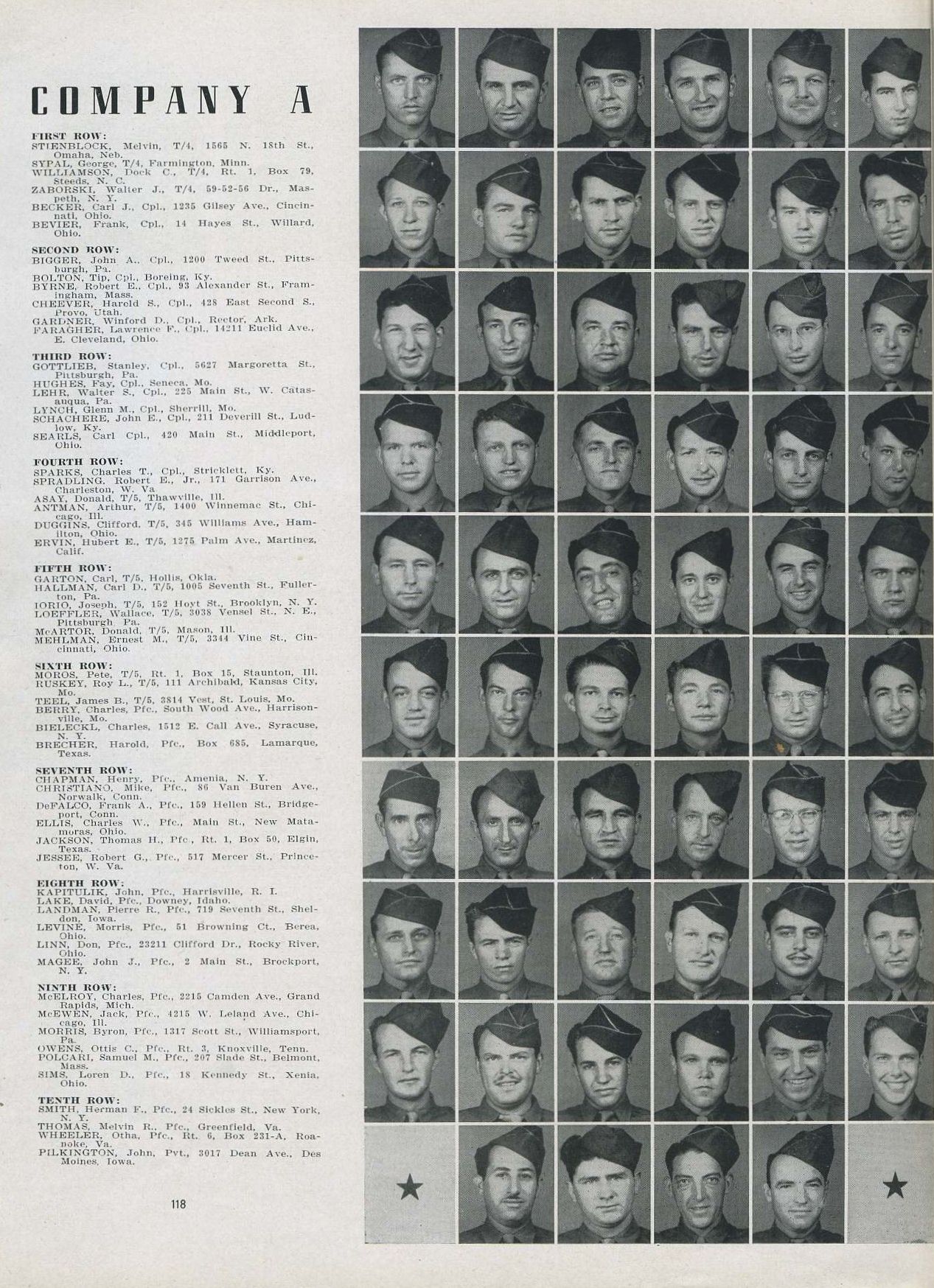
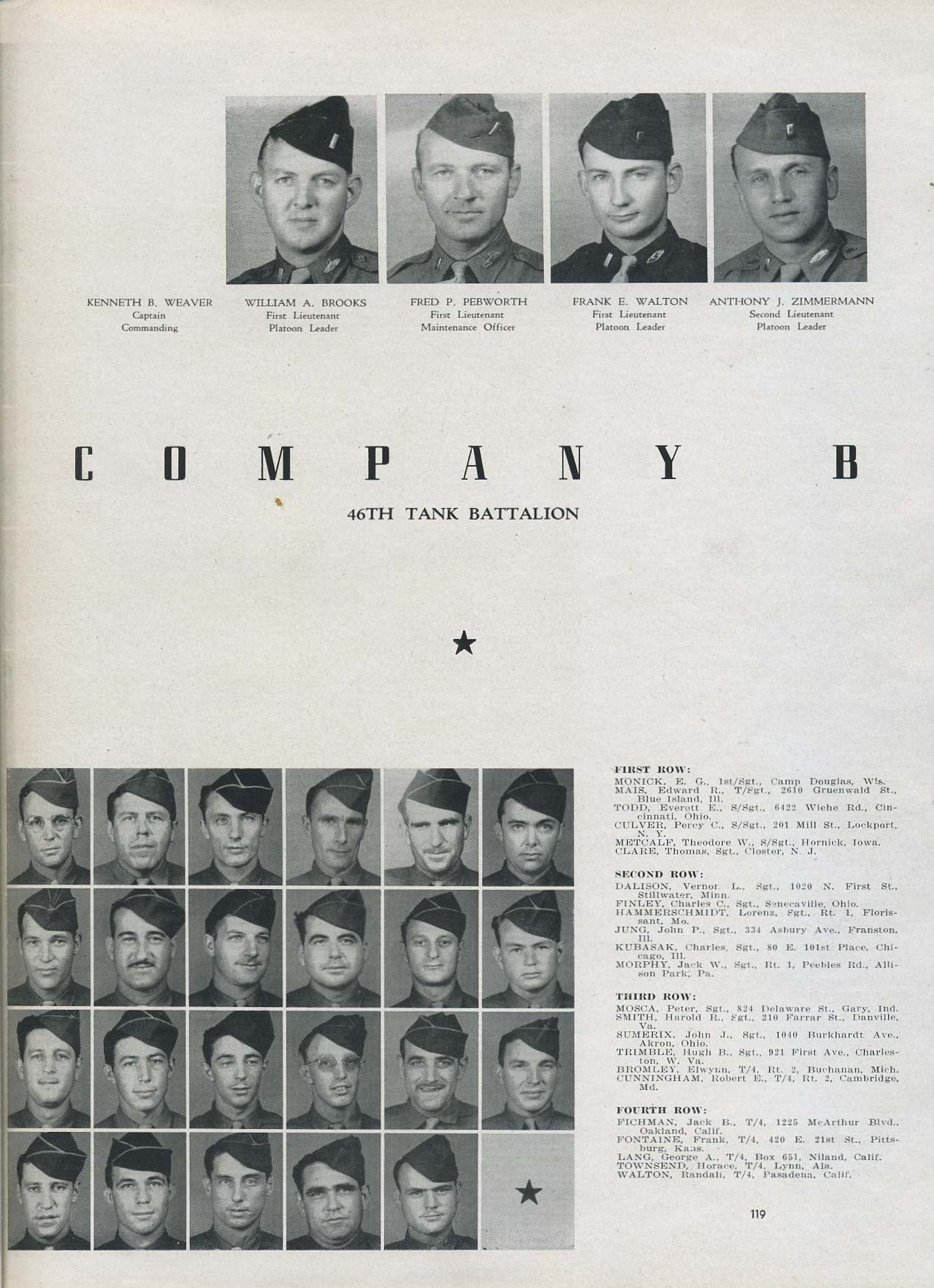
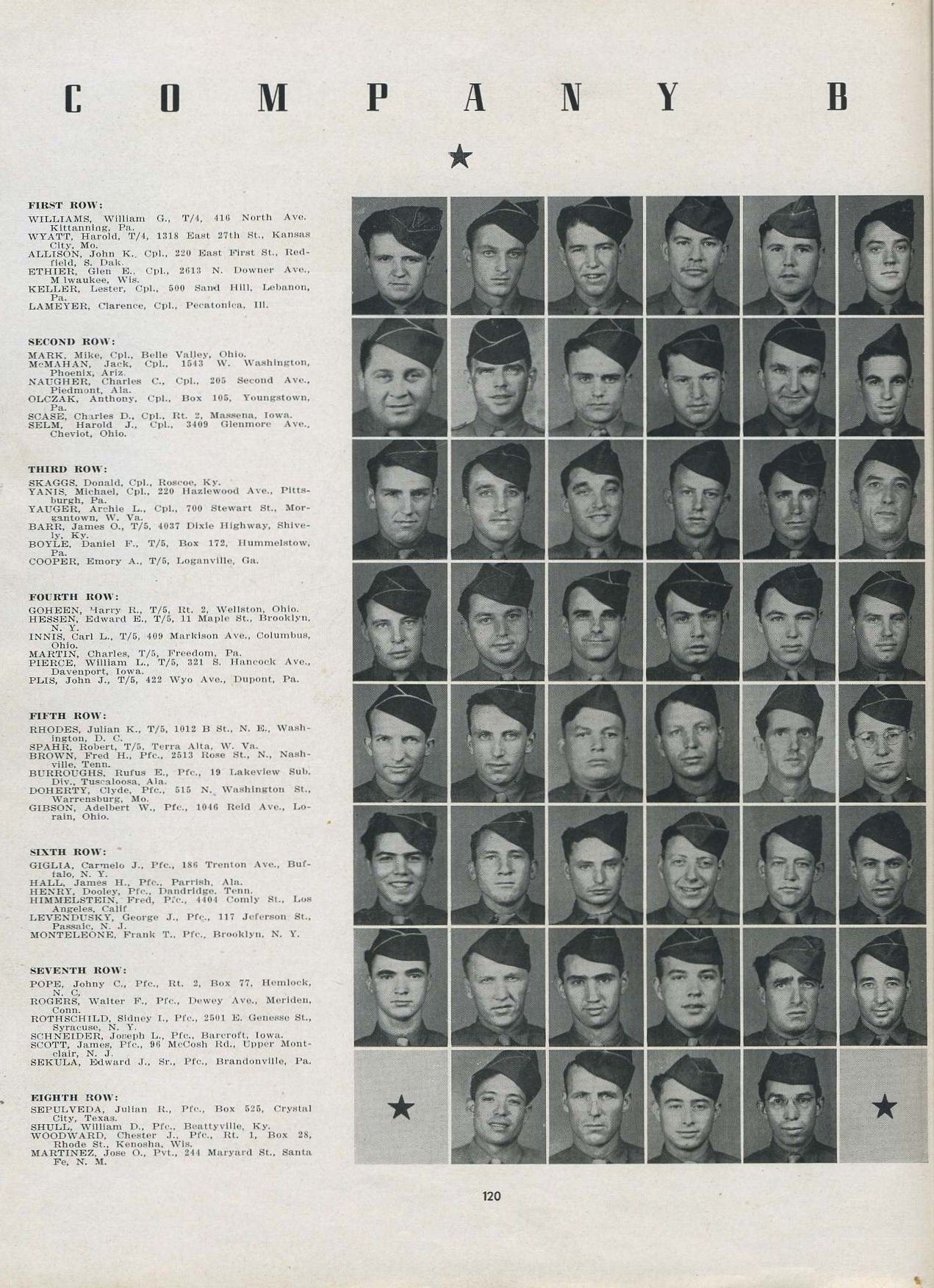
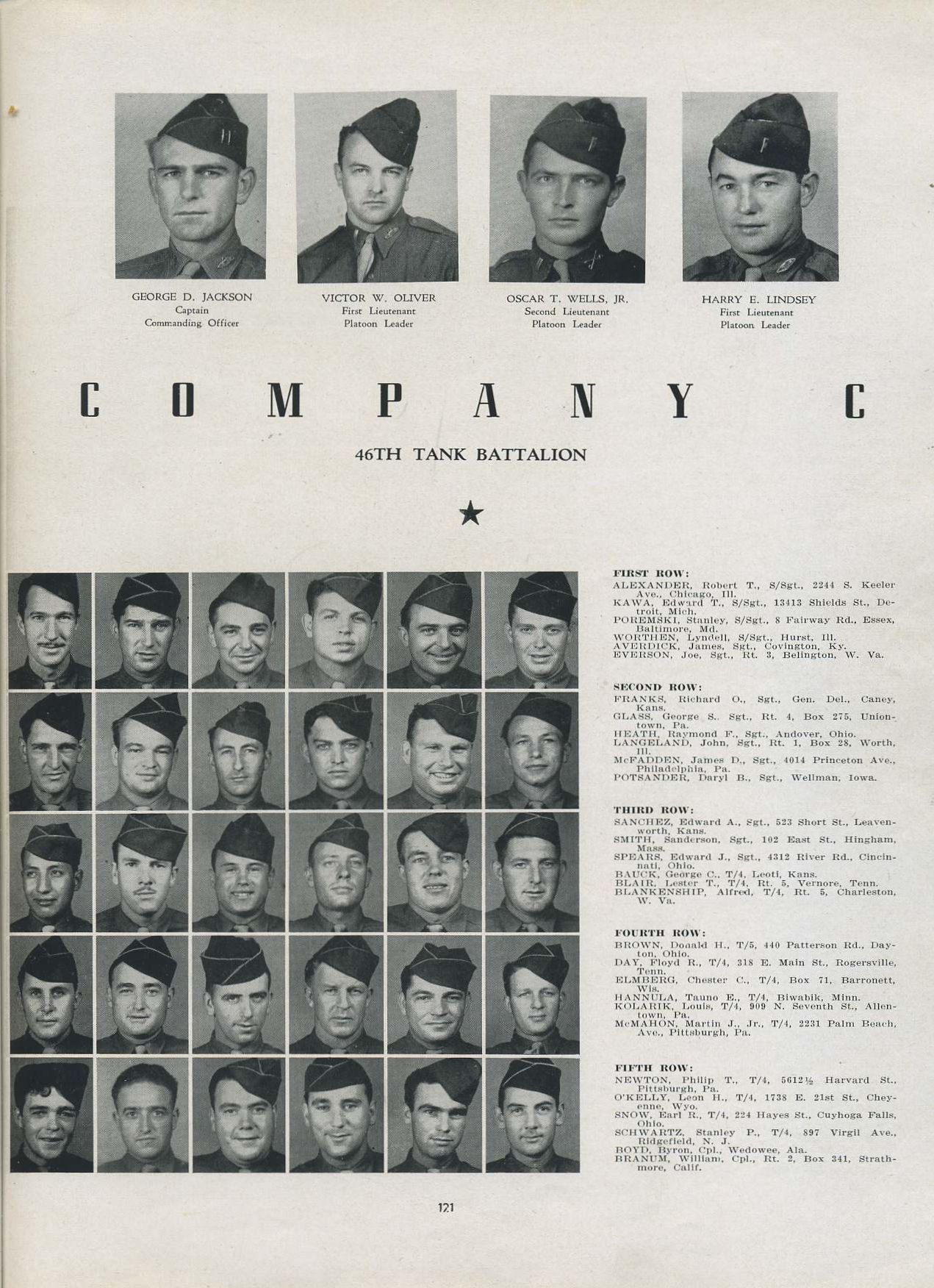
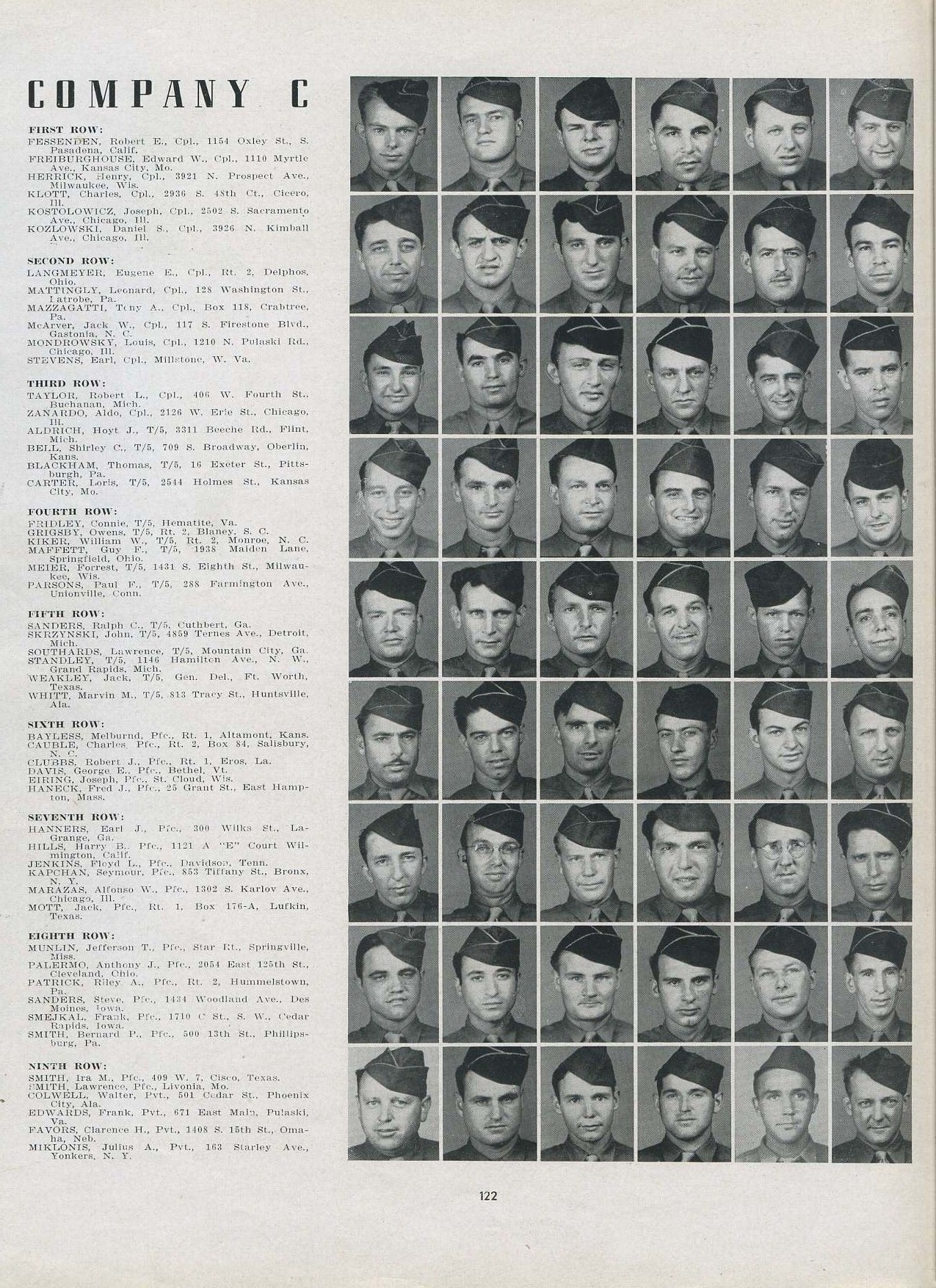
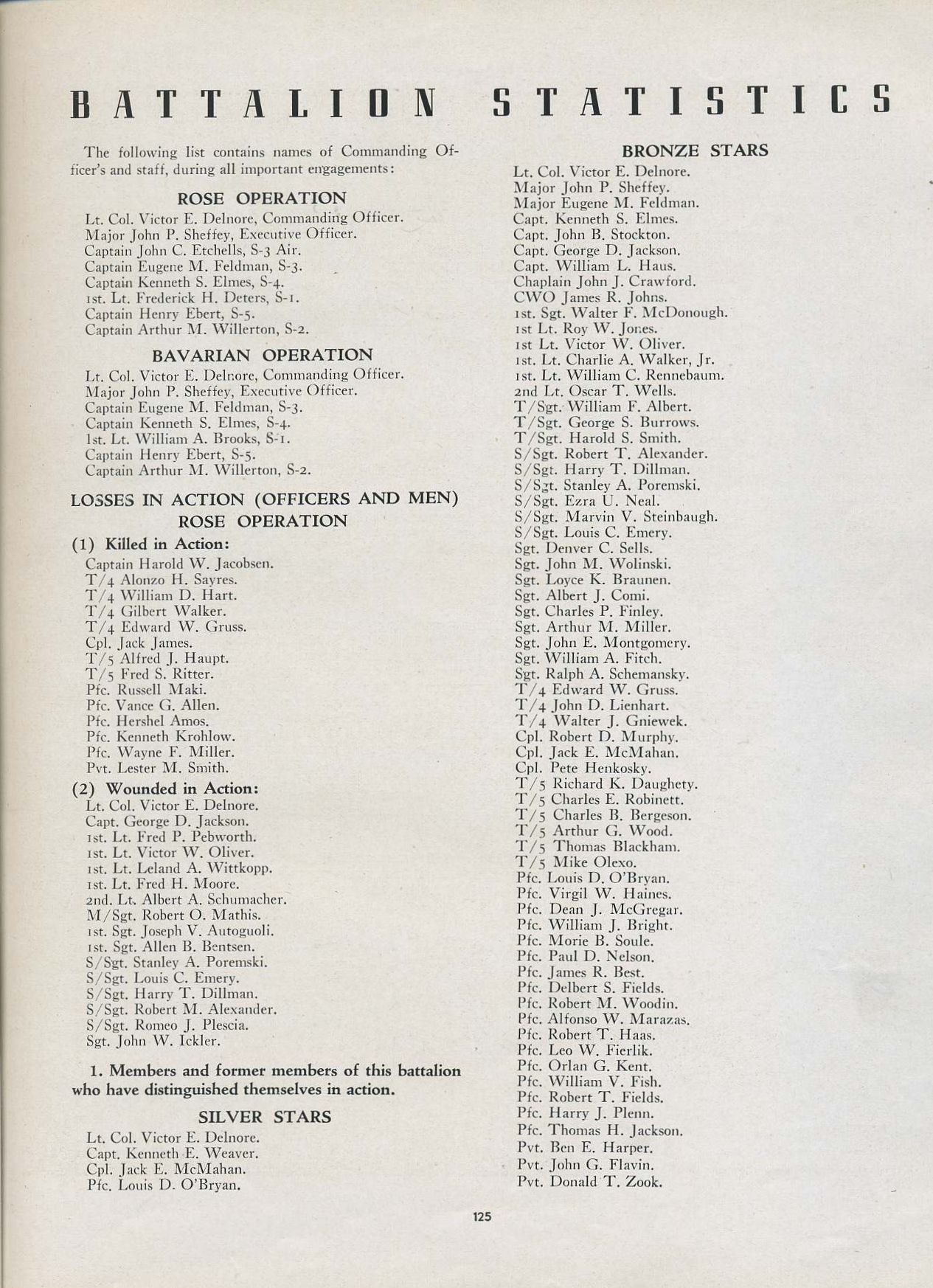
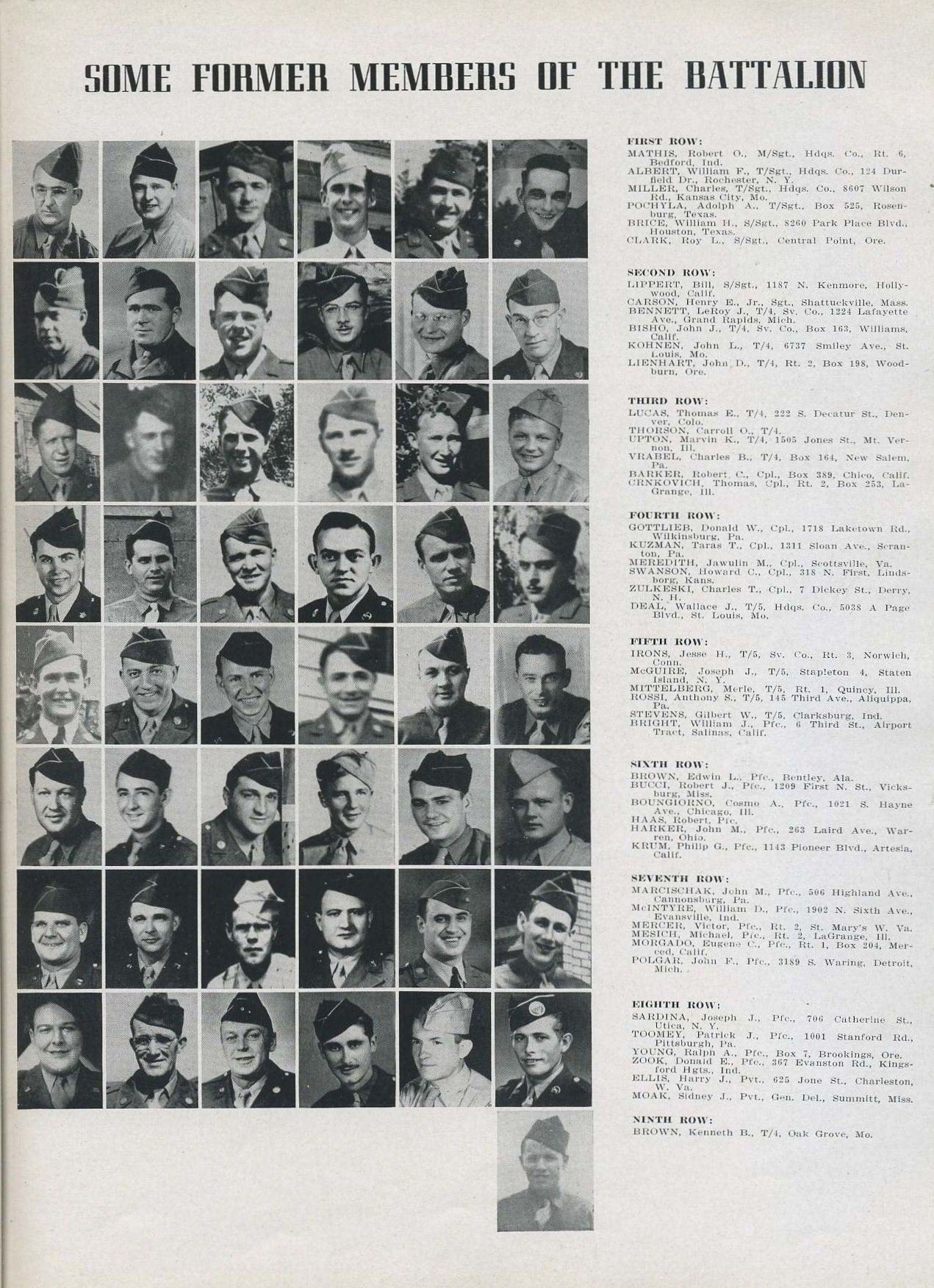 ___________________________________________________________________________________________________________________________________
___________________________________________________________________________________________________________________________________As the SS ‘Sea Quail’ slid through the tortuous, war-damaged inlets of Le Havre, France, on 29 January 1945, the 700 tankers of Lt. Col. Delnore’s 46th Tank Battalion thought as one man: ‘This is it. This is the pay-off.’ Hereafter the events of the boat ride, and the grueling training of Camp Bowie, Texas, and Camp Beale, California, were past history. A new and serious phase in each man’s life was to begin. It began on the pitch-black night of 31 January when the battalion debarked, found itself on the dimmed-out, shattered streets of Le Havre, and marched away into the darkness. A six-hour ride in ‘forty and eights’ and GI trucks carried us to our billeting area in the vicinity of Beaunay, a picturesque little village in Normandy. In this area we lived six weeks in homes and barns of the French. At night we spent happy moments in the cafes of Dieppe and Rouen, learned enough French to flirt with the girls and barter with the merchants, while by day we prepared our vehicles for combat and ourselves for the more harried life that was soon to come.
The 46th Tank Battalion received orders on 15 March 1945, to march some 300 miles to the vicinity of Avricourt, France, to wait in reserve while units of the U.S. Seventh Army crossed the Rhine River. In preparation for any impending combat mission, the 46th was formed together with the addition of ’C’ Company, 67th Armored Infantry Battalion. It lost its ‘A’ and ‘B’ Companies to Task Force Satt, a similar fighting team, organized from the 67th Armored Infantry Battalion; and it lost its ‘D’ Company to Combat Command ‘A’ reserve.
Task Force Delnore was designed to be split into self-sufficient subsidiary task forces, and as such was to help force the collapse of the Ruhr Pocket and to storm a path through Germany to the Inn River, which separated Germany from Austria.
During the last days of March and the first days of April we expected at any time to be ordered against the enemy. General Patton’s Third Army had driven far and fast, and we were anxious to be a part of that great armored spear-head, thrusting rapidly, deeper into Germany. Instead we were given ‘policing’ tasks. In the Homburg-Schorenburg area, we assisted in the movement of some 5,000 displaced personnel to a concentration area. 1 April, Task Force Delnore was ordered to the Kirchbesg-Simmern area where it aided in the control of displaced persons camps consisting of Poles and Russians. On 6 April, after being assigned to the Third U.S. Army, we packed our baggage again and were ordered to the Alsfeld area, and then on to Beiseforth, Germany, a march of 174 miles, where we again supported the military government, and prepared our vehicles for action. Shortly, the 13th Armored Division was assigned to the U.S. First Army, and Task force Delnore, under orders, backtracked from Beisforth to the vicinity of Altenkirchen, about twenty miles south of the Sieg River, the southern boundary of the Ruhr Pocket.
There on 10 April 1945, in the middle of the night, after two days and nights without sleep, and after a fatiguing march, orders were received to cross the Sieg River at Hennef. For this operation, the first platoon of ‘A’ Company, 124th Armored Engineer Battalion, and a platoon of 90-mm tank destroyers from the 630th Tank Destroyer Battalion were added to the task force, which was broken down into two subsidiary tank-infantry teams: Task Force Sheffy and Task Force Feldman. Task Force Delnore with Task Force Sheffey in the lead spear-headed the Division in a northward attack on 10 April 1945. Soon our radios announced contact with the enemy. Near the rolling river country of Diessem we received our baptism of fire from concealed 88 and 20 mm. AA-AT guns,. The casualty toll of several tanks damaged, two men killed and twenty-five wounded was indicative of the fierce fighting of that first engagement. However, under the thorough artillery preparation of the 498th Field Artillery Battalion, a coordinated attack was launched the following day. By nightfall we had seized Diessem, Birk, Inger, Algert, and Breidt, villages that will bear the scars of war foryears. This mission accomplished, Task Force Delnore marched next day via Lohmar, passing to the left of Task Force Satt and sped northwest, liberating in its path 1,400 Allied prisoners. Stopping at Rath, Germany, the night of 13 April, continually harassed by intermittent enemy artillery fire, the task force took 70 prisoners, cleared Rath the following morning and continued north towards Pafrath, clearing the towns en route of enemy resistance.
The battalion staff journals were being filled with events as the task force raced to finish off the strangling Pocket. 13 April the Task Force was augmented by the addition of Companies A and D of the 46th Tank Battalion and Company A, 67th Armored Infantry Battalion. 14 April saw the race across Wupper River when we led the Division along the autobahn and road nets which were the lifelines of the industrial cities of the Rhine Valley. At Manfort our leading elements encountered a bridge-road block over the Dhunn River, strongly defended by small arms and artillery fire. Here German bullets wounded our Division Commander, General Wogan, the Battalion Commander Lieutenant Colonel Delnore, and the ‘C’ Company Commander, Captain Jackson. The road block was reduced and by-passed, and our column moved inot Leverkusen. One 67th Infantry half-track blew up on a mine and three of our half-tracks were knocked out by 88 mm. fire, but we finally succeeded in fording the Wupper River which was constantly subjected to 88 and 20 mm fire. Captain Jacobsen was killed in Hassels when his tank column was hit with panzerfausts and 20 mm fire.
A highlight of the Ruhr Campaign was the capture of the German Headquarters at Mudlinghoven. On 17 April the 46th Tank Battalion’s reconnaissance platoon of eleven men, under the personal command of Lieutenant Colonel Delnore, captured two major generals, Rantzau and Sommerfeld, with their staffs, and forced the surrender of 600 Germans. For this action, Lieutenant Colonel Delnore received the Silver Star and his eleven reconnaissance men received Bronze Stars. The battalion was ordered to march to the Rhine River at Kaiserworth and thence to Gerresheim, finally halting at Mulheim, with the mission of supporting the Allied Military Government.
From 19 April to 22 April 1945, the battalion was constantly on the move, traveling 250 miles from Mulheim to Neunkirchen, stopping for the night at villages, sleeping in German beds, foraging for fresh eggs to supplement the tiresome ‘C’ and ‘K’ rations.
At Neunkirchen we reverted to the U.S. Third Army, repaired our battle-strained tanks and vehicles, heard General Patton’s address to the 13th Armored Division, and regrouped.
On a rainy morning of 27 April, Task Force Delnore crossed the Danube, a river swollen and muddy from rains. A 30 mile move to the vicinity of Seedorf was prolonged twenty hours by extremely hazardous and muddy roads. Here the task force was given the mission of seizing crossings over the Isar River. The ‘C’ Company task force commanded by Captain O’Malley was in the lead. Only small arms resistance and undefended road blocks were encountered. The bridges across the Isar in the vicinity of the town of Worth had been blown by the enemy, and small arms and artillery fire were received from the enemy side of the river. Many PWs were taken and 400 Allied prisoners of war were liberated in that town.
At 2230, 1 May 1945, Task Force Delnore, with orders to seize the crossings of the Inn River, moved out south and southwest in two columns behind a CCA screening detachment which included tanks from ‘Dog’ Company. Only small arms fire was met and our forces covered 65 miles by 1500, 2 May, leaving in their wake disorganized Hungarian troops and gathering 485 German PWs en route. This plunge brought the battalion to Simbach on the Inn River where the two bridges leading into Braunau, Austria, had been blown as the tankers approached.
Meanwhile the enemy forces were collapsing on all sides. It seemed only a matter of hours that the war would be over. Prisoners were surrendering in droves; white flags were fluttering from every window.
The dash into Austria was highlighted by the expedition of Captain ‘Lou’ Weaver, commander of Company ‘B’, in which her was instrumental in rescuing 15,000 Allied PWs, including 4,000 Americans, in camps southwest of Braunau. Infiltrating seven miles behind enemy lines, he arranged with the German prison commandant for the surrender of the PW camp. He then reported to higher headquarters where a formal surrender was affected. Captain Weaver and his driver, Corporal McMahan, both received the silver Star for this action.
With the end of the war on 8 May 1945, the battalion began the duties of assisting the Military Government in the Simbach area. The following eight weeks were spent there. In addition to military police duties the men were given every opportunity to relax. A recreation area was established in the Austrian Lake Country. Excursions were made to Chiemsee, Salzburg, Berchtesgaden and to the Austrian Lakes. Some men went to the French Riviera, others to Paris and to England. A riding stable was et up, a beer hall opened, and Austrian and German streams furnished many trout to supplement the army rations. Awards and citations were given, and final reports were completed. That 30 men received the purple heart, 63 the bronze star, four the silver star, attests to the energy and devotion to service displayed by the men and officers of the 46th Tank Battalion. After a staging period spent at Camp Atlanta, France, the battalion sailed from Le Havre on Bastille Day, 14 July 1945, concluding its history in the ETO.
Words will never fully describe our experiences, either good or bad, for how can we tell others what it is to fight an unseen enemy, to be first in an advance, to tell of the weariness, dirt, laughter, boredom, sorrow, and fear that the 700 men of the battalion shared in battle? Yet who will forget the trips to Paris, the cafes in Nancy, the life with the French in Normandy, the combat period, or the boat ride home? Let this history serve to remind us of what we have done and have seen, and to make us remember that our country and our beliefs are forever worth the price that was paid.
____________________________________________________________________________________________________________________________________
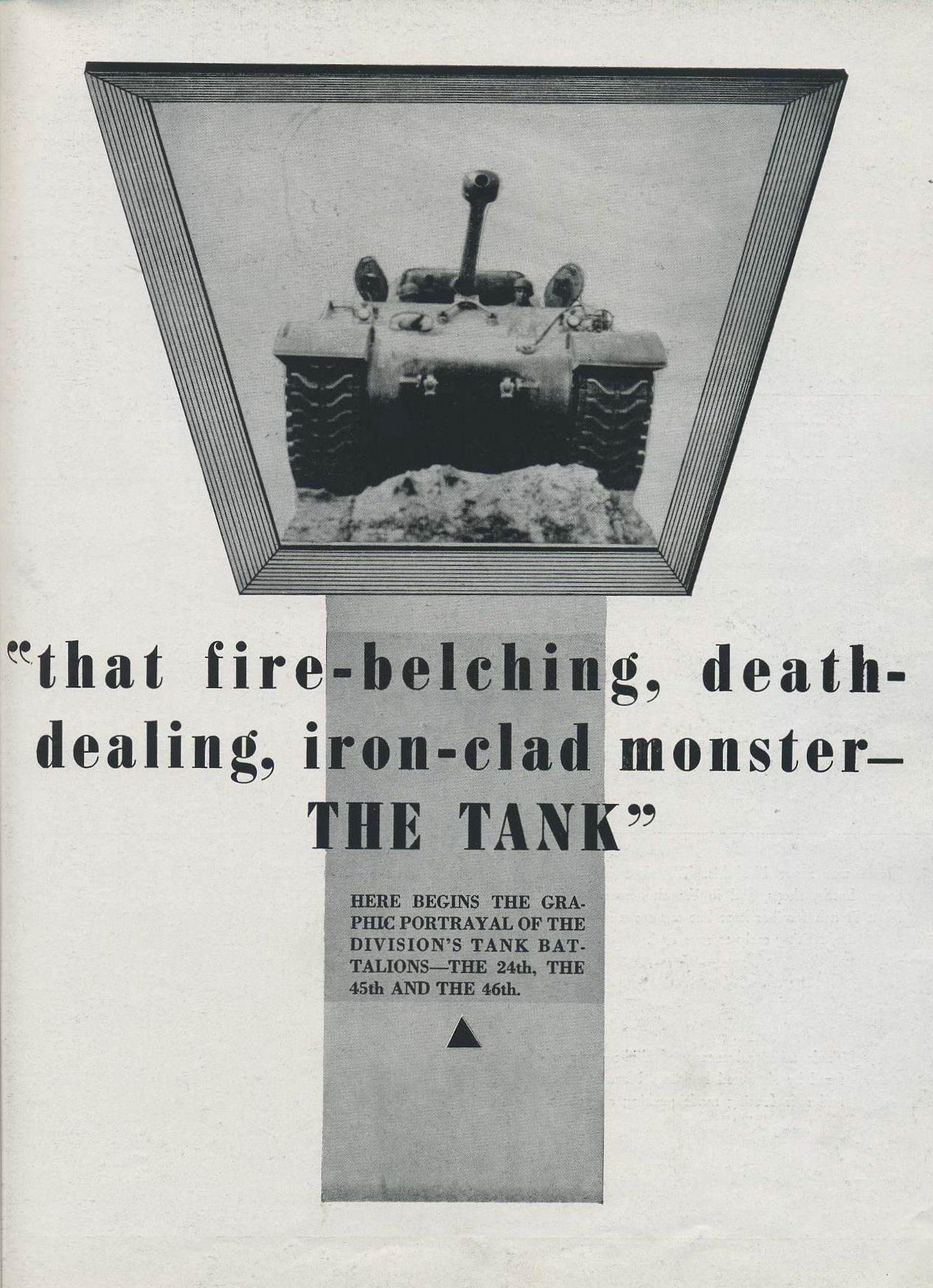
.jpg)
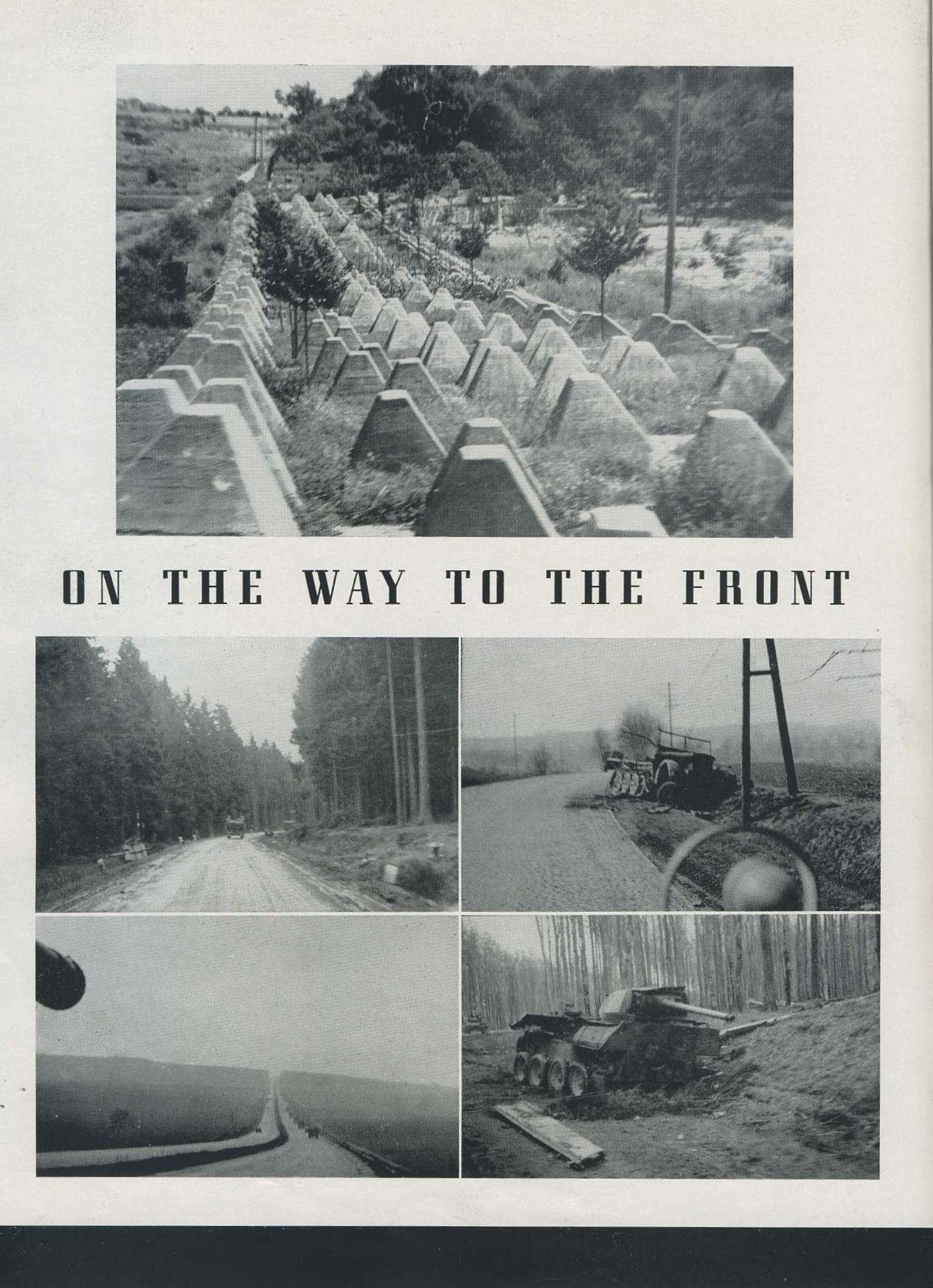
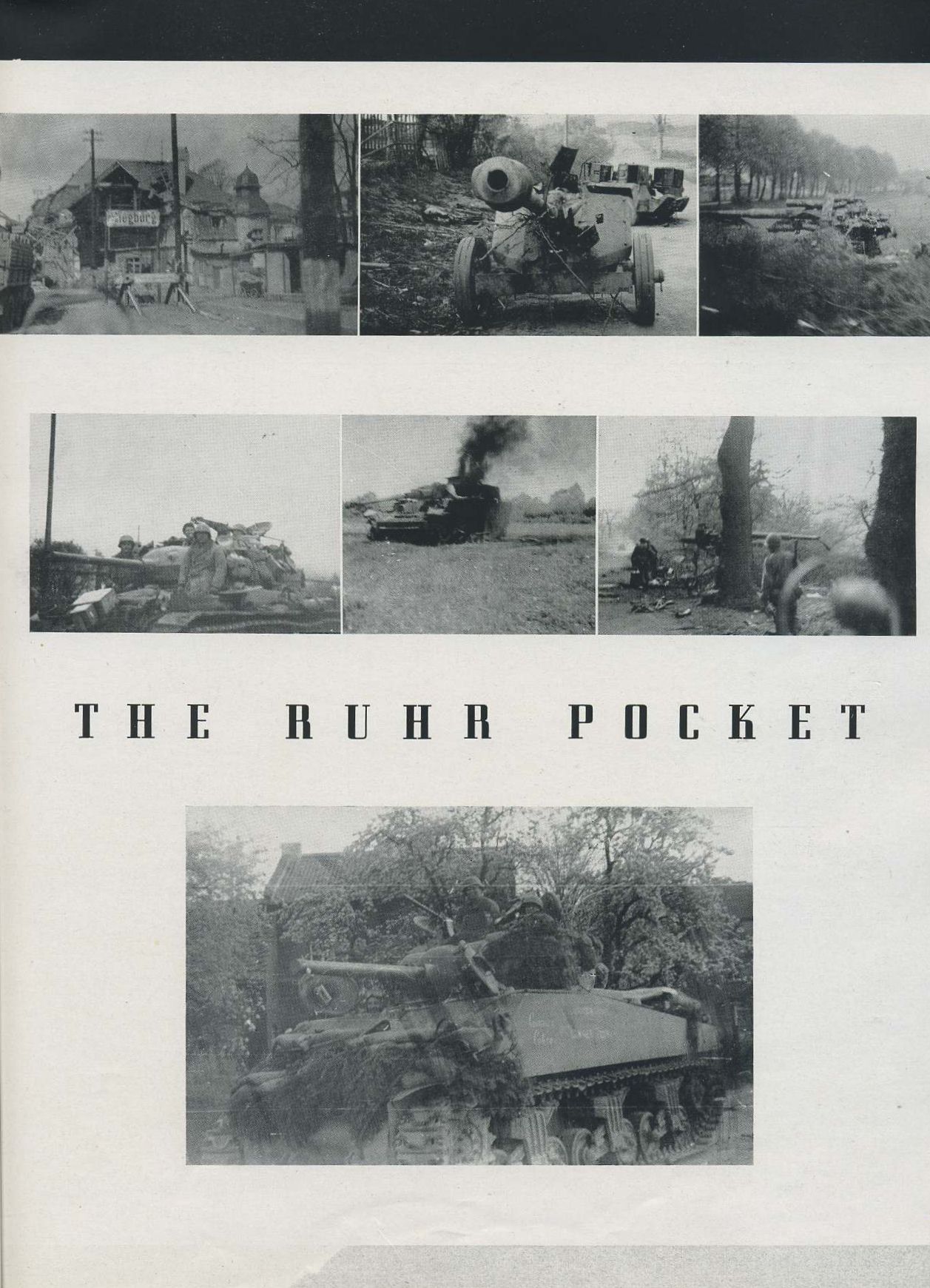
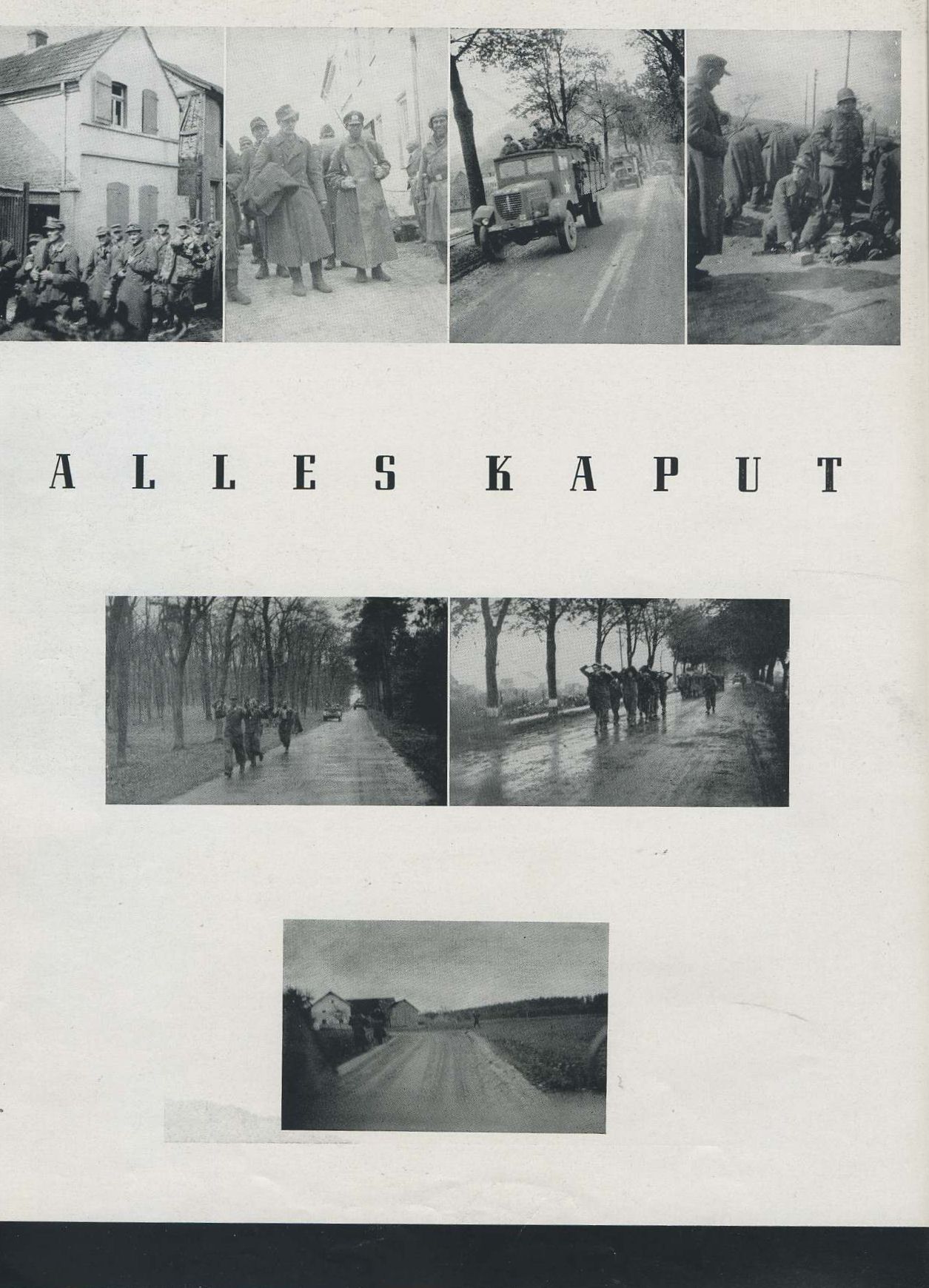
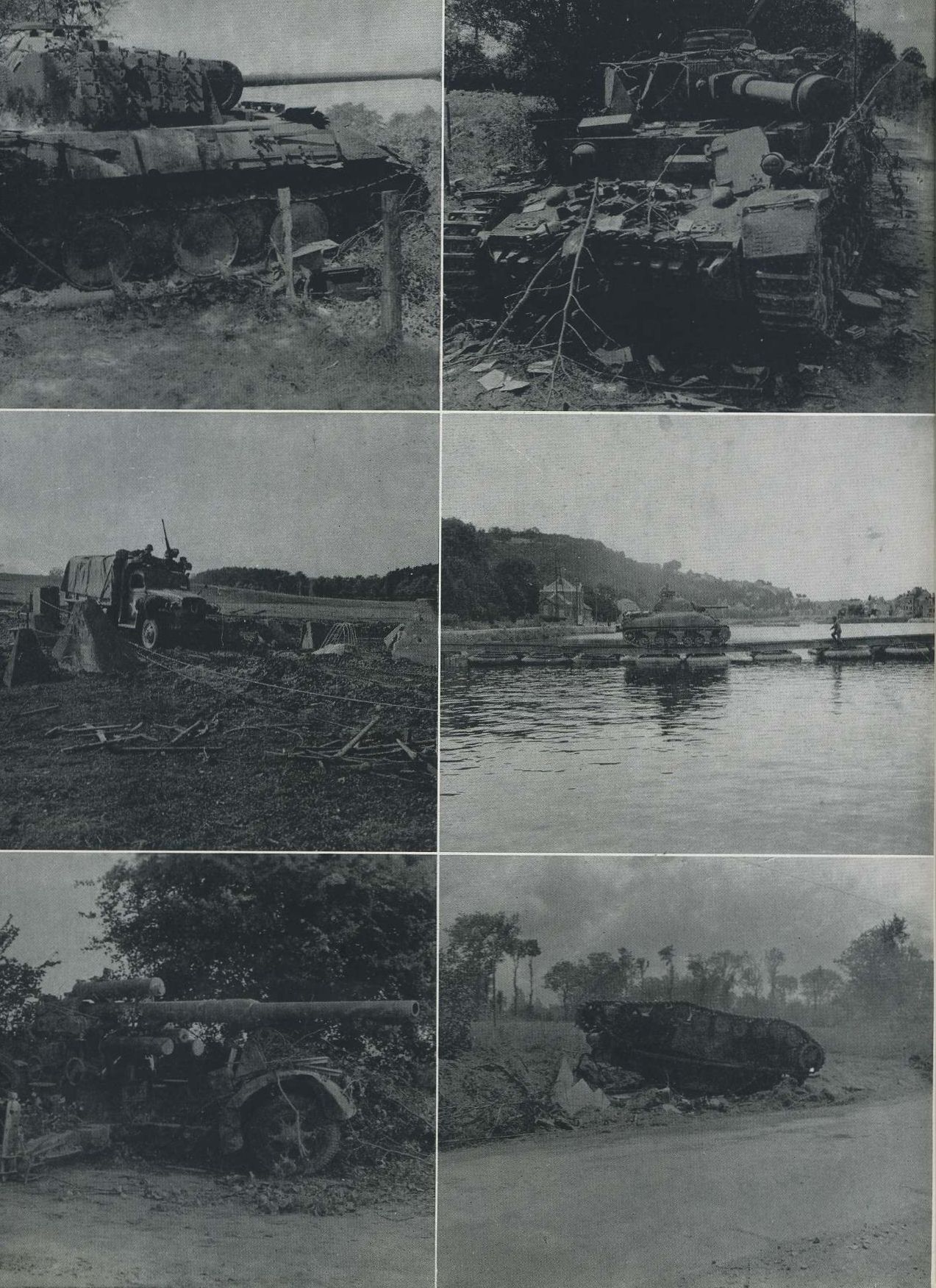
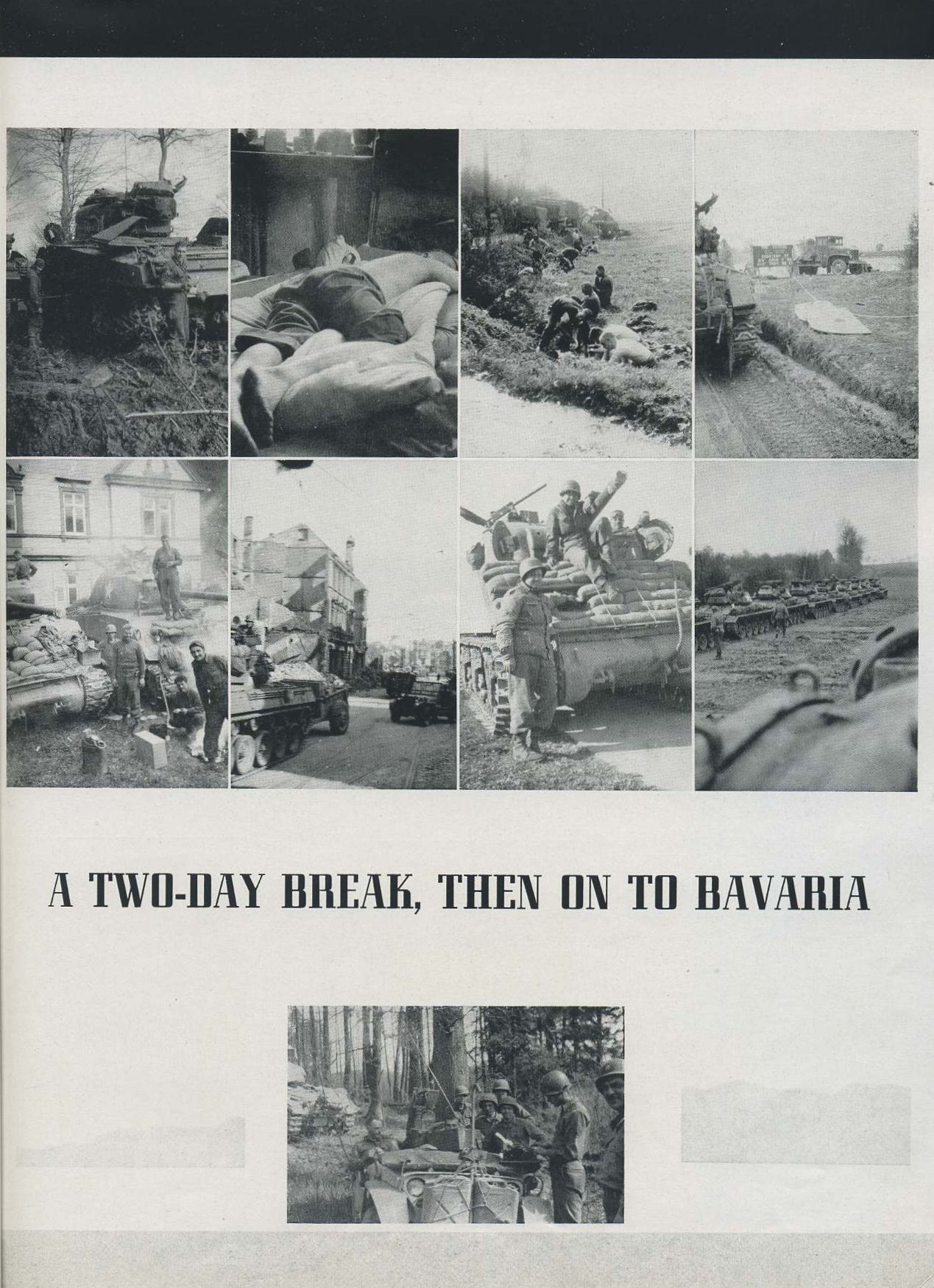
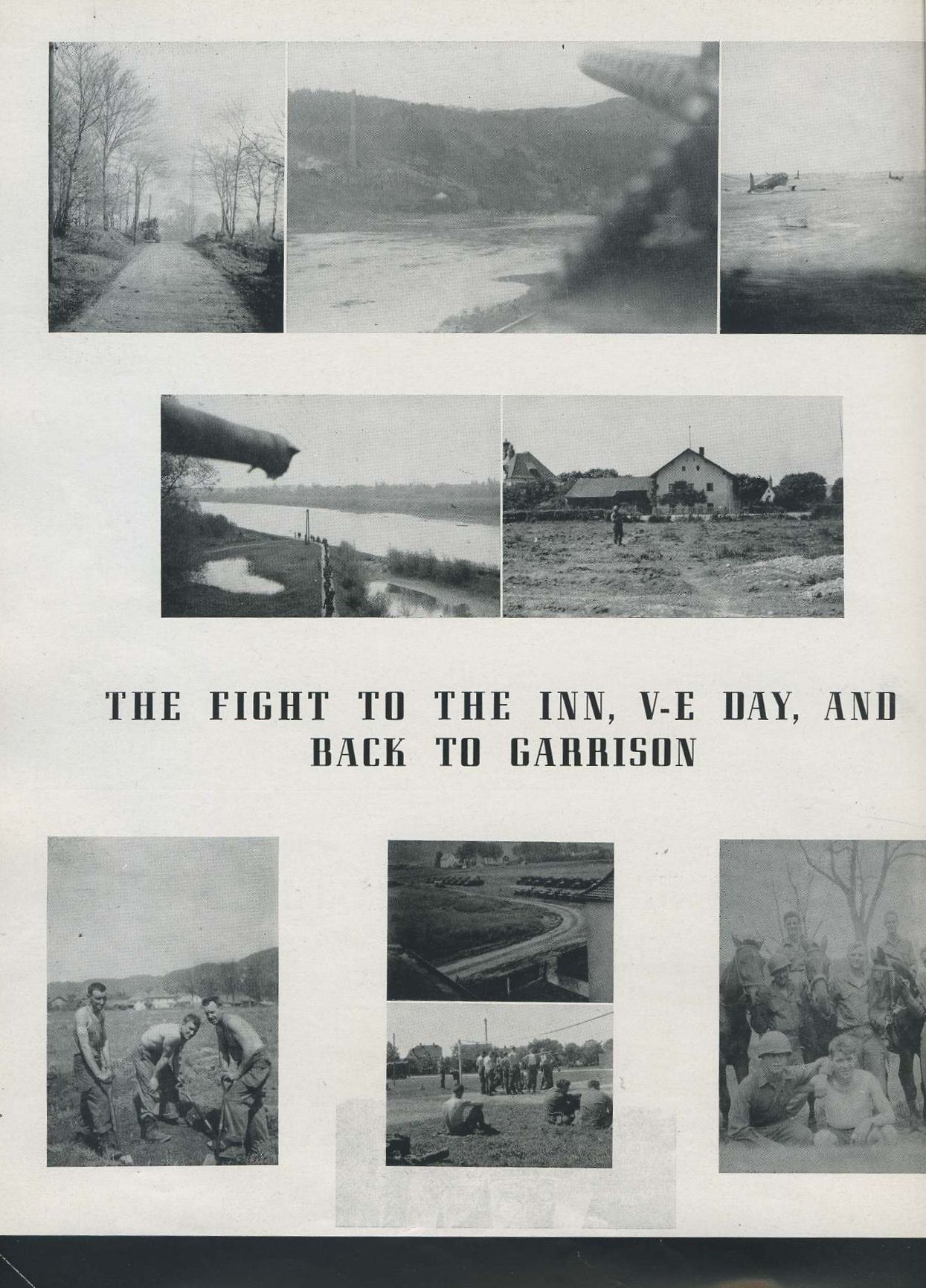
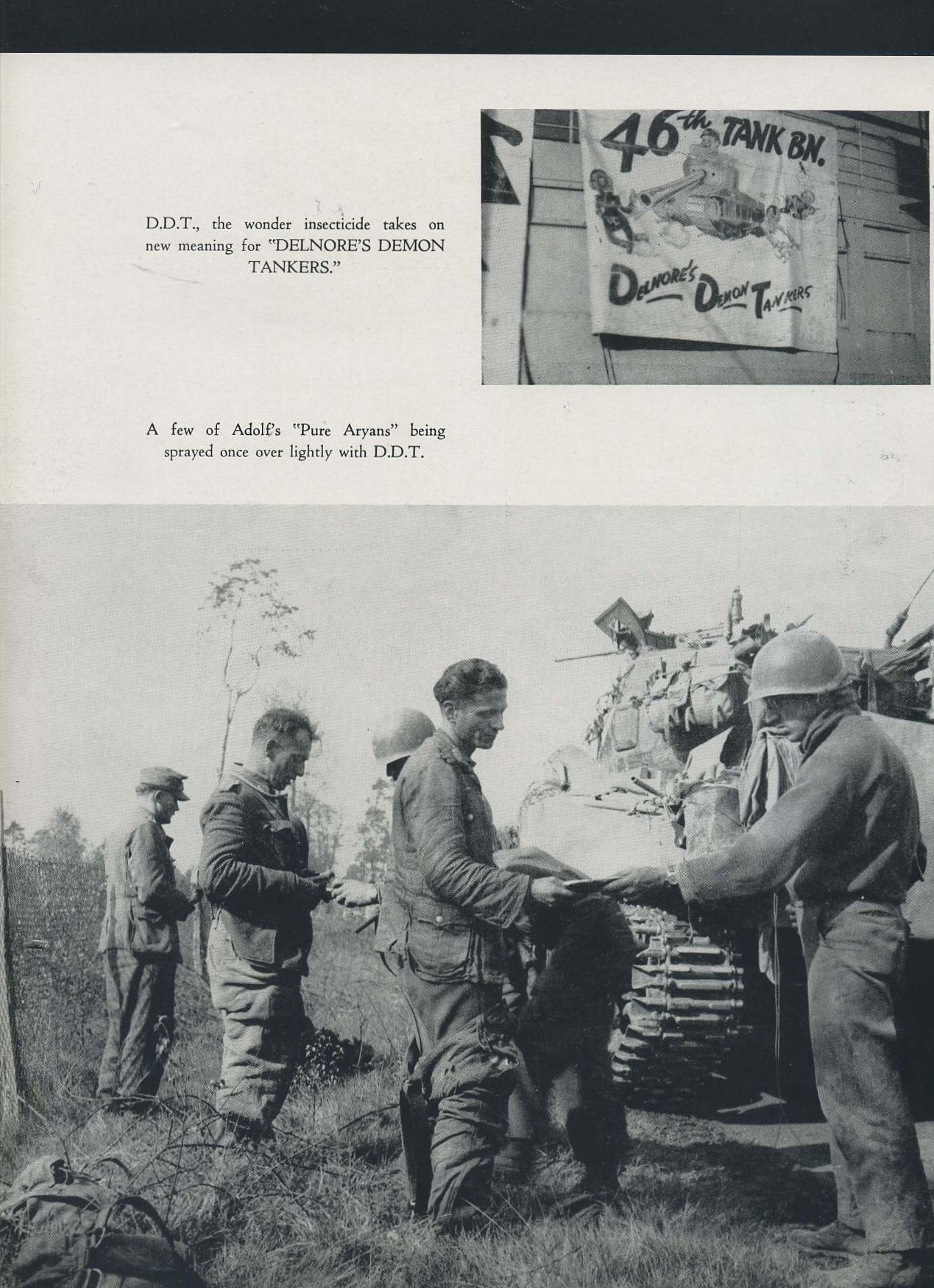

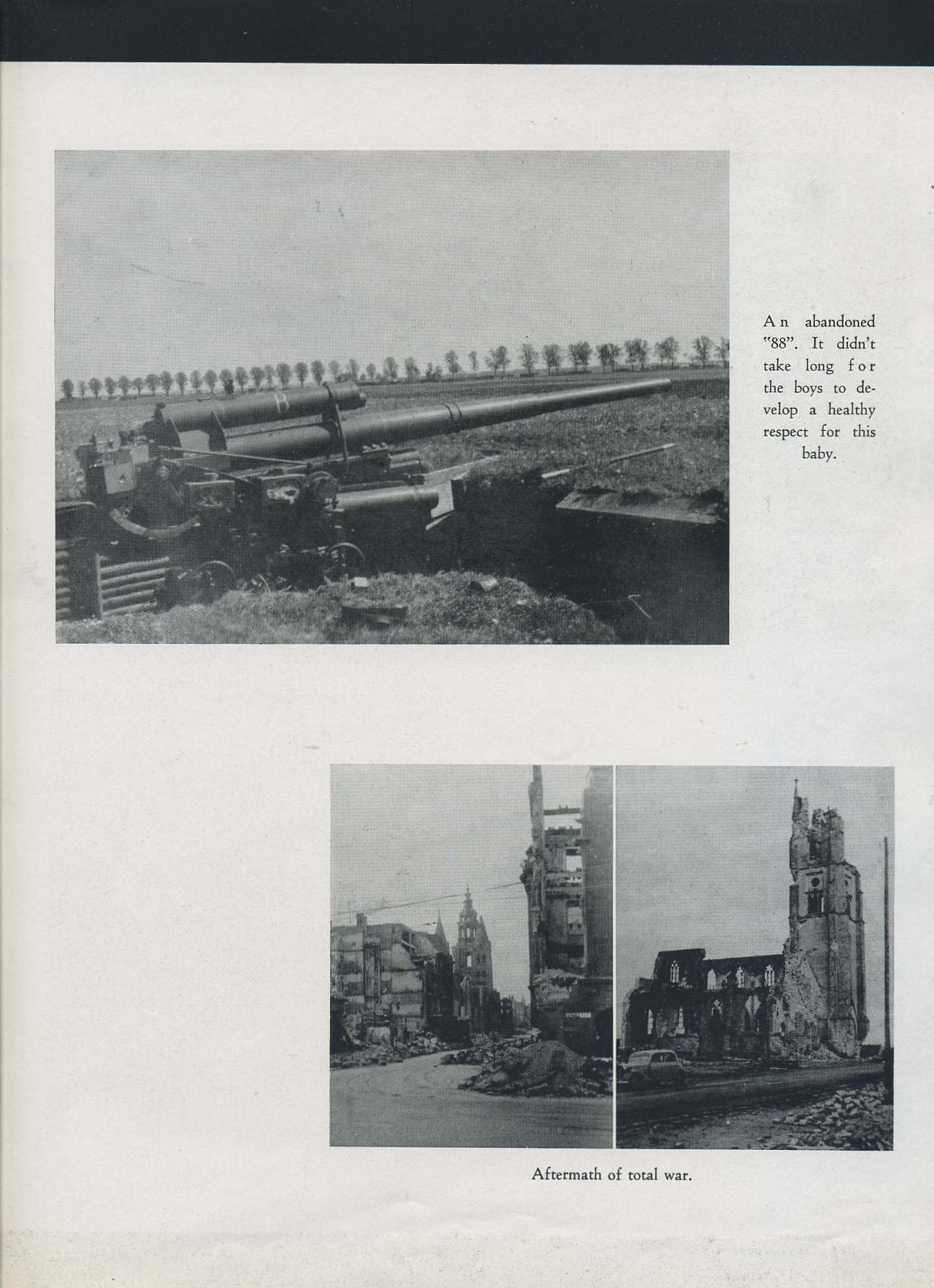
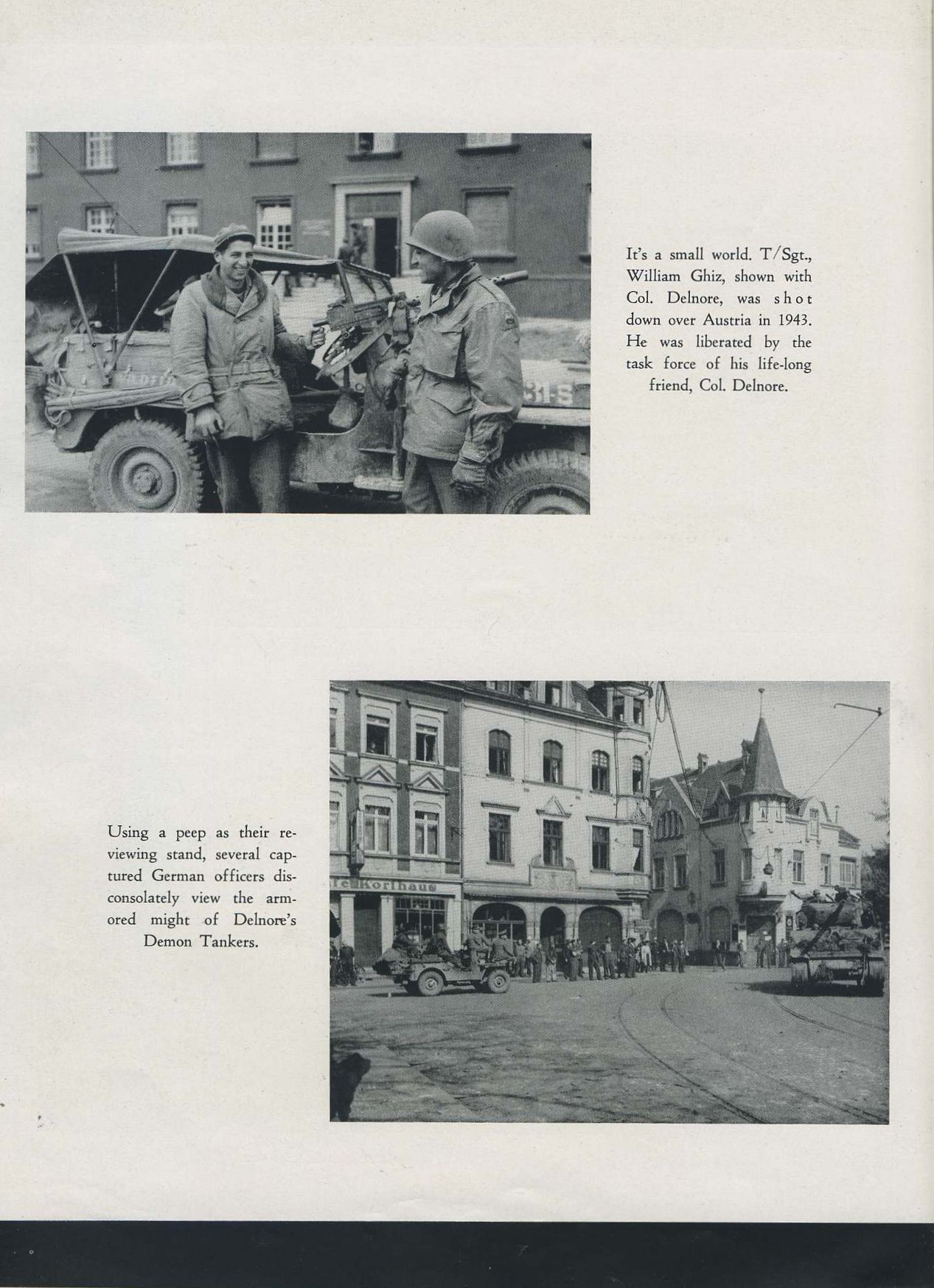
.jpg)
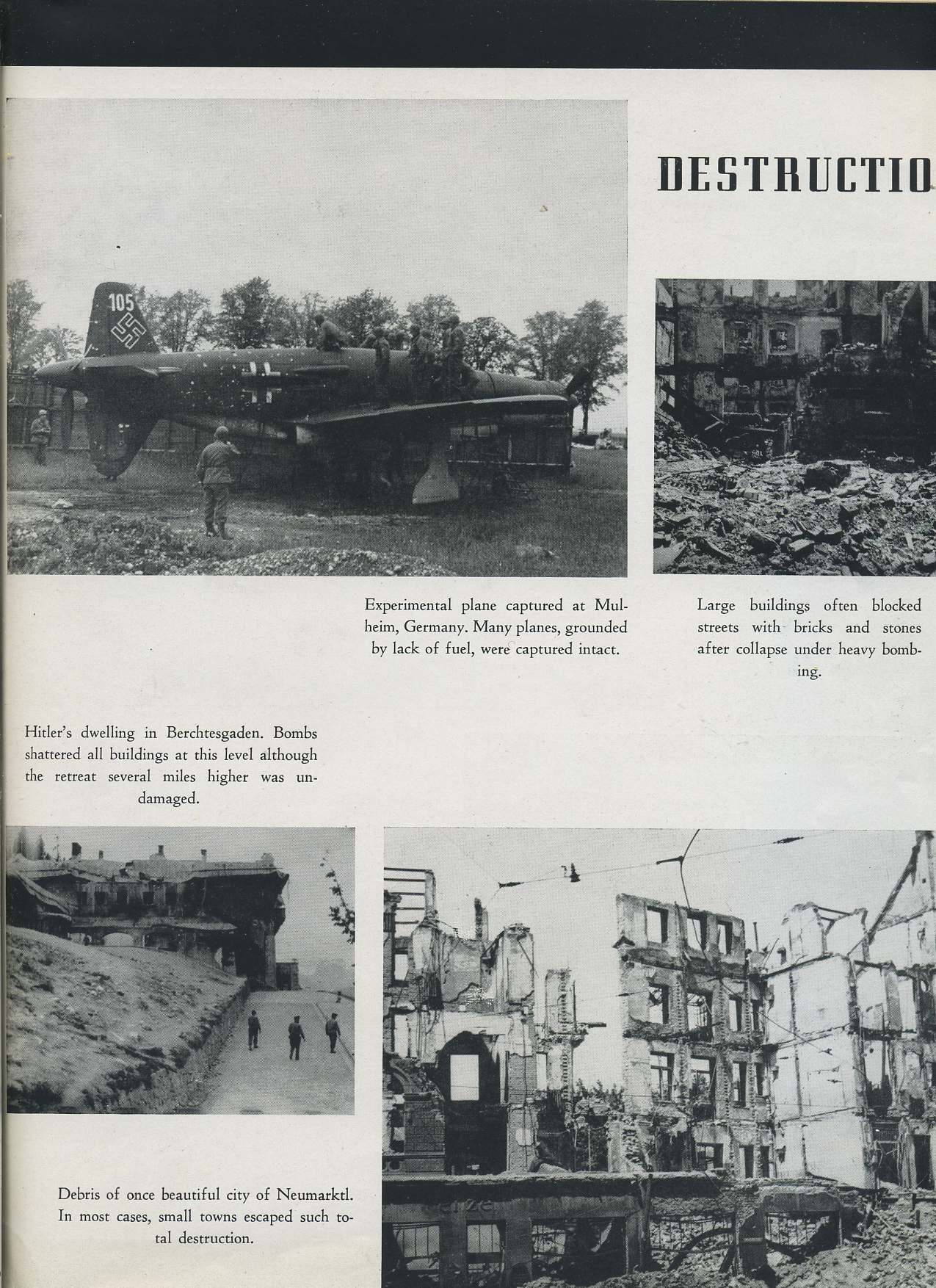
.jpg)
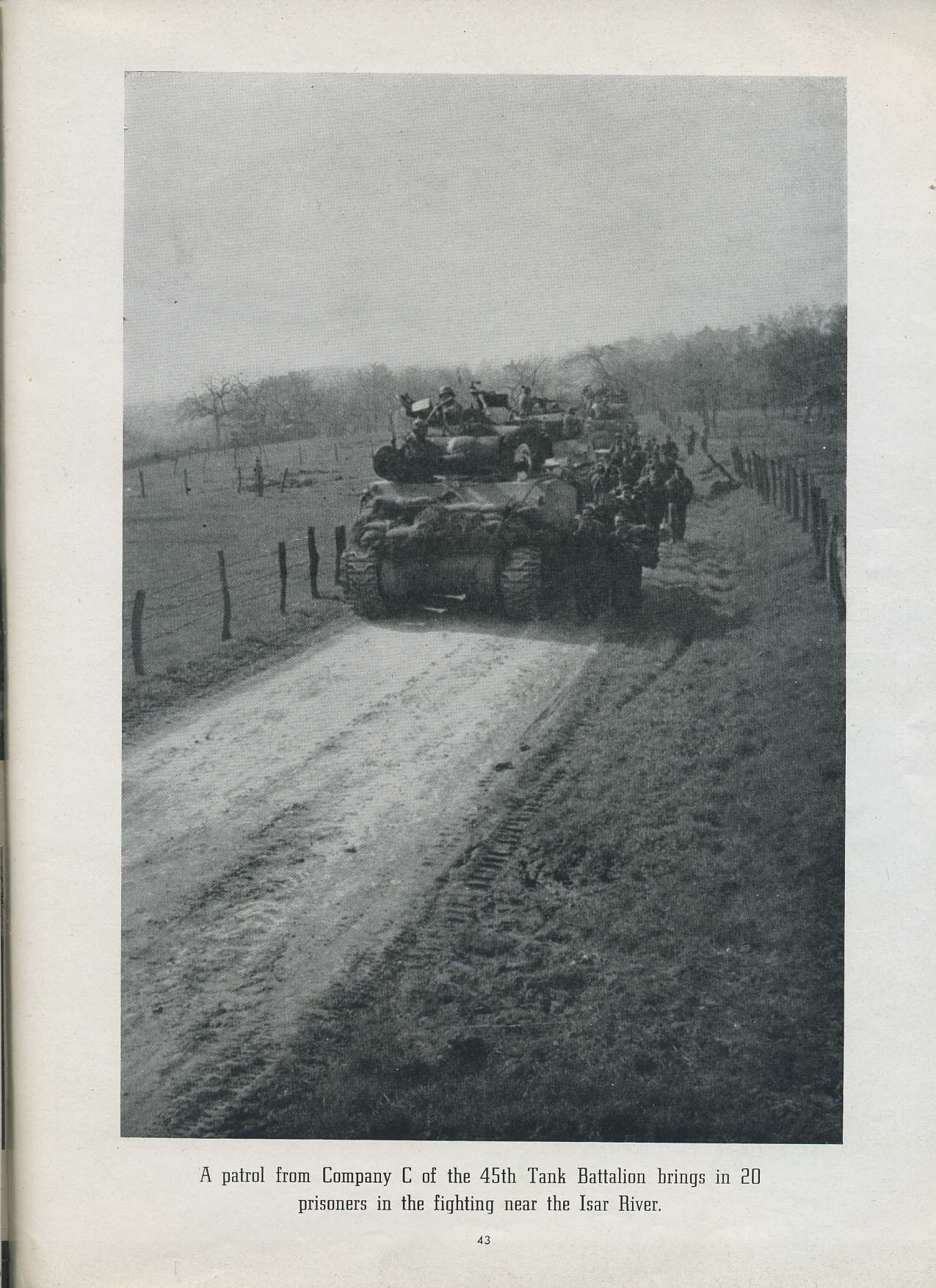
.jpg)
